when you want, where you want.
CJ Television
Who Ate Where: The Restaurants That Defined New York
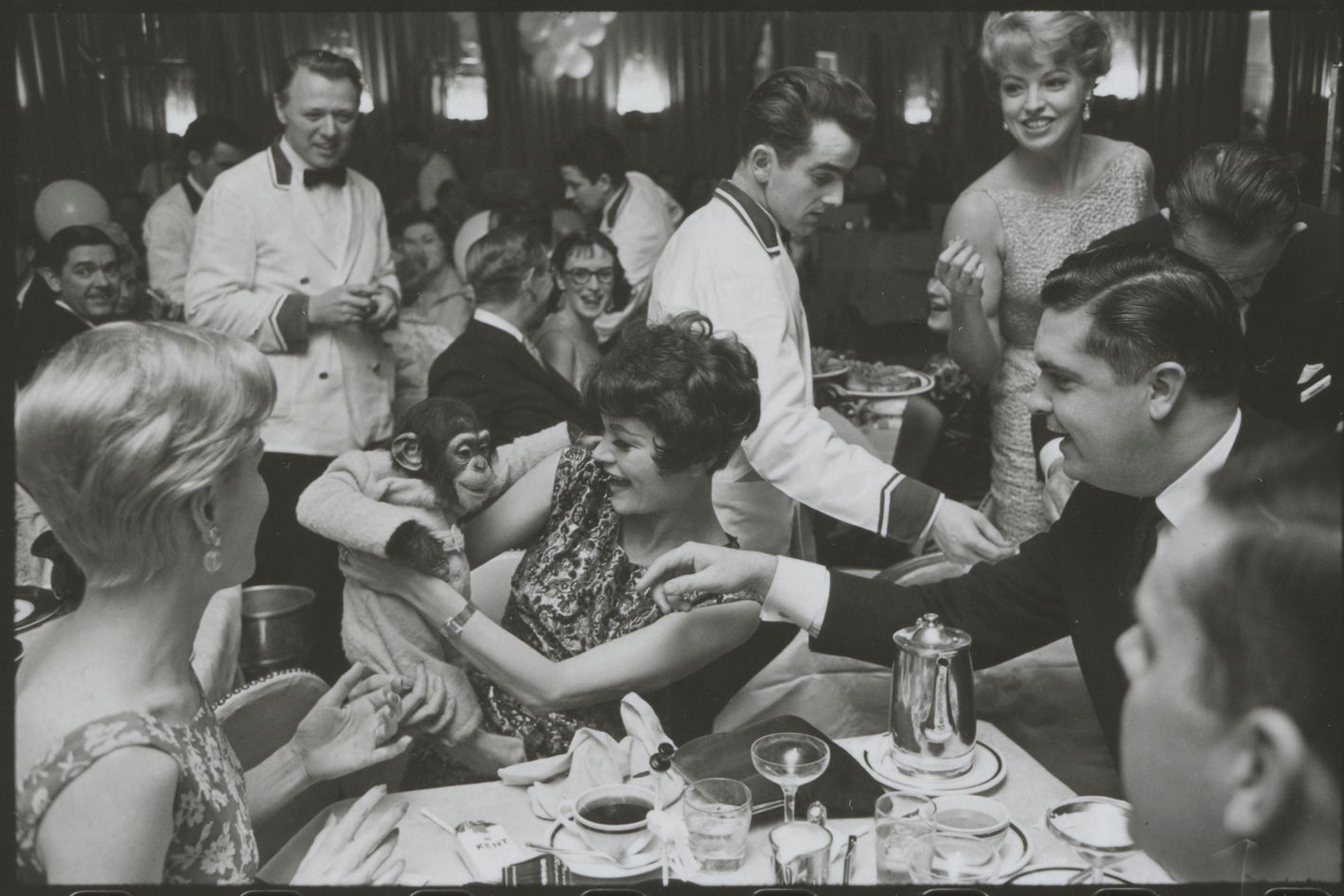 Photo: John Vachon/John Vachon (1914-1975) for Look
Photo: John Vachon/John Vachon (1914-1975) for Look
This article was featured in One Great Story, New York’s reading recommendation newsletter. Sign up here to get it nightly.
Go to any city in America and you can likely find a good Italian place, the hot Korean spot, and a semi-secret sushi counter. It’s only in New York that we have the rap-mogul restaurant, the supermodel café, the indie-director diner, and the club kids’ breakfast nook. We go to restaurants for oxtail or cocktails, but we also go to find our people. The great New York critic Vivian Gornick recently told my colleague Hilary Reid about the first time she was taken to Café Loup on West 13th Street by an editor: “He told me it was a ‘writer restaurant.’ I was thrilled. I thought, Oh boy, I’m being initiated.”
It was not always this way. As William Grimes writes in his 2009 book, Appetite City, the word restaurant entered popular usage only about 200 years ago. Paris was the western world’s culinary capital. New York subsisted on tavern grub: beef, bread, beer, oysters. Then the Delmonico brothers gussied up their downtown café with European-style glamour and a new era was born. Henri Soulé unveiled his Pavillon, Edna Lewis put she-crab soup on the menu at Gage & Tollner, and Masa Takayama turned a Columbus Circle mall into a sushi-baller landmark. Tastes change, styles evolve; the essential fact that our restaurants are our hubs and our hideouts does not.
Restaurants are extensions of our offices and refuges from our tiny kitchens, many of which are barely functional. With respect, our best spots are not defined only by their cooks and their hosts and their servers; they are defined by us, the indefatigable regulars. What would La Côte Basque have been without its swans? Mr Chow minus Andy and Jean-Michel? It’s impossible to imagine the Odeon without McInerney, Sylvia’s with no Sharpton.
For our tenth “Yesteryear” issue, we dove into the haunts and the joints, choosing the moments when individual scenes flourished. Through dozens of snapshots, we found a history of the city that hasn’t otherwise been told. The restaurants here were great not because of what they were but because of who we were and who we became while we were there. Landmarks may fade, but the feeling of ease that comes from finding your place — or, failing that, the place where the SNL cast likes to hang out — is timeless and universal.
—Matthew Schneier
Where John and Yoko Went for Cannoli
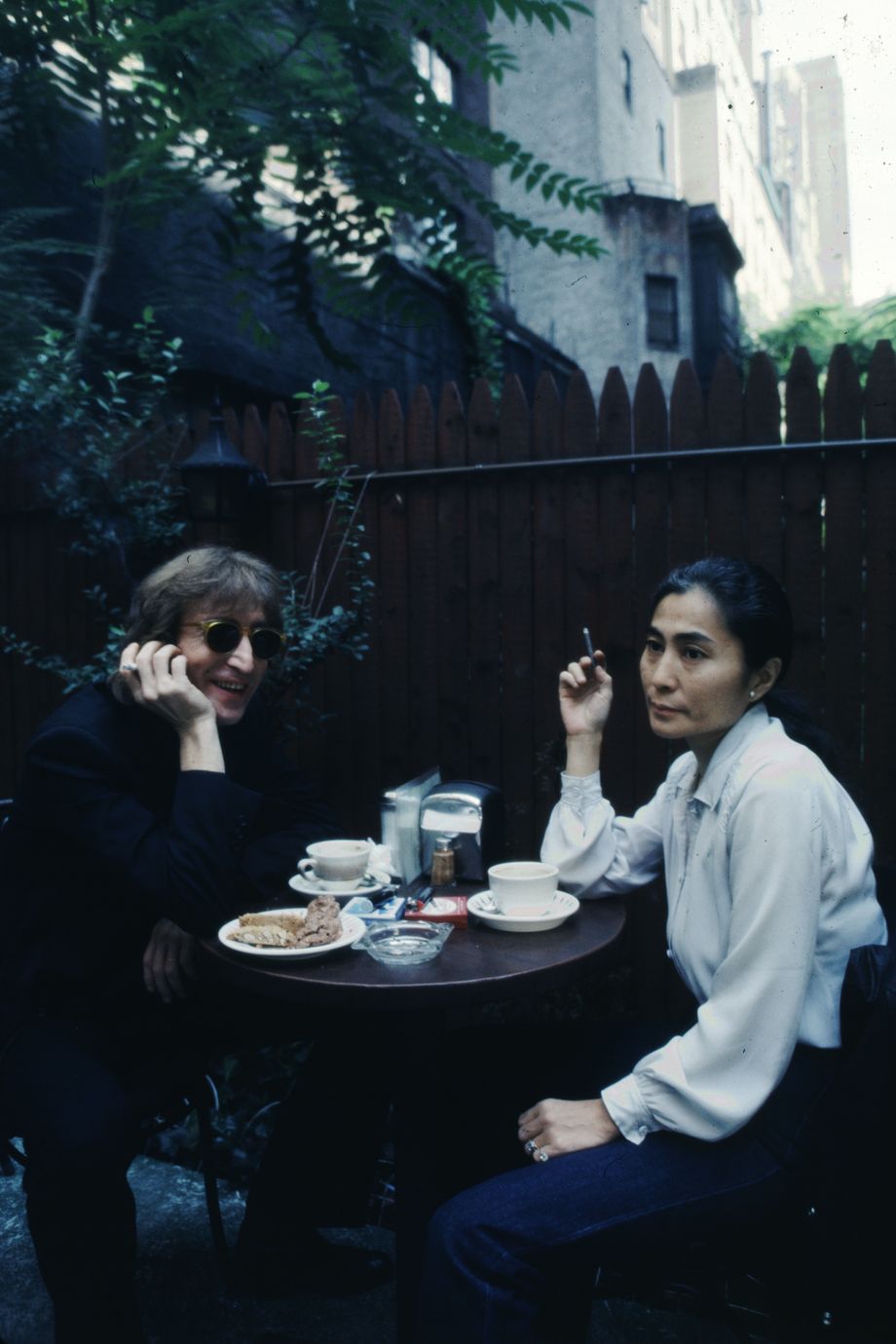 Photo: Kishin Shinoyama
Photo: Kishin Shinoyama
On the day that Cafe La Fortuna opened on the Upper West Side in 1976, business was slow. “We sold one espresso and made exactly 85 cents,” says Richard Urwand, son of the café’s late owners, Alice and Vincent Urwand. “We thought, What the hell did we just do? But I guess someone liked that one espresso enough to tell someone else, and before we knew it, people started coming in.” Eventually, word spread to the two most famous people in the neighborhood (and arguably the entire world): John Lennon and Yoko Ono, who lived a block away at the Dakota.
Cafe La Fortuna, which was best known for its sandwiches and Italian desserts, became the couple’s regular spot. “They used to come in a few times a week, him more than her,” says Urwand. “He would sit at the same table in the back garden, write, and draw on napkins. Sometimes he’d order a sfogliatella or cannoli.” The cover of Lennon’s posthumous 1984 single “Nobody Told Me” features a photo of him and Ono at the café with the former Beatle about to dig into what appears to be a sandwich. They ate breakfast there on the day of his murder in 1980.
Urwand says the pair came to Cafe La Fortuna because the regular customers knew enough not to bother them. They were social with the staff, though. “I remember one time John said he was thinking about going to Florida but he didn’t like it down there because of the mosquitoes. Another time, he and Yoko brought Sean, who was only a couple years old. They had to run out to do something quick, so they put Sean in my lap and said, ‘Hang on to him for a bit. We’ll be right back.’”
Cafe La Fortuna closed in 2008 after the building changed hands and the landlord raised the rent. Alice Urwand died that year, followed by Vincent in 2014. Their son remembers his parents hit it off with John and Yoko and ended up becoming good friends: “Which was funny because my father liked opera. He used to say the Beatles were the devil’s music.”
Where Jimmy Walker Ran the City
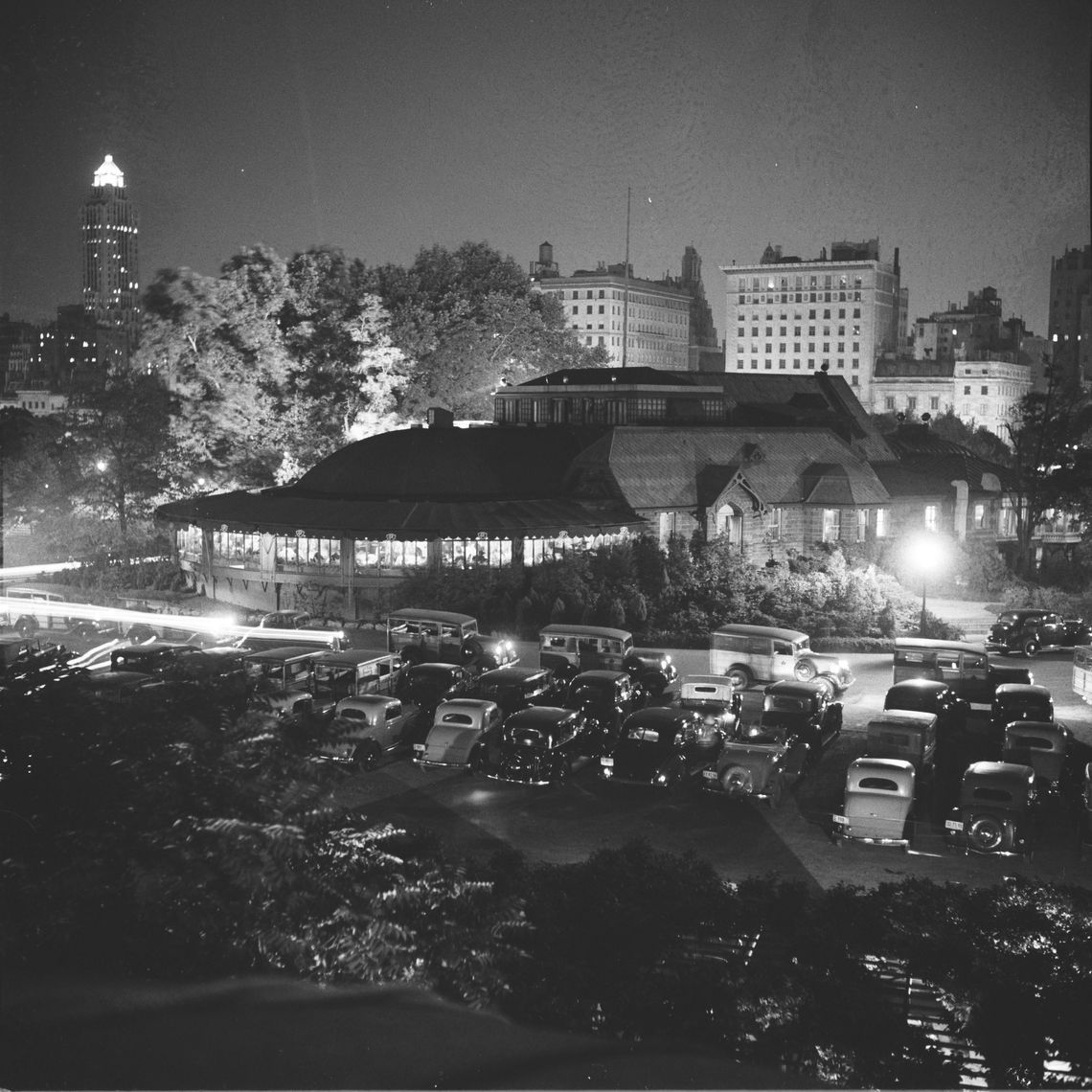 © City of New York. Used with permission
© City of New York. Used with permission
Serving as the city’s chief executive in the Roaring ’20s, Jimmy Walker was a twinkly, showy character, a onetime Tin Pan Alley songwriter turned Tammany politician. He was known for devoting maybe three hours a day to the job, traveling the city in a flashy Duesenberg automobile that cost more than most houses and swanning around town each night with his showgirl mistress, Betty Compton. (His wife stayed home.) In 1929, he arranged for a dowdy 65-year-old Central Park restaurant known as the Casino (not a gambling spot, despite its name) to become a swanky nightclub. Specifically, the mayor broke the previous restaurant operator’s contract and handed it to his friend and supporter Sidney Solomon, who got the license for $8,500 per year, which would turn out to be the amount the Casino took in every night. Joseph Urban — the architect behind Mar-a-Lago’s interiors, no less — redid the place in Art Deco shimmer with black glass ceilings. It seated 600. The food prices, it was disapprovingly remarked, were even higher than at the Plaza or the Ritz. One regular Sunday-night customer in the insurance business sometimes spent $300 on caviar alone — equivalent to about $5,500 today — along with the rest of his food and drink. He tipped the orchestra $1,000 at a time and sometimes ran a $7,000 monthly tab.
Prohibition and city ownership be damned, the bar poured plenty of wine, liquor, and Champagne, most of it BYOB, held on ice in the customers’ cars by their drivers. They paid $6 as a corkage fee; club soda was $3 a bottle, comparable to charging $50 now. Never mind the frequent Prohibition raids hauling out illegal liquor. One night in June 1930, the Feds arrested 40 people there, including Solomon. Mrs. Vincent Astor, also present that night, was not picked up.
You could find Walker there multiple nights a week, turning the Casino into the Zero Bond of its day. The band struck up his most famous song, “Will You Love Me in December (As You Did in May)?,” whenever he arrived. He was around so much he kept an office there with its own phone line and a soundproof door, behind which a fair share of city contracts got worked out. The rebuilt Casino had reopened in June 1929. In October, the stock market crashed, the economy fell apart, and Walker’s cuddly crookedness began to look a lot less entertaining. (The caviar-and-$1,000-tips fellow lost all his money and killed himself.) Within a couple of years, investigations into Walker had begun, and in 1932 he admitted on the stand to taking about $1 million in “beneficences,” a fun word for payoffs. Before he could be bounced out of office, he resigned — abruptly, without alerting his aides — and hopped on a ship to resettle in the south of France for a few years and wait out the statute of limitations.
As soon as Walker was out of power, newish Parks commissioner Robert Moses set his sights on the Casino, and in 1936, he tore the building down. Rumsey Playfield, and thus SummerStage, eventually replaced it.
Where It Felt Like 1967 in 1987
If “the future’s already here — it’s just not very evenly distributed” (see William Gibson), in the Brooklyn I knew growing up in the 1970s and ’80s, the past was strewn around in randomized chunks, like the clamshells in a giant bowl of Two Toms’ linguine. The little spot at Third and Union wasn’t a nostalgic portal into a romanticized Ye Olde Brooklyn (like, say, Gage & Tollner); it was simply stuck in time, like a piece of overcooked pork chop you can’t work out of your back molars until you get busy with a toothpick. Never sublime enough to become any foodie’s fetish, it was a workingman’s red-sauce house to the end, famous for the cops and firefighters, yes, but also home to tradespeople. The restaurant’s fake-stone stucco and tin awning made it comfortingly resemble the unrenovated façades of the slowest-to-gentrify residential blocks of Carroll Gardens, the ones with Catholic sculptures in the front yards. You’d suffer no gastronomic epiphanies here, nor witness any Mafia rubouts, only get a bellyful of marinara.
Where Keith McNally Shucked the Oysters
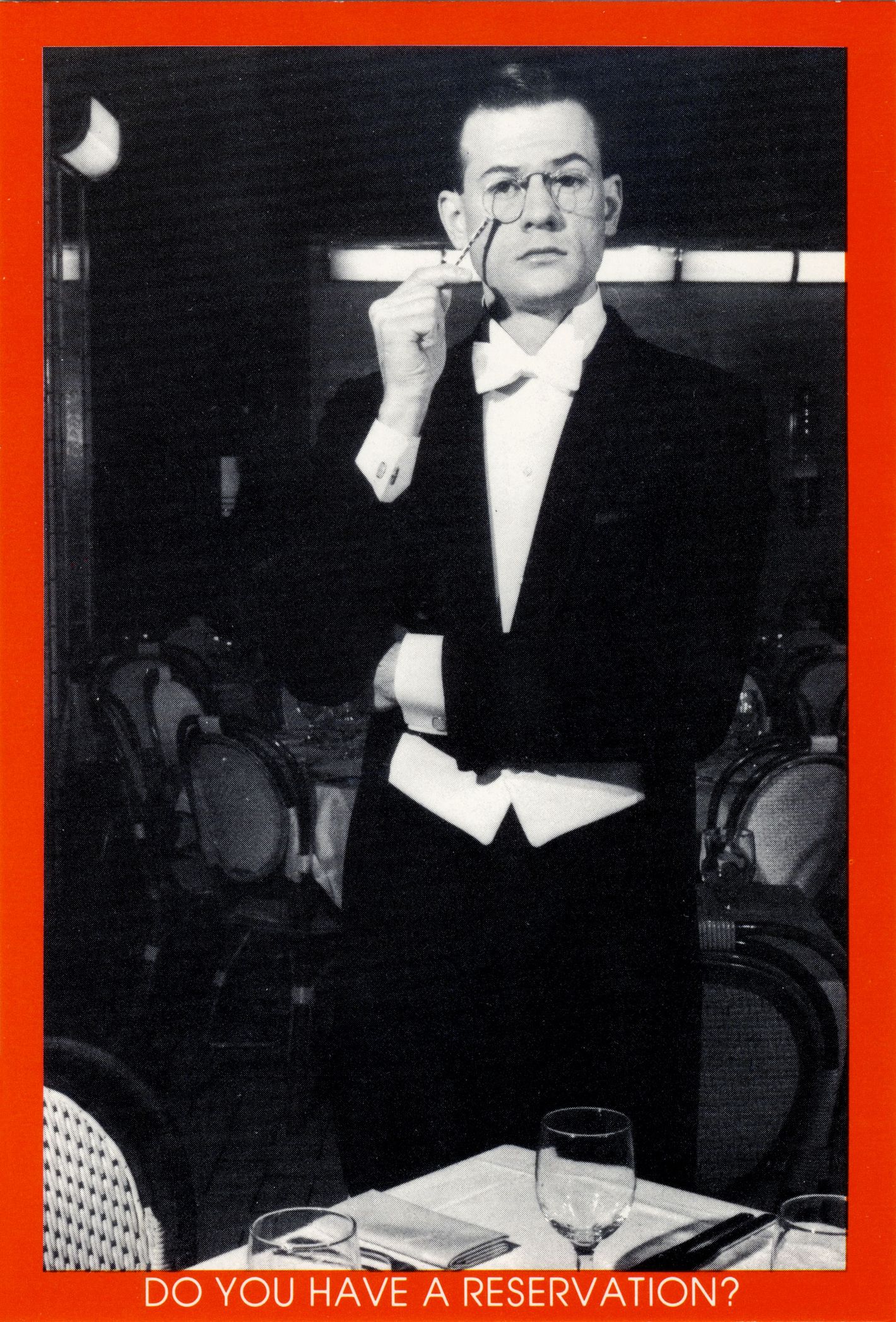 Photo: Richard at One Fifth, 1979 © Robert Mapplethorpe Foundation. Used by permission.
Photo: Richard at One Fifth, 1979 © Robert Mapplethorpe Foundation. Used by permission.
Few places had a shorter, brighter, or more impactful run than One Fifth, which opened in the fall of 1976. The elegant, nautically themed establishment is famous as the place where Keith McNally cut his teeth and where the original Saturday Night Live crew hung out because Lorne Michaels lived nearby. One Fifth quickly became a kind of beacon for downtown art celebrities and young New Yorkers who didn’t quite know they were celebrities yet. Patti Smith and Robert Mapplethorpe were regulars, and so was a New York Magazine editor named Anna Wintour. “It was a particular mix of people who were just starting to make it,” says Vincent Fremont, who managed Warhol’s Factory in Union Square. “For many of us, it was one of the first places you could go and feel like you were part of something.” That ineffable “something” vanished when McNally and his bartending brother, Brian, departed, first to Mr Chow uptown, then to open the Odeon with Lynn Wagenknecht, who’d worked as a waitress (and was McNally’s first wife). “One Fifth was the Odeon before the Odeon,” remembers one of the regulars, “but the vibe was somehow more innocent. Most of us were new to the city. It was all ahead of us back then.”
Where I Waited on Anthony Weiner
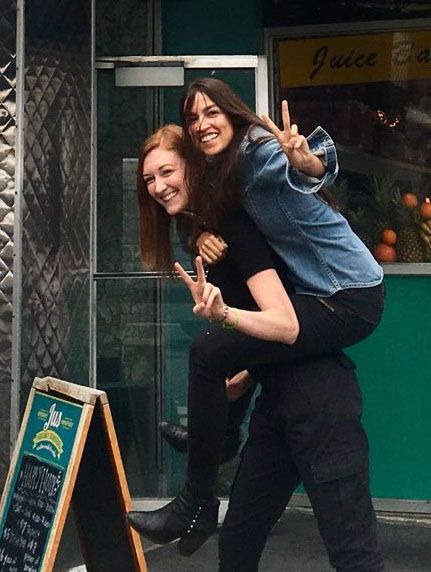 Photo: Courtesy of Subject
Photo: Courtesy of Subject
Anyone who remembers Coffee Shop remembers this big outdoor area. That was where the more finicky people sat, the people who wanted to be seen. I remember working brunch one day, and we were so short-staffed I had that whole outdoor area to myself. It was so busy. At one point, I just set my head down on the edge of the service station and almost cried. I told myself, Okay, you need to just put one foot in front of the other and get through this. I think about that all the time. All the time. There are days now where, obviously, what I’m doing is very different, but I go back to that brunch shift. I worked there for five years. It was one of the most formative experiences of my life. I have so many memories. Uma Thurman was incredibly kind, and at the time she always came in with her daughter. I remember Gerard Butler came in once. I waited on Anthony Weiner. I waited on Eliot Spitzer. I haven’t normally shared that, but it’s true. One time, Hanson, the boy band from the ’90s, came in. We waited on all these super-notable people, but Hanson just did it for us. Like, the inner child came out. And you know, we never really ever asked for pictures or anything like that, but this was the one exception that we made. —As told to Paula Aceves
Where We Danced Off Our Chicken Kiev
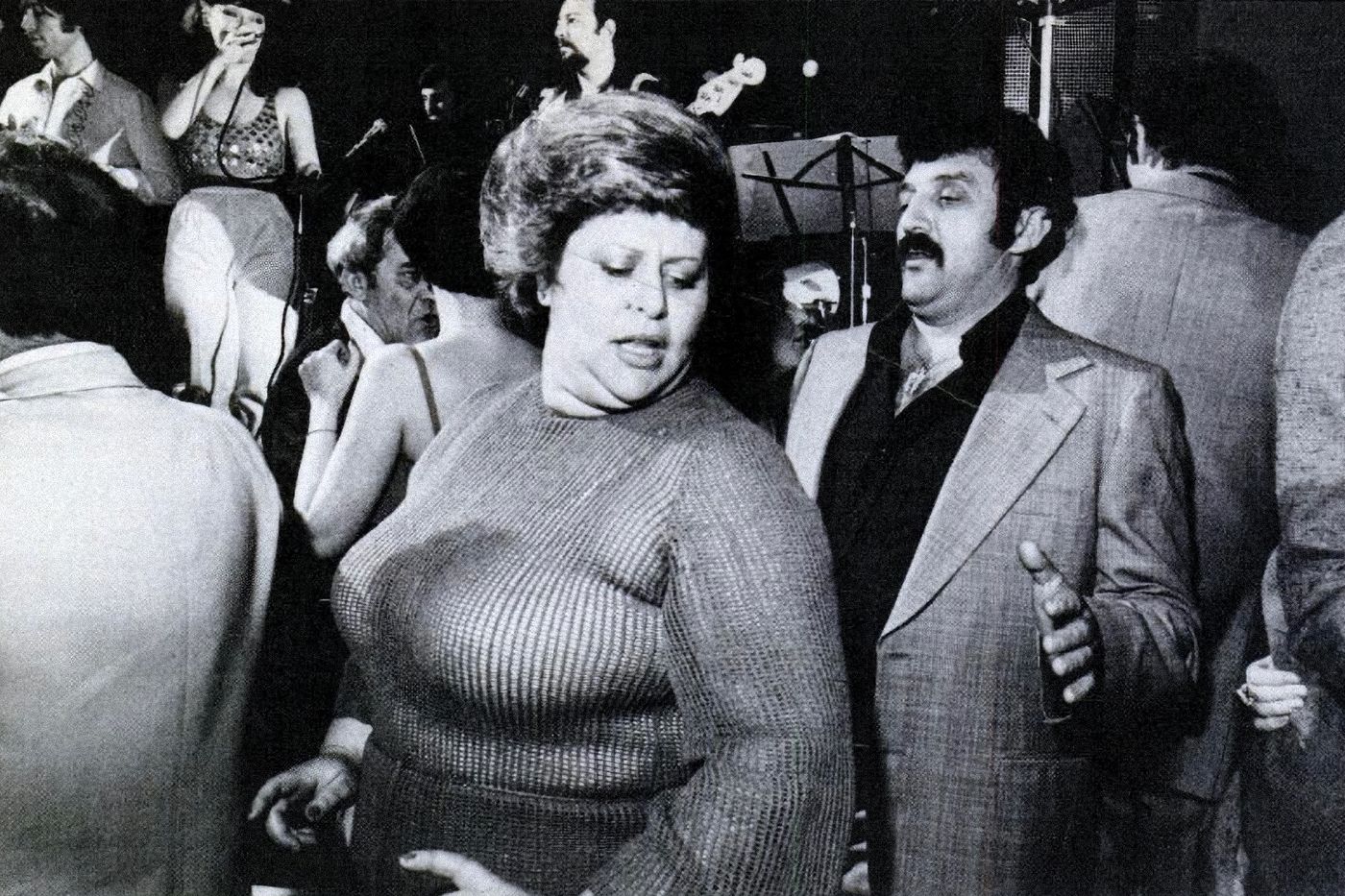 Photo: Andrew Levin
Photo: Andrew Levin
For most of my childhood, I was dragged to a Brighton Beach banquet hall at least monthly. A Russian uncle would ask, “Paydyom v’Nassional?” On went the sequined dresses and Men’s Wearhouse blazers, up went the magenta-tinted hair, out came the knockoff Chanel bags, and off we went, usually to the “Nassional.” Established in 1981 by members of the first immigrant wave to land in Little Odessa, the National presented a windowless façade, but wonders lay within: a two-tiered palace festooned with dizzying carpet patterns, crystal chandeliers, and blinding footlights. Hundreds of seats were crammed into long tables laden with French-inflected Soviet appetizers: smoked sturgeon and tongue; salmon roe and black bread; and — my favorite — Olivier salad, a mélange of eggs, pickles, potatoes, mayonnaise, peas, and bologna. (Trust me.) By the time the kebabs and the chicken Kiev arrived, everyone was full.
The patrons, ranging in age from roughly 1 to 96, danced off the gluttony, lubricated by vodka (a bottle per four or five seats). The highlight of the night was the floor show. A parade of performers sourced from across the Soviet imperium executed stiff but sultry choreography alongside synth-heavy bangers in both Russian and English.
In the early years, the National’s theme was material aspiration. Its regulars had engineering degrees but toiled 14 hours daily in cabs, auto shops, and restaurant kitchens, saving for the next generation as well as the occasional cheapish thrill of getting drunk in front of their kids while feathered-haired beauties leaped among lasers and fog machines.
Where the Sex Was As Good As the Escargot
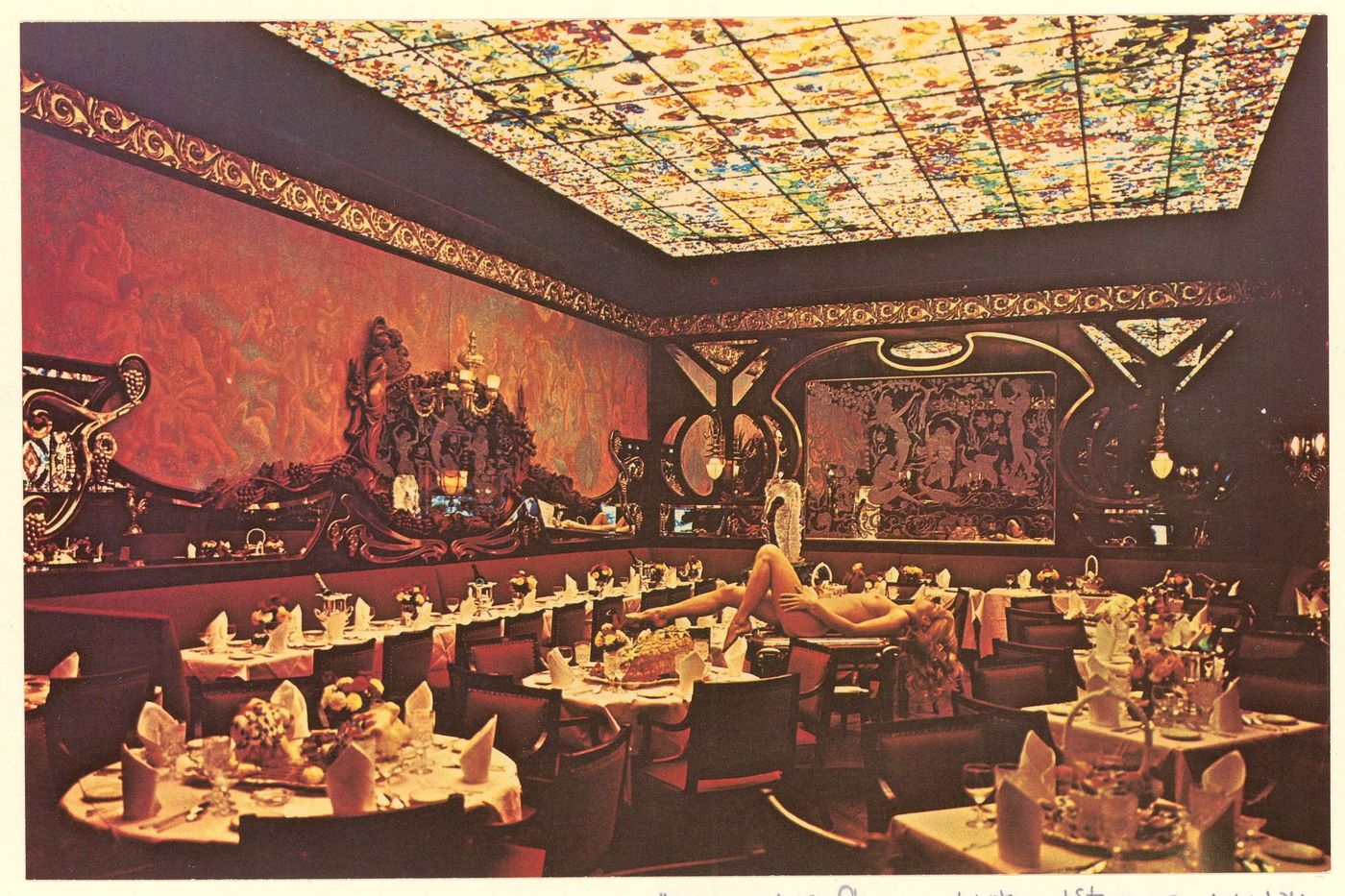 Photo: Maxwell’s Plum
Photo: Maxwell’s Plum
The owner of Maxwell’s Plum, Warner LeRoy, the son of Hollywood director Mervyn LeRoy and grandnephew of studio chieftain Jack Warner, had grown up with an appreciation for the magic of celebrity. He kept a list of 450 VIPs, the most important of whom could slide into the tables along the wall in the back room, which was famous for its ceiling covered with glittering Tiffany glass. “You name it — everyone was there. It was the hot restaurant during a time when there were very few inhibitions holding people back,” remembers Drew Nieporent, the future proprietor of Nobu, who found himself running the front of the house at age 23. LeRoy had toyed with a variety of sexually charged names (the Silver Cherry was one) before settling on Maxwell’s Plum, and the restaurant, on First Avenue and East 62nd Street, quickly became one of the first places in town where upwardly mobile single women, newly liberated by the Pill — stewardesses, secretaries, actresses — felt comfortable drinking at a bar alone. The doors were regularly locked after too many singles had flooded into the bar. At least once, a woman streaked around the restaurant for $100. “I hesitate to use the word revolutionary, but a place like Maxwell’s Plum really sort of was,” one of the old regulars tells me. Nieporent agrees: “It was accessible to everybody. The prices weren’t too excessive, so anybody could go there — and did.” During its long prime, which lasted through the ’70s, before aids and greed and the general darkness of the 1980s set in, the 240-seat establishment did 1,500 covers a night. The kitchen didn’t close until after 1 a.m., and the bar kept serving until three. You could get a platter of escargot, frogs’ legs “Provençale,” or a foot-long hot dog with chili. “Oh, the burger. It was a great burger,” recalls Nieporent. “I cannot emphasize enough what a great fucking restaurant this was.”
Where Celebrities Went to Be Snapped
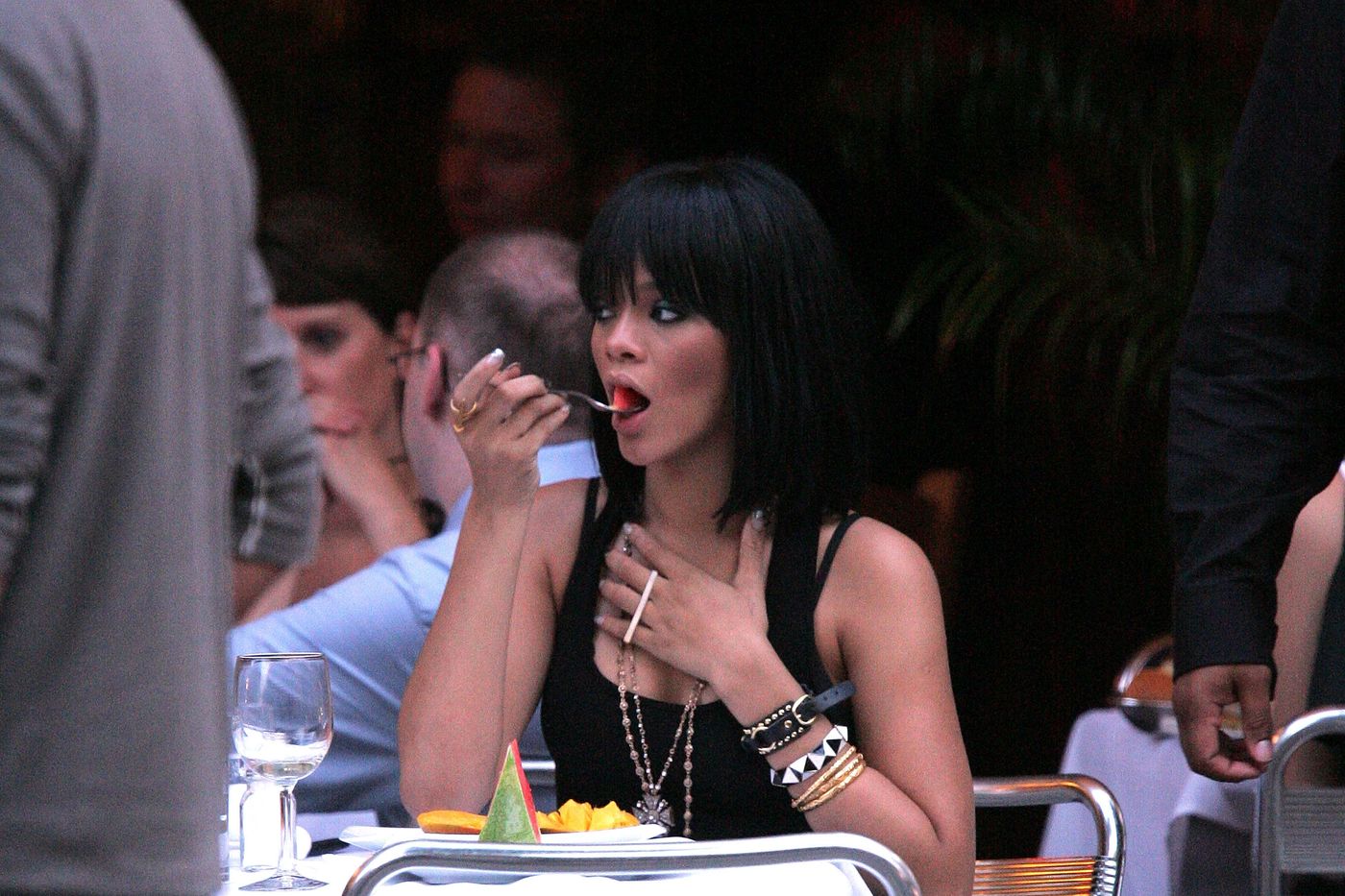 Photo by James Devaney/WireImage
Photo by James Devaney/WireImage
If 2006 ever calls and wants its celebrities back, the caller ID might well come up as “Da Silvano.” Silvano Marchetto’s Italian restaurant spilled onto an unusually broad sidewalk on Sixth Avenue in Greenwich Village from 1975 until 2016 — often with one of his three Ferraris parked outside.
Perhaps its ample outdoor seating — more like the Ivy in L.A. than anything in New York — helped attract the glam clientele for which it was known. The stars provided a buffet for the paparazzi (who were always waiting by the curb) without appearing too thirsty for attention.
Celebrities descended upon Da Silvano throughout its 41-year run, but 2006 — with its saucer-size sunglasses and brand-new T-Mobile Sidekicks — was the year in which Frank Bruni began his New York Times review (dropping it from two stars to one) by highlighting not the food but regulars like Madonna, Tom Hanks, and Sarah Jessica Parker. It was the year Harvey Weinstein had pasta at a back table with Mischa Barton and the year Lindsay Lohan tried to get a spray tan in the restaurant’s bathroom during an Elle cover-story interview.
And it was at the 2006 CFDA awards, a rubber-chicken event at the New York Public Library, that fashion journalist Horacio Silva recalls sitting next to Rihanna: “She was hating the food, and I said, ‘You’re Rihanna. You can have whatever you want.’ So she had her driver pick up her favorite Da Silvano’s pasta, the taglierini contadina, and I think slipped out to go eat in the limo.”
Where Saxophonists Ate Breakfast at 3 A.M.
For the jazz musicians of the 1960s, Birdland was the club to play on 52nd Street — then still Swing Street, filled with nightclubs, though not formuch longer — and Ham N’ Egg Corner was the place to eat. Partly, this had to do with practicality (it was across the street) and accessibility (it was open 24 hours), but it was also, as pianist Kenny Barron puts it, “a great vibe.” The peak hour always came around 3 a.m., as the night’s sets wrapped up. “You’d be there for hours,” says Barron, waiting for other band members to trickle in. Once, he remembers, he saw bassist Wilbur Ware looking in through a frosty glass window, smiling at the musicians with their instruments propped up against the linoleum tables. An assortment of performers, fans, and what Barron calls “night people” often mingled, lingering into the early morning. Barron, for his part, had no trouble staying awake: “I’d always start the night off with a cup of coffee.” And what was their regular order? “Probably ham and eggs.”
Where I Rearwindowed Taylor Swift
In 2021, we bought a place across the street from Lucali. It was, by that point, famous for its delicious pizza and doubly famous for attracting celebrities. It wasn’t long before I became like Jimmy Stewart in Rear Window, ogling the pizzeria from my living room, watching as a flock of chauffeured SUVs descended upon my otherwise quiet Carroll Gardens street.
Beyoncé and Jay-Z were early adopters. I went for the first time in 2008. No sooner had I finished telling my date that it was Bey’s favorite pizza than an Escalade pulled up and she and Jay-Z proceeded to house a pie at the table next to ours.
The lines really started getting crazy after Lucali was featured on David Chang’s Ugly Delicious in 2018. Now, every time someone like Bella Hadid posts a pic from an evening there, there’s a subsequent bump in the length of the line and the number of schmoes commandeering my stoop as a picnic spot for takeout pies.
On one January night, a trio of dudes with cameras around their necks stopped to watch me and my husband struggle to drag our giant Christmas tree down to the curb. Who were they waiting for? “You promise you won’t put it on Twitter?” one said. I nodded. “It’s Taylor Swift.” I grabbed a bottle of Calvados and brought it outside to quaff as we watched Questlove, Zoë Kravitz, Jack Antonoff, and others arrive. At midnight, Taylor emerged; we only glimpsed her Reputation-green ensemble before she and Blake Lively pulled away in an SUV.
At least one of Tay’s exes is also a fan: One year, we planned a pizza dinner for Rosh Hashanah, and as I ambled across Henry Street to get our order, I saw Jake Gyllenhaal pull up, double-park, and pile six pies into his gull-wing Tesla.
Where East Village Punks Went …
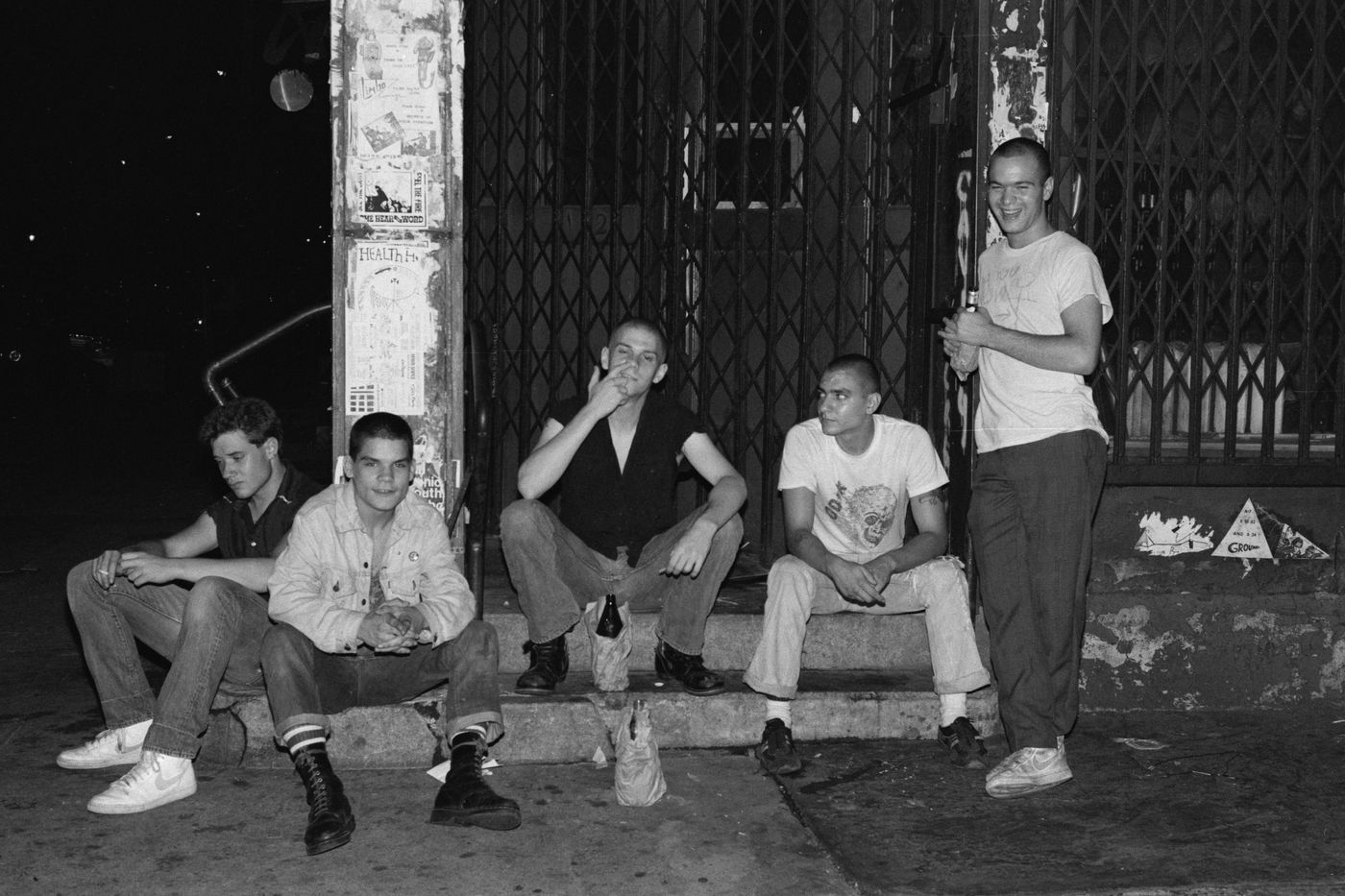 Photo: Ran.D Underwood
Photo: Ran.D Underwood
… For Eggs
A7, the short-lived but seminal club called the birthplace of New York hardcore, was across the street from Leshko’s, part of a constellation of Polish and Ukrainian greasy spoons that had fed the East Village for years. So it was an obvious place to stop. “We would go there when we got out, which would be like five, or six, or even seven in the morning,” says Jesse Malin of the early hardcore band Heart Attack. “We worked up quite an appetite in that back room jumping around dancing like crazy.” He’d go with other people from the scene, like the False Prophets. Sometimes he’d run into the Stimulators and Jimmy Gestapo from Murphy’s Law. At least one local band, the Bad Tuna Experience, was named after a meal they’d had at Leshko’s.
… For Tofu Pie
The Caldron was opened in 1969 by Marty and Glory Schloss, and in its early years it was known as a place where both hippies and Hasids would go for Jewish macrobiotic meals. That changed in the ’80s: “It was full of hippies and Orthodox Jews — and punks,” says the photographer Richard Sandler, who helped open the restaurant. “The owner’s mother was the head of the bakery next door, and I’m told that she invented tofu pie, amazingly enough,” says Willie Luncheonette, who was deep in the East Village scene at the time. He remembers running into Andy Kaufman, Horace Silver, and Elvis Costello — who once came in asking if anyone wanted tickets to a show — as well as one of his favorite bands, Millions of Dead Cops. “I said to myself, Oh my God, those guys are from MDC. So I went up to them, told them, ‘You guys are great,’ and they told me to come out to the van after I finished eating to hang out for a while.”
Where Uptown Teens Spent Their Parents’ Money
For a certain set of private-school kids who came of age in the mid-’90s, the Serafina on 79th and Madison will always be Sofia.
The restaurant opened in 1995, the same year I started high school, and quickly became our social hub. My friends and I would come for dinner, marching up the narrow steps in bulbous Steve Maddens, carrying box-cut Kate Spades, with Ricky’s glitter on our eyelids. The hostess would herd us past the main dining room (where grown-ups sat), up another flight to the third story, which had tented ceilings and uneven brick floors. This was the domain of teenagers.
“It was the one place you’d see everyone from all the schools,” says Elana Wexler, a friend from school days. We all showed up: Riverdale, Trinity, Spence, etc. Even if you didn’t know the kids at othertables, you knew of them from promoters’ party flyers or high-school lore.
We’d crowd the long banquette, eating artichoke salad, pizza margherita, and paglia e fieno, green and white pasta. (It was the ’90s; carbs were fine.) We littered tables with beepers, Parliament Lights, and bullet-shaped tubes of M.A.C lipstick. Sofia was where we celebrated birthdays and AP tests, nursed crushes and broken hearts. It managed to feel adult and aspirational while still comfortable for someone using a fake ID to order a glass of Pinot Grigio. Of course, as adult as we thought we were being, the restaurant was an entirely sponsored experience. We paid with our parents’ cash.
Sofia was the first place I felt part of a scene. I learned about the magic of bumping into people and the specific energy of a New York evening that could go in an infinite number of directions — even if those nights mostly petered out into loitering on brownstone stoops.
In late 1998, following a dispute with a restaurant of the same name, Sofia was renamed Serafina. Now there are ten Serafinas in the city, along with outposts in White Plains, Scarsdale — even Tokyo and Kolkata. Where Sofia felt singular, Serafina has the whiff of a chain. My meals there now happen at 5 p.m. with crayons and kids’ menus. I still spot people from the Sofia days. We give weary smiles over tennis-racquet pasta or, in the spirit of high school, pretend we don’t know each other at all.
Where CEOs Cosplayed As Emperors
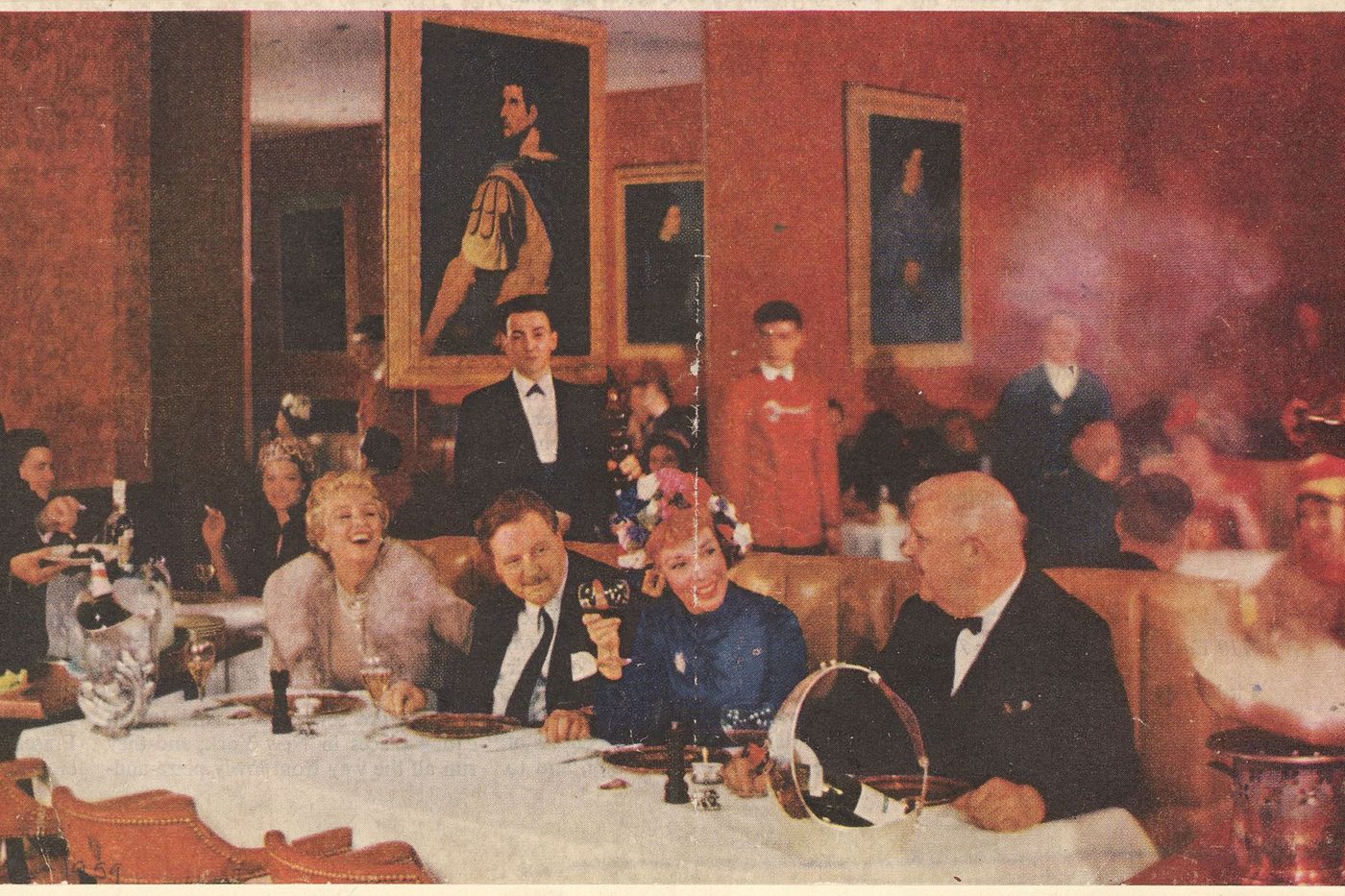 Photo: Obtained by New York Magazine
Photo: Obtained by New York Magazine
Like any talented theatrical restaurateur, Joe Baum had his share of hits: Windows on the World, Tavern on the Green, Fonda del Sol. He also had his share of flops, none more titanic or comically misconceived than the extravagantly over-the-top Roman establishment that opened in the fall of 1957 on the ground floor of Rockefeller Center. Like the Four Seasons, which Baum debuted two years later, the Forum of the Twelve Caesars was built to cater to the high-rolling, high-spending captains of industry who populated midtown during its corporate-restaurant heyday. Unlike Philip Johnson’s sleekly modern, famously tasteful space in the Seagram Building, Forum featured faux-mosaic murals, Baroque-like portraits of Rome’s first dozen emperors, Champagne buckets designed to resemble upturned centurion helmets, and water taps in the restrooms that Mimi Sheraton merrily reported were shaped like bronze dolphins.
Guests dined on bizarre creations such as “Oysters of Hercules” and “Fiddler Crab Lump à la Nero,” a dish that was served tableside and flaming, of course. Weirdly, the reviews weren’t horrible (Craig Claiborne praised the restaurant’s “lusty elegance”), though Michael Whiteman, a longtime restaurant consultant and Baum’s partner of 29 years, says it quickly became apparent that there weren’t enough corporate fat cats in midtown who “viewed themselves as Roman senators wandering around in togas, or whatever it was Roman senators used to wander around in,” to support it. When the managers of the Four Seasons offered to buy that restaurant in 1974, Baum’s former company, Restaurant Associates, made them take the Forum, too. They closed the place shortly after that, though for a long time, if you took a seat at the also-departed Rockefeller Center steakhouse AJ Maxwell’s, you could still see the faded murals — remnants of a vanished time.
Where the Yankees Banned Their Own Players
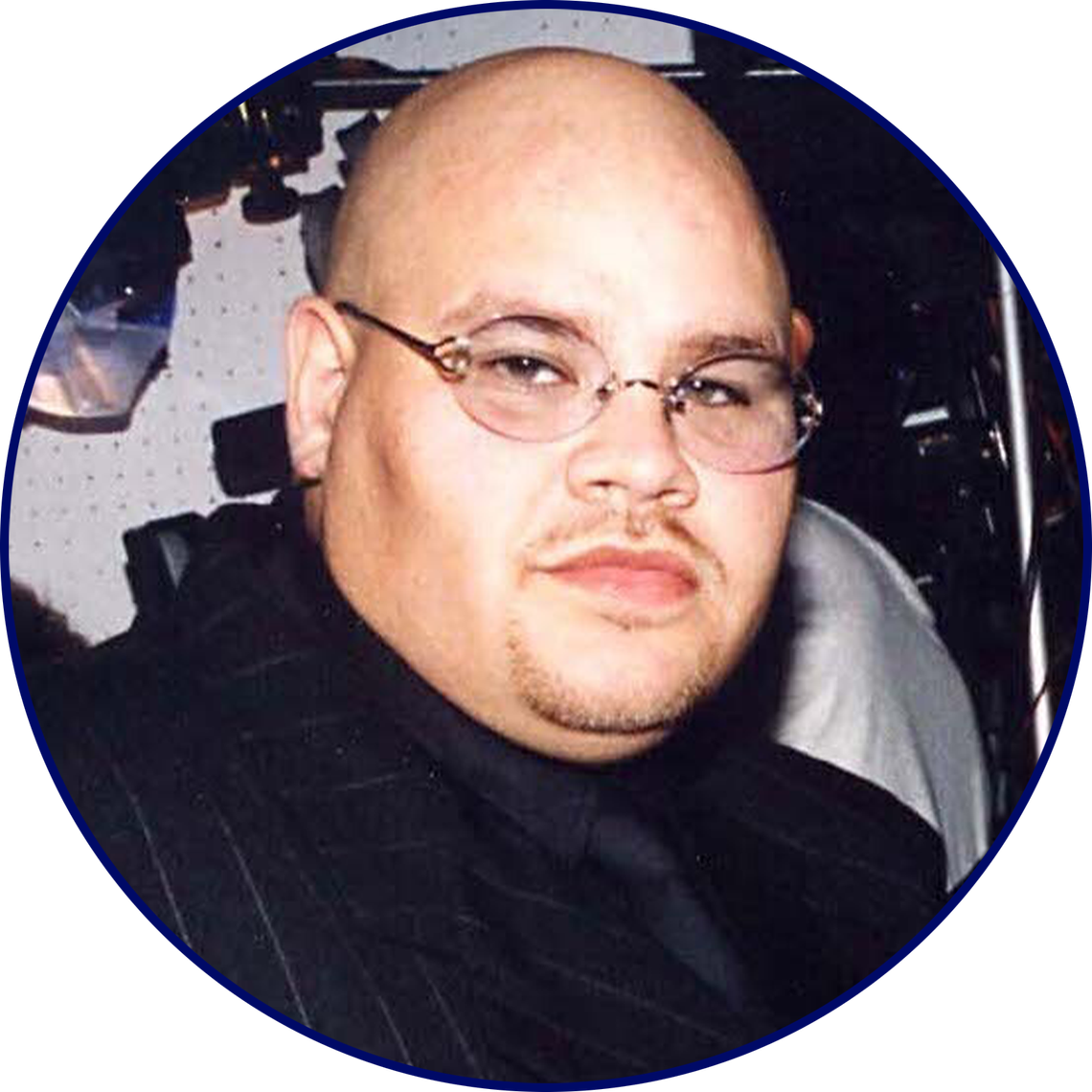 Photo: Jeff Kravitz/FilmMagic, Inc
Photo: Jeff Kravitz/FilmMagic, Inc
Jimmy’s Bronx Cafe basically started New Age Latino cuisine. The spread could be legendary, like 100 lobsters, 100 steaks, paella — their seafood paella was crazy.
At Jimmy’s parties, you would have everybody from Eminem to Mary J. Blige to Derek Jeter. In fact, they gave a warning to all the Yankees players because they used to be at Jimmy’s every day. The team told all the players, like, “Yo, you gotta stay out of this joint.” —As told to Ben Kesslen
Where Mark Twain Threw a Rager
 Byron Company/Museum of the City of New York
Byron Company/Museum of the City of New York
Here’s what kind of an event Mark Twain’s 70th-birthday party, on December 5 at Delmonico’s, was: Before it even happened, the New York Times ran not one but two stories about the invitations. The guests ultimately numbered 170, and it was a true A-plus list of literary, powerful, and just plain rich New Yorkers. On the night of the dinner, Andrew Carnegie spoke. So did William Dean Howells, the novelist and Atlantic Monthly editor routinely called “the Dean of American Letters.” President Theodore Roosevelt couldn’t make it, but he sent a message to be read. George Harvey, the editor of Harper’s Weekly, hosted. Delmonico’s was almost 80 years old by that time and still the omphalos of American fine dining. Everyone received a foot-high bust of the guest of honor.
The former Samuel Clemens was by then one of the most famous men alive. He’d made a fortune, lost it in a series of bad business moves, and gone on lecture tours and published his memoirs to earn some money. By 1905, he was on his feet again, and the party was meant to celebrate what was, at the time, the extraordinarily advanced age of 70. He joked about that in his speech, bringing up his skepticism about the medical treatments of the era and his diet, which he said he’d finally moderated after many decades of indifference. He also, it appears, was an intermittent faster before its time. “For 30 years,” he noted, “I have taken coffee and bread at eight in the morning, and no bite nor sup until 7:30 in the evening. Eleven hours.”
What did Twain and his guests eat that evening, presumably after 7:30 p.m.? Delmonico’s served heavy food without a lot of inclination to seasonality, and it showed. Even though it was December, there were stuffed tomatoes. Oysters, of course — every New York meal of consequence in those years probably included them. There was turtle soup, then a staple of affluence, and fried Baltimore terrapin and quail and saddle of lamb. Parsleyed potatoes and creamed mushrooms on toast rounded it all out.
Where Club Kids Loaded Up on Macrobiotic Dinners
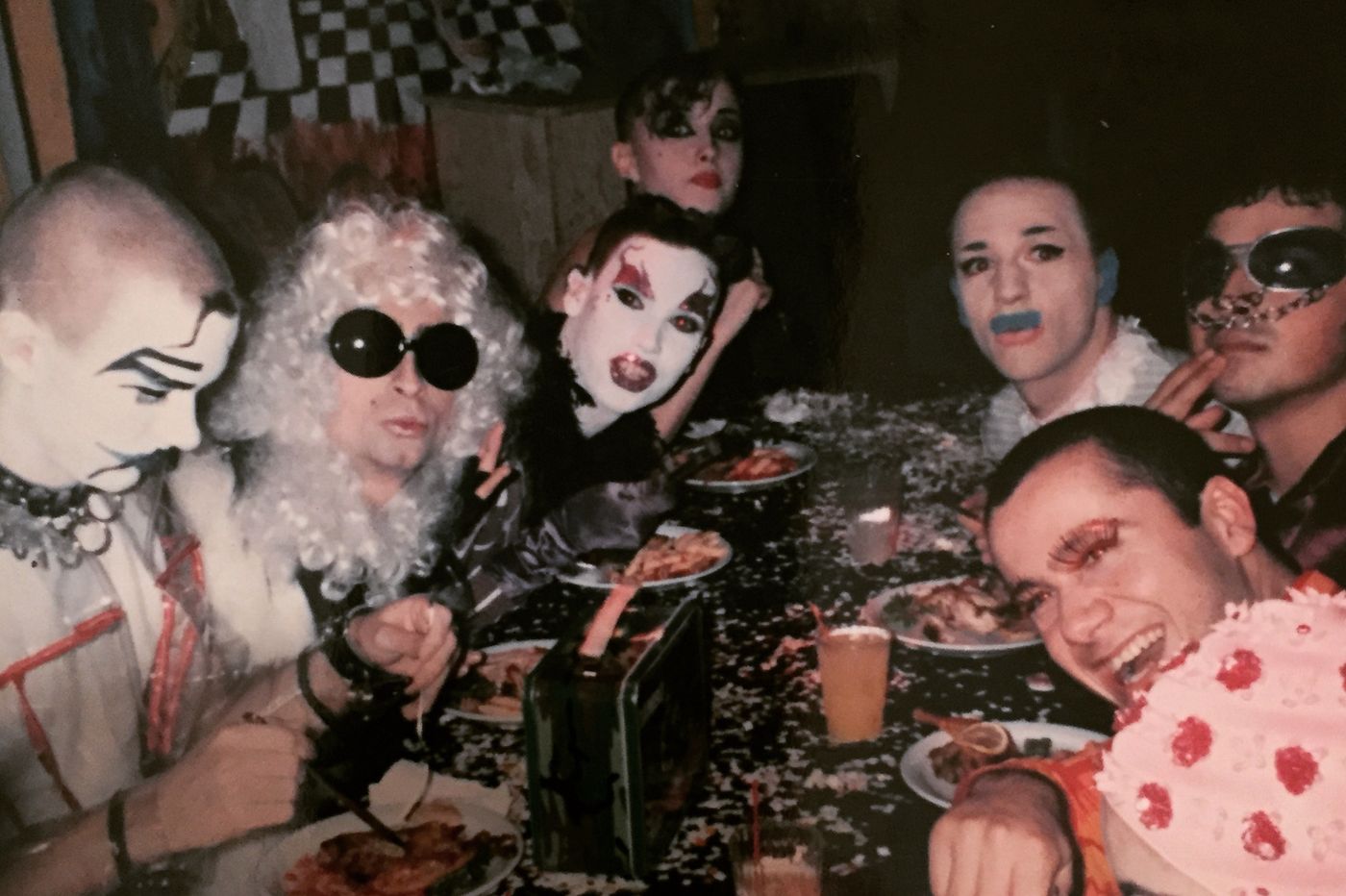 Photo: The archives of Michael Alig
Photo: The archives of Michael Alig
Wednesday night was our flagship party, Disco 2000 at Limelight. After three hours of getting ready at the Chelsea Hotel, where I lived throughout the ’90s, I’d join my fellow club kids at photographer Michael Fazakerley’s studio to have our looks documented. Emerging as a Technicolor chain gang, we would tread in our platform shoes to an outlaw party staged at a high-traffic hub like Twin Donut or the L train — think flash mobs but before they were invented. We’d flood the joint with splendor and party until the cops came, then drinks would fly into the air and a herd of club kids, ravers, and banjee boys would stampede toward Limelight.
Whisked through the crowds waiting to get in, we’d regroup for a surreal, yet surprisingly civilized, sit-down dinner party around 11:30 p.m. The strategy behind the dinners was to get as many fabulous people into the club as early as possible, so when the paying patrons made their way though the door, they weren’t confronted with an empty room. Seats were given to the top-notch club kids, hinting at our internal hierarchy. There’d always be a quirky special guest, usually a personality from a campy ’70s show like Three’s Company or The Jeffersons. These dinners had an Alice in Wonderland quality with all of us sitting at a table in colorful sparkling costumes, surrounded by onlookers, eating a macrobiotic meal and chatting with someone we’d grown up watching on television.
The energy would build throughout the night until everyone was completely lit — obliterated on E, a mushroom punch, or some other powder or potion that had been passed around. For those of us working, it was a signal that it was time to get paid. Some of us would go home, shower, then dance until noon at places like Sound Factory. Wherever your nose or your feet led you, eventually you had to eat breakfast, and that spot was usually Cafe Orlin on St. Marks Place, which was known for its cheap breakfasts and gender-nonconforming staff. There was a giant round table in the corner near the front windows where club personalities would often hold court and swap gossip about the previous night’s adventures.
Where I Ate As Much Steak As I Could
 Benjamin Lozovsky/BFA.com
Benjamin Lozovsky/BFA.com
Pink Pony was a place I used to go every single day because I was friends with Lucien, who also owned Lucien on First and 1st. I grew up with his son, Zac. So I could go there and get free meals and then sneak into Max Fish and just get wasted. I was 15, and I would eat so much. It was like French American fusion: cheeseburgers, steaks, delicious French onion soup, oysters. They had snails, I think. I was such a big pothead during those days. I remember having the craziest munchies and eating everything on the menu because it was free. —As told to Ben Kesslen
Where the Champ Parked Out Front
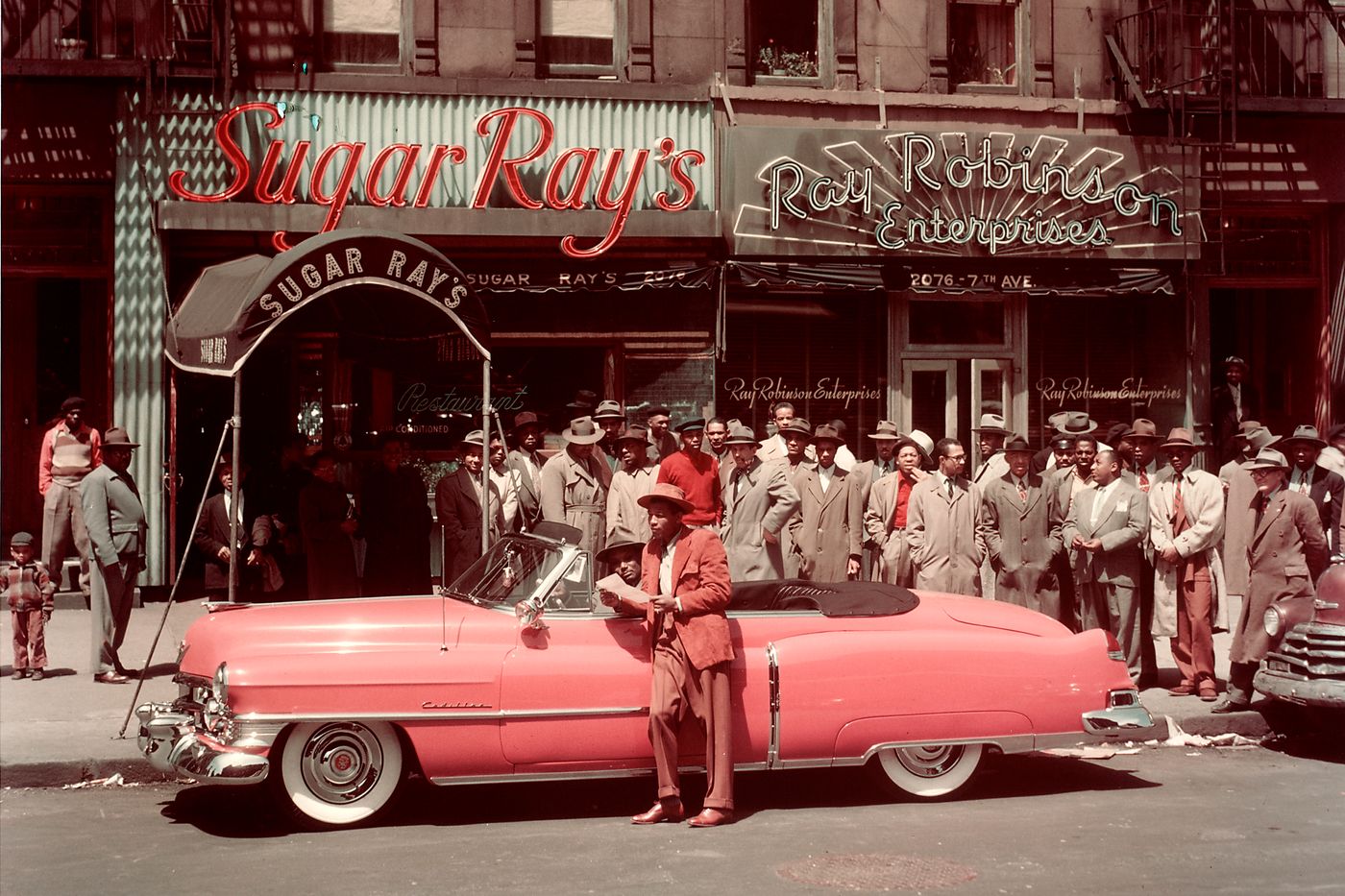 Photo: George Karger/Getty Images
Photo: George Karger/Getty Images
You knew Sugar Ray Robinson — arguably the greatest fighter in history — was at his restaurant by the flamingo-pink Cadillac convertible sitting outside. Future congressman Charles Rangel, working a few doors away as a desk clerk at the Hotel Theresa, would escort visiting dancers over if they wanted to get a glimpse of the champ. “I’d tell them they probably weren’t going to see him,” he told Robinson’s biographer Wil Haygood, “but they wanted to go anyway.”
Where Tokyo’s High Rollers Could Enjoy Their Toro in Peace
Before Nobu and Masa, the city’s sushi world was a smaller, more settled place. “The restaurants were very old-fashioned, they were in midtown, they were marketed mostly to Japanese businessmen, and these guys did not want to see any fucking white people in their restaurants,” recalls Nobu’s Drew Nieporent. Sushiden on East 49th Street was partially owned by the Mitsubishi Corporation; it was a forbidding oasis for salarymen dressed in their dark suits. Kurumazushi, which is still doing business in a small walk-up space on 47th Street, was the big-money venue where the sushi was stored in a golden box and the chef (who called his carefully selected fish “my jewels”) charged upwards of $200 for an omakase dinner when, as one sushi-snob friend remembers, “no one had ever heard of doing such a crazy thing.”
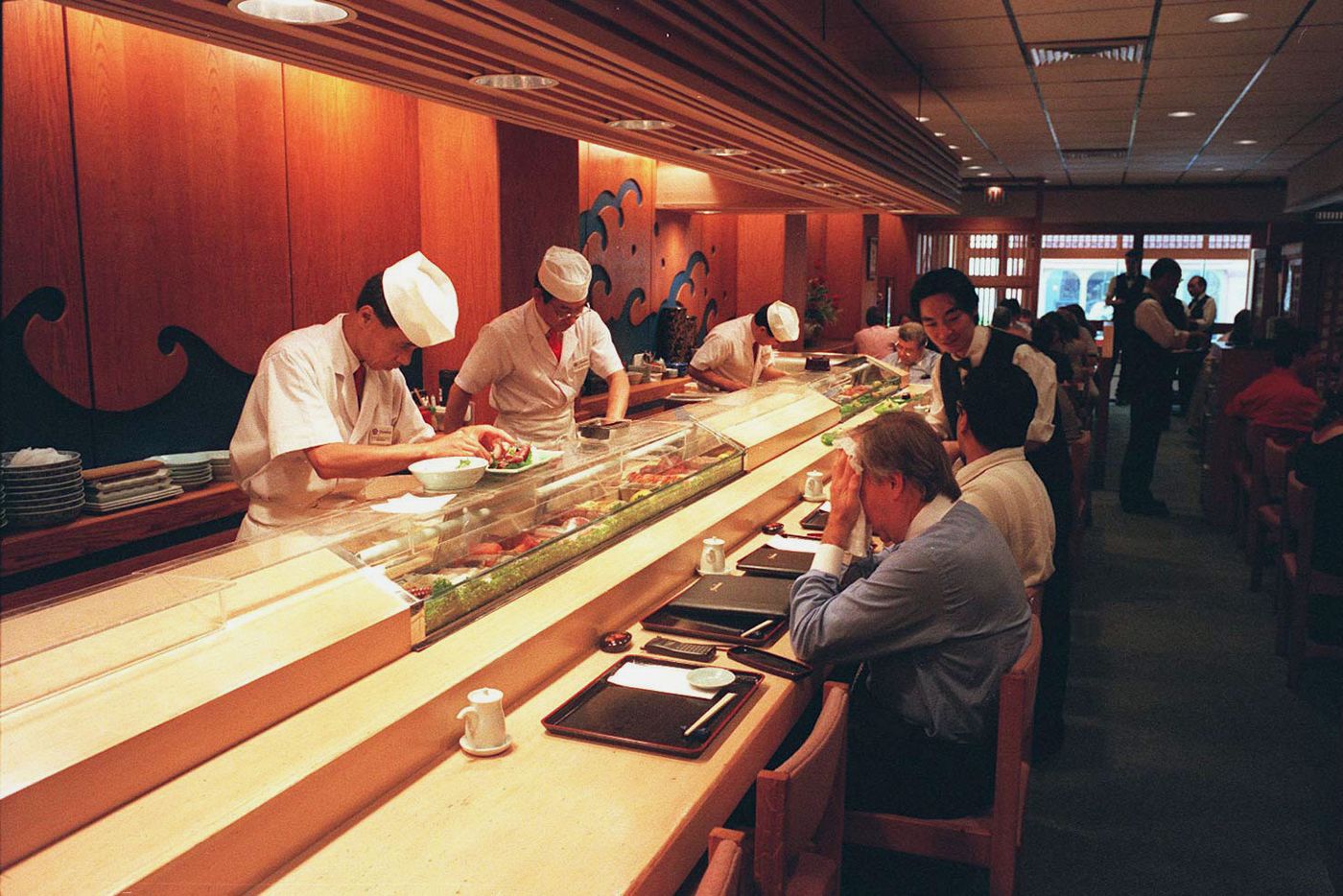 Fred R. Conrad/The New York Times
Fred R. Conrad/The New York Times
Then there was Hatsuhana, on East 48th Street, a slightly less severe, more eclectic establishment, which thanks to a glowing review by Mimi Sheraton became a kind of proving ground for influential members of the city’s avid sushi community. Ruth Reichl, who honed her taste for sushi while living in L.A., recalls seeing the novelist Renata Adler silently communing with her omakase dinner at the bar. Reichl had been introduced to the restaurant by her father, who worked around the corner, and they used to dine with the rest of the gaijin crouched at one of the darkly lit tables downstairs. She only managed to ascend to the bar upstairs when she went to work for the New York Times and acquired an expense account. “My husband used to eat tuna, some yellowtail, maybe a little bit of eel, and then he’d leave,” she recalls. “I would stay and our regular chef, Mr. Osada, would give me the most exotic things — fermented squid guts, little tiny crabs that were deep-fried, which you couldn’t get anywhere else in the city.”
As with higher-end enclaves in Japan, ingredients were never bragged about at Hatsuhana (it was a given that the toro belly was the best), and the key to happiness was a special relationship with a chef like Osada. “I used to give him bottles of Johnny Walker Blue at Christmas,” Reichl recalls. If she showed up when he wasn’t working, the authorities would seat her ignominiously at one of the tables. Like Le Pavillon in the French realm, Hatsuhana helped an entire genre achieve gourmet status, and chefs who worked there went on to open other influential spots, including the great Sushi Yasuda five blocks south.
Where High Society Could Feast on Foie Gras and Gossip
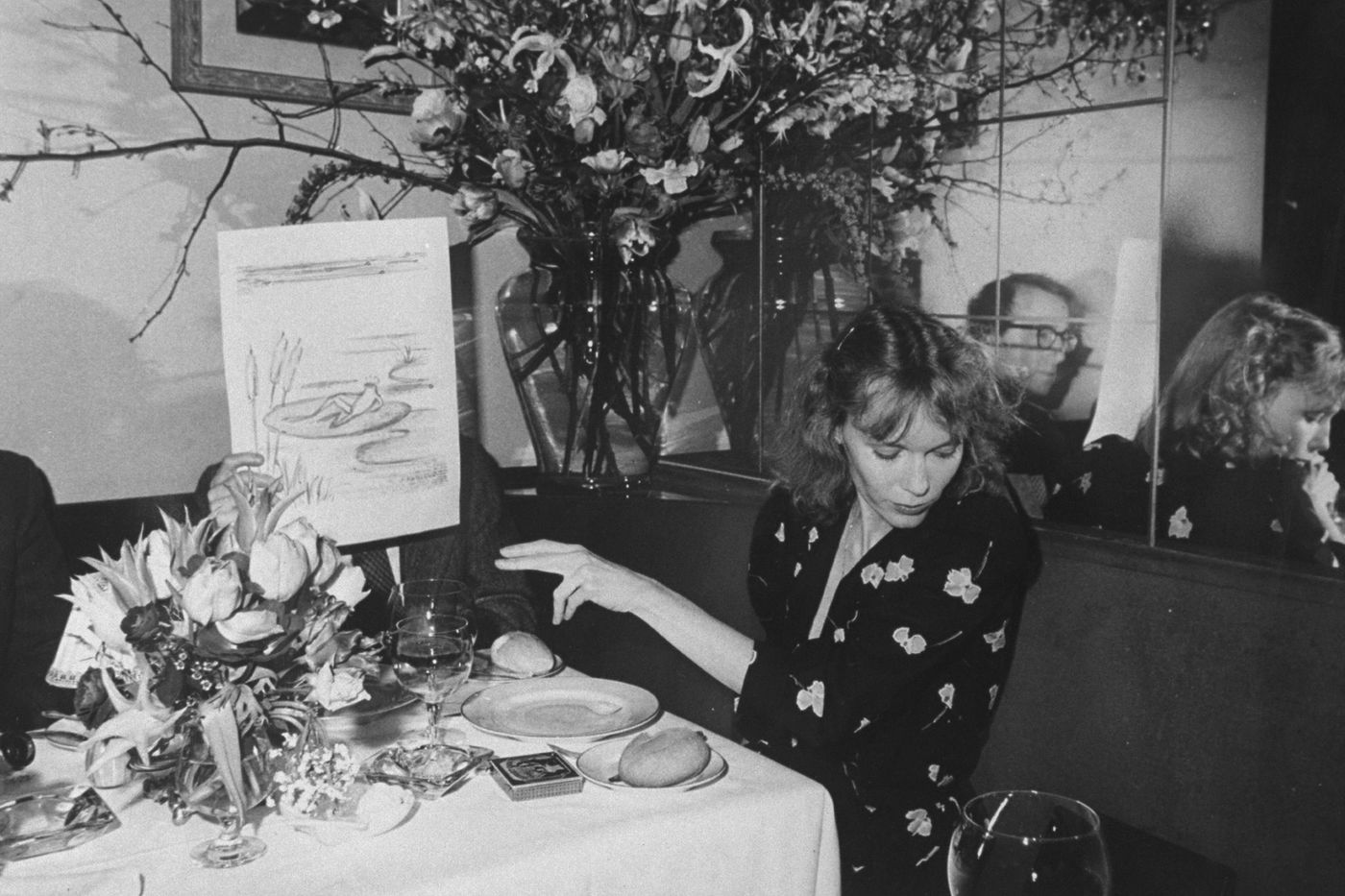 DMI/The LIFE Picture Collection/Shutterstock
DMI/The LIFE Picture Collection/Shutterstock
There was already French food in New York — at the Colony, the big hotels, Delmonico’s to some degree — when the 1939 New York World’s Fair opened in Flushing Meadow. But it was there that Le Restaurant du Pavillon de France served un-Americanized, uncut Gallicness, run by a hotheaded restaurateur named Henri Soulé and prepped by a well-drilled team brought over aboard the grand Art Deco liner Normandie. There was capon in tarragon aspic; saddle of lamb; there were, of course, frogs’ legs. An order of foie gras was 75 cents. The restaurant served more than 136,000 customers from April through October and did it again for the Fair’s repeat engagement in 1940.
When it was time for Soulé and his chefs to go home, France was no longer France. The Nazis had reached Paris, and the Normandie was seized for conversion into an American troopship. Soulé opted to start fresh in New York; his restaurant, Le Pavillon, opened that year on West 55th. Affluent New York took notice, The New Yorker profiled Soulé, and the place was consistently, reliably full. He moved Le Pavillon to a larger location in 1957 and, in its old home, unveiled a very slightly less expensive restaurant, calling it “my Pavillon for the poor”: La Côte Basque opened in October 1958.
Midtown, within a decade or so, gathered a huge array of descendants: La Caravelle, Le Poulailler, La Seine, La Grenouille, Le Cygne, and Le Mistral were all opened by Soulé’s former staff members and their employees. André Soltner and André Surmain’s Lutèce, though not directly linked to Le Pavillon, opened in 1961 and was widely understood to be the best restaurant in the U.S. They became known, both affectionately and disdainfully, as the Frog Ponds, and the best regarded among them gradually took on the moniker Les Six.
The ladies who lunch (labeled as such in 1970 by Stephen Sondheim, who lived about 300 feet from Lutèce) were the core customers. The ancillary Jackie O.’s of New York — her sister Lee Radziwill, the social queen bee Babe Paley, so many others — treated La Côte Basque’s banquettes as their cafeteria, smoking their way through countless lunches and slicing up other members of their cohort as expertly as servers did their Dover sole.
Where the Meatpacking District Was Born
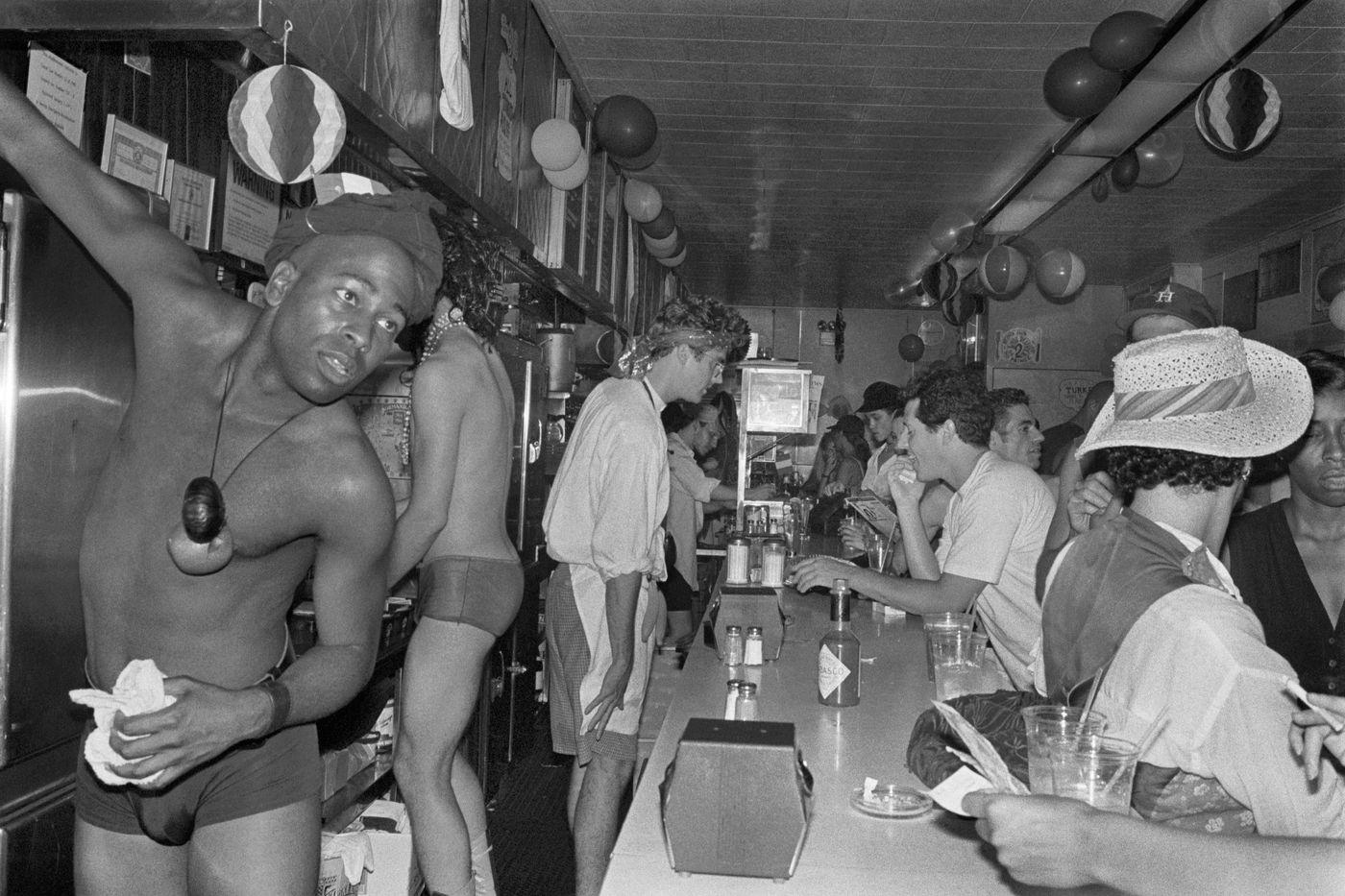 Photo: Tina Paul
Photo: Tina Paul
In July 1989, as Bastille Day celebrations lit up Paris, an immigrant restaurateur named Florent Morellet dressed up as Marie Antoinette and threw a party in the meat market of downtown Manhattan.
Florent, his bistro-diner that felt like a Weimar speakeasy with a Debbie Harry soundtrack, had been a hit since opening on Gansevoort Street four years earlier. Madonna was an early customer, followed by seemingly every boldface name in New York: Calvin Klein, Johnny Depp, Keanu Reeves, Roy Lichtenstein, Christo and Jeanne-Claude, David Bowie and Iman, Prince. But business sagged in the late ’80s as recession loomed and NYPD efforts to clean up Times Square pushed the sex trade into the neighborhood, where meat-packers still hung carcasses from hooks under the sidewalk awnings.
“It was dead, it was summer, and we were having a very bad time,” Morellet, 70, recalled recently from his home in Bushwick. “To find a good time, I decided to focus on Bastille Day.”
It was a hit, and Florent’s annual Bastille Day parties blossomed into a street festival that, at its peak around 1997, he estimates attracted 20,000 people. The party downsized in 1999, but it remained the signature event of a restaurant that was like a gay Elaine’s with better food.
Even as the restaurant’s reputation grew, Morellet kept it feeling like a neighborhood hangout. Some of his artwork, detailed maps of imagined places, lined the walls. After being diagnosed with HIV in 1987, he updated his T-cell count on the specials board.
And then Florent appeared on Sex and the City — twice. In retrospect, it was a clear sign this was the Meatpacking District now. “It’s impossible to say when it changed. It’s like the frog that can’t figure out when water’s boiling,” said Morellet.
It was the rent that finally did in Florent — what had been $6,000 a month became a reported $30,000. At the same time, more businesses in the area meant more regulations. After a series of five parties, themed around the Kübler-Ross stages of grief, Florent closed at the end of June 2008, just two weeks before Bastille Day.
“Democracy, I hate it,” Morellet said. “It was so much easier when there was only one queen on the block.”
Where Chinese Actors Served Chow Gai Kew
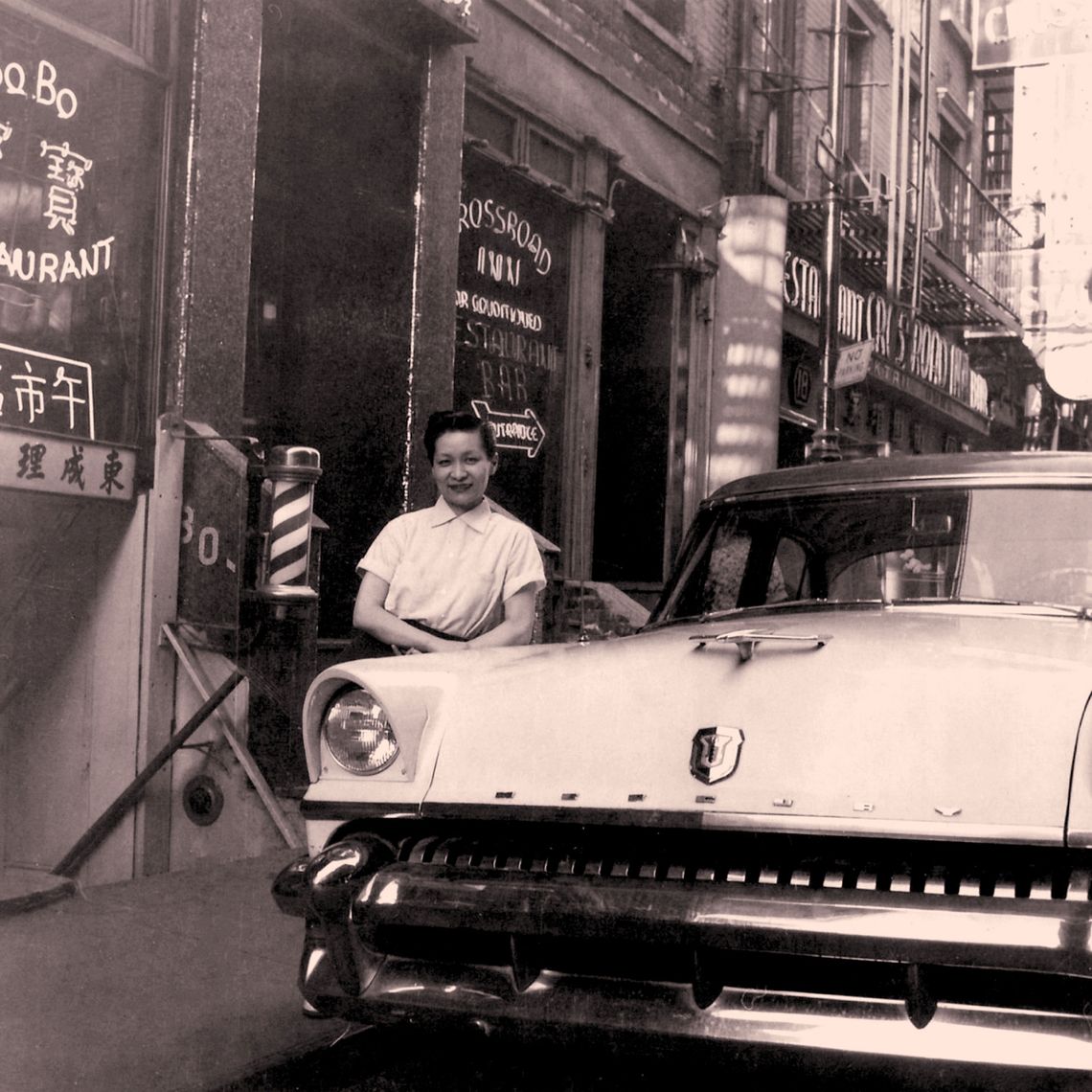 Photo: Still from documentary Golden Gate Girls by S. Louisa Wei
Photo: Still from documentary Golden Gate Girls by S. Louisa Wei
Esther Eng was said to be the first Chinese woman to direct movies in both the U.S. and China. Eng, who lived openly as a lesbian, dressed in masculine clothing, and went by the nickname Big Brother Ha, grew up in San Francisco, made movies in Hong Kong, and moved to New York by 1950.
As the story goes, Eng ran into an old friend, Bo Bo, a Chinese actor who was reluctant to return to China, which was then under Mao. She decided to open a restaurant to give her friend and his troupe work. Called Bo Bo, it was located on Pell Street in the heart of Chinatown. In time, the restaurant became a harbor for expat Chinese actors, a place where they could get help learning English and money to pay their rent. The food was notably excellent: egg roll stuffed with lobster, chow gai kew, snails in black-bean sauce, and duck with litchi. Eventually, it became known, too, for long waits, which Craig Claiborne said in his New York Times review was the only issue he had with the place.
Where Malcolm X Organized Over Omelets
James Alston IV opened his homestyle Harlem diner in 1962, and it quickly became a destination for Black politicians, religious leaders, and community organizers. 22 West doubled as a bar, a jazz club, and even a gallery. It never fully embraced the trappings of a social club, but, with its plates of oxtails, smothered chicken, and greens, the restaurant nurtured a sense of community and trust among its diners. Frequent customers included Muhammad Ali; Percy Sutton; labor leader Howard Bennett, who would go on to fight to make Martin Luther King Jr.’s birthday a national holiday; and, most notably, Malcolm X, who became such a fixture that he used the restaurant’s pay phone to make radio announcements and regularly held court in his own back booth. (And it’s where he took meetings with Alex Haley, who was writing The Autobiography of Malcolm X.) Following his assassination in 1965, a black-and-white oil portrait was hung over his table.
Where the Strokes Brought Their Girlfriends (And Then Other Girlfriends)
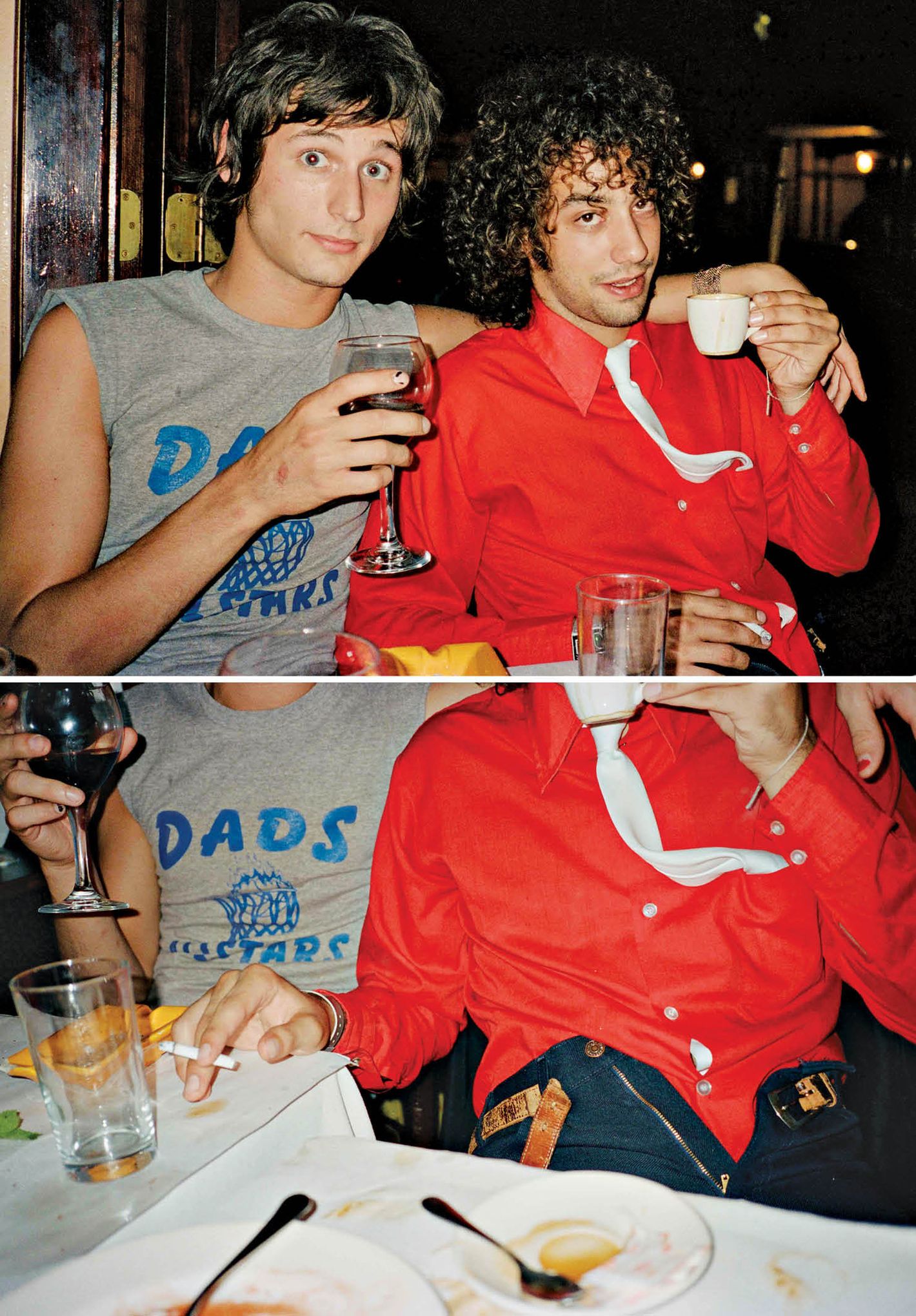 Photo: Nick Valensi Archive
Photo: Nick Valensi Archive
There’s a certain kind of restaurant that feels fancy when you’re young and broke and brand new to the city, as I was in 1999, the year Lavagna opened on East 5th Street just west of Avenue B. By the time I started hanging out there in the mid-aughts, the rustic Italian joint was part clubhouse, part grown-up restaurant that adults hadn’t spoiled: It was ours.
The Strokes were and remain the most enduring regulars. “Brett first brought them,” recalls the restaurant’s owner, Yorgos Hatziefthimiou, referring to Brett Kilroe, the art director at the Strokes’ label, RCA, who designed the cover of their 2001 debut album, Is This It. “The Strokes started bringing their families, their girlfriends, and the other girlfriends, and their friends,” Hatziefthimiou says. “They were part of the furniture.”
“It was our go-to spot for birthdays and celebrations,” remembers then–Strokes manager Ryan Gentles.
The guys from the National and Kings of Leon, Adam Green of the Moldy Peaches, and Jack White “and his band of the moment,” as Hatziefthimiou puts it, were also regulars, along with “comedians who were friends with the Strokes,” like David Cross and Andy Samberg, with whom Hatziefthimiou wound up playing on an indoor soccer team assembled by Strokes lead singer Julian Casablancas. Behind the bar all these years later, there’s still a trophy they won in a tournament at Chelsea Piers.
I don’t live in New York anymore, but the last time I was at Lavagna, this past November, Gentles was there, too, celebrating his 46th birthday with a table full of friends. It’s still his go-to spot.
Where Graydon, Anna, and Tina Had Their Own Booths
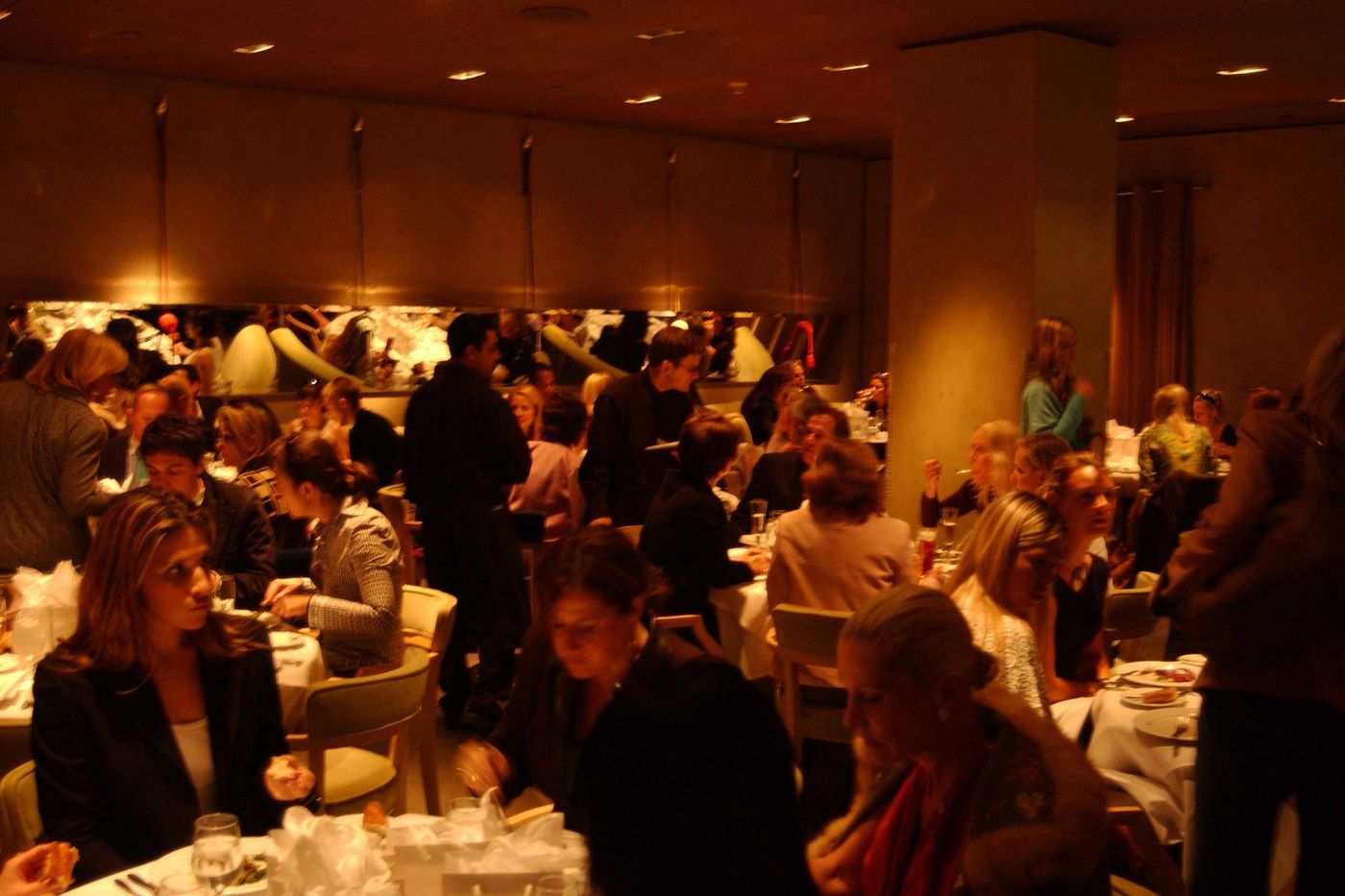 Photo: Patrick McMullan via Getty Image
Photo: Patrick McMullan via Getty Image
Back in the early 1990s, when magazines were fat with ads, relevance, and prestige, there was no place where the raw social power of Condé Nast’s top editors was more on display than at 44. The restaurant was housed inside an Ian Schrager hotel called the Royalton at 44 West 44th Street, just around the corner from Condé’s offices. The hotel’s interior was designed by Philippe Starck. “An early-’90s masterpiece,” remembers Graydon Carter, editor of Vanity Fair starting in 1992.
It was run by Brian McNally, who had been encouraged to open it by his friend Vogue editor Anna Wintour. “She was there from day one, which, you know, certainly didn’t hurt,” McNally recalls. “Graydon was a good friend as well, and he came every day as soon as he took over Vanity Fair, so that starts a little bit of a thing, having those two there every day. And Tina Brown, too.” The most important thing about having lunch at 44 was where you sat. Dana Brown wrote about the status scramble in his memoir, Dilettante, beginning with how he was actually working at 44 when Carter took a shine to him and hired him at Vanity Fair. There were only four banquettes at 44; one belonged to Wintour, one to Carter, one to Tina Brown, then editor of The New Yorker. The remaining banquette “was left open for whatever big shot happened to be in that day — Jackie O., Karl Lagerfeld,” Brown wrote. When Condé boss Si Newhouse was lunching, he bumped everyone down a banquette.
The rest of the room was defined by proximity to those tables. Gabé Doppelt, a former Condé editor, says, “Sometimes, Brian would ask, ‘Whose number is this?’” when a reservation would come in. “I would look it up in the directory, and I’d say, ‘Oh, a junior editor at Glamour,’ which basically informed him that he could put them near the kitchen.” (“We weren’t that snobbish!” insists McNally, laughing.)
“Inevitably,” says Doppelt, who now works for the San Vicente Bungalows, “in the middle of the morning, Brian would call me in a panic and say, ‘I only have three booths, and Anna, Calvin, Donna, and Ralph are coming. What am I going to do?!’”
Where Billie Holiday Would Down the Night
Known simply as Well’s, it opened in 1938 as a three-booth, five-stool bistro in Central Harlem. It would later become a 250-seat restaurant famous far and wide for its chicken and waffles. Although Smalls Paradise, another Harlem staple, was likely serving its own version over a decade earlier, owner Joseph Turner Wells eventually trademarked a logo, helping to stake the Supper Club’s claim — misattributed — as the dish’s founder. The origins hardly mattered to the Black musicians and performers who headed there after shows at the Cotton Club, which, like many of the spots they performed at, remained segregated, prohibiting them from eating dinner there. Regulars included everyone from Billie Holiday and Duke Ellington to Sammy Davis Jr. and Frank Sinatra. In a 1984 New York Times article, published two years after Well’s closed its doors, Wells himself recalled, “People from Paris, when they’d come, would get chicken and waffles … The jazz greats — you name ’em, they’ve been here.”
Where Brooklyn Went After Shul
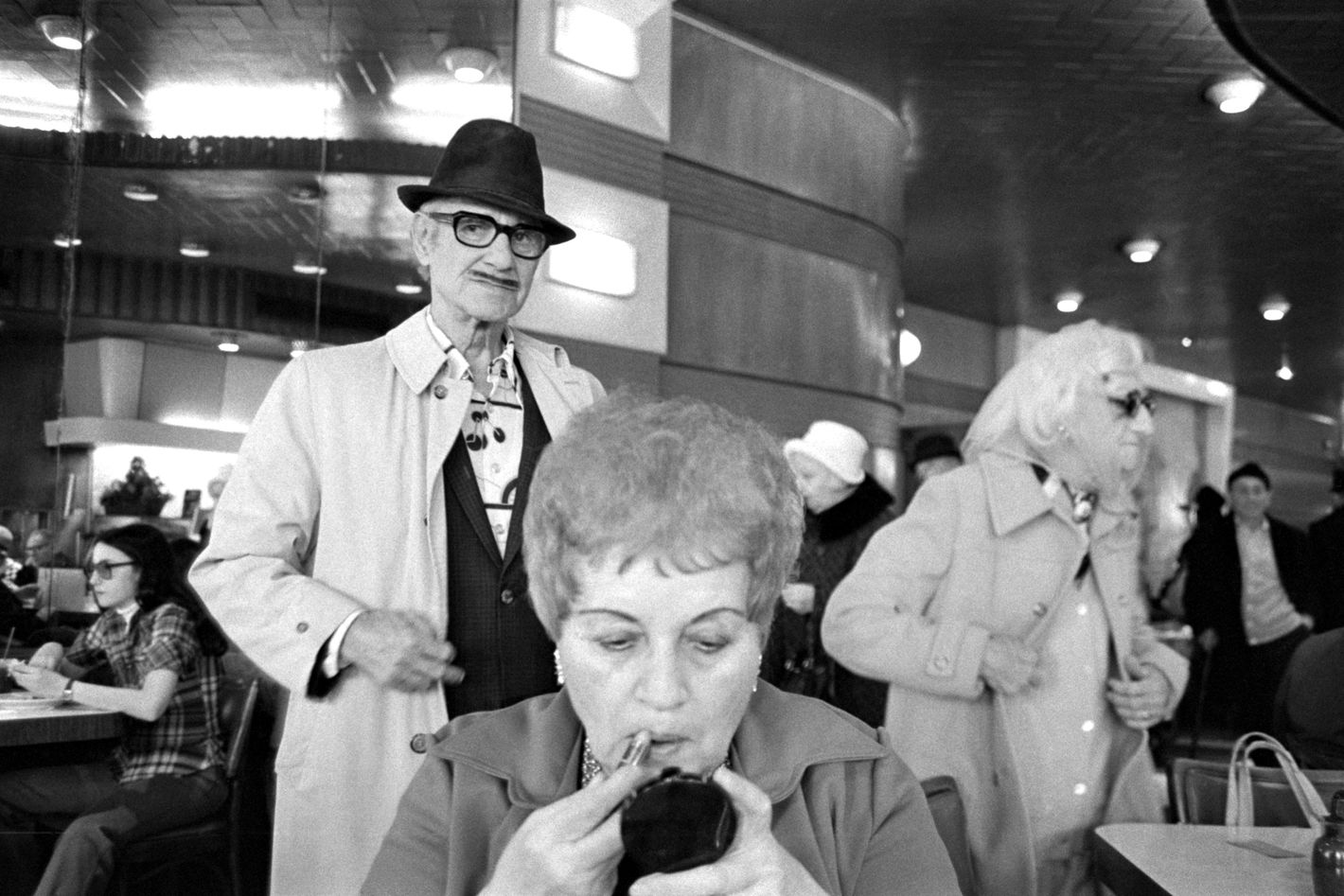 Photo: Marcia Bricker Halperin
Photo: Marcia Bricker Halperin
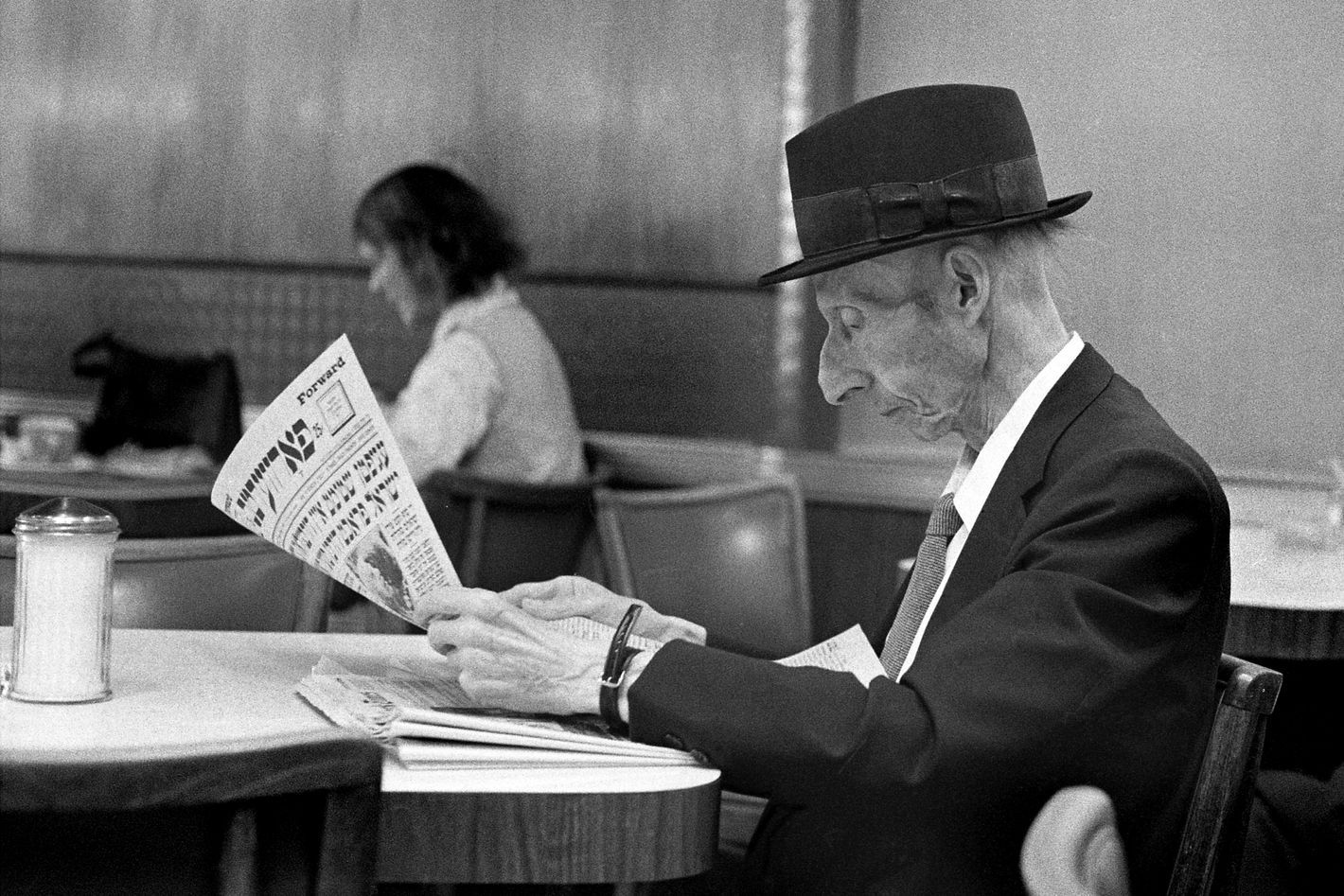 Photo: Marcia Bricker Halperin
Photo: Marcia Bricker Halperin
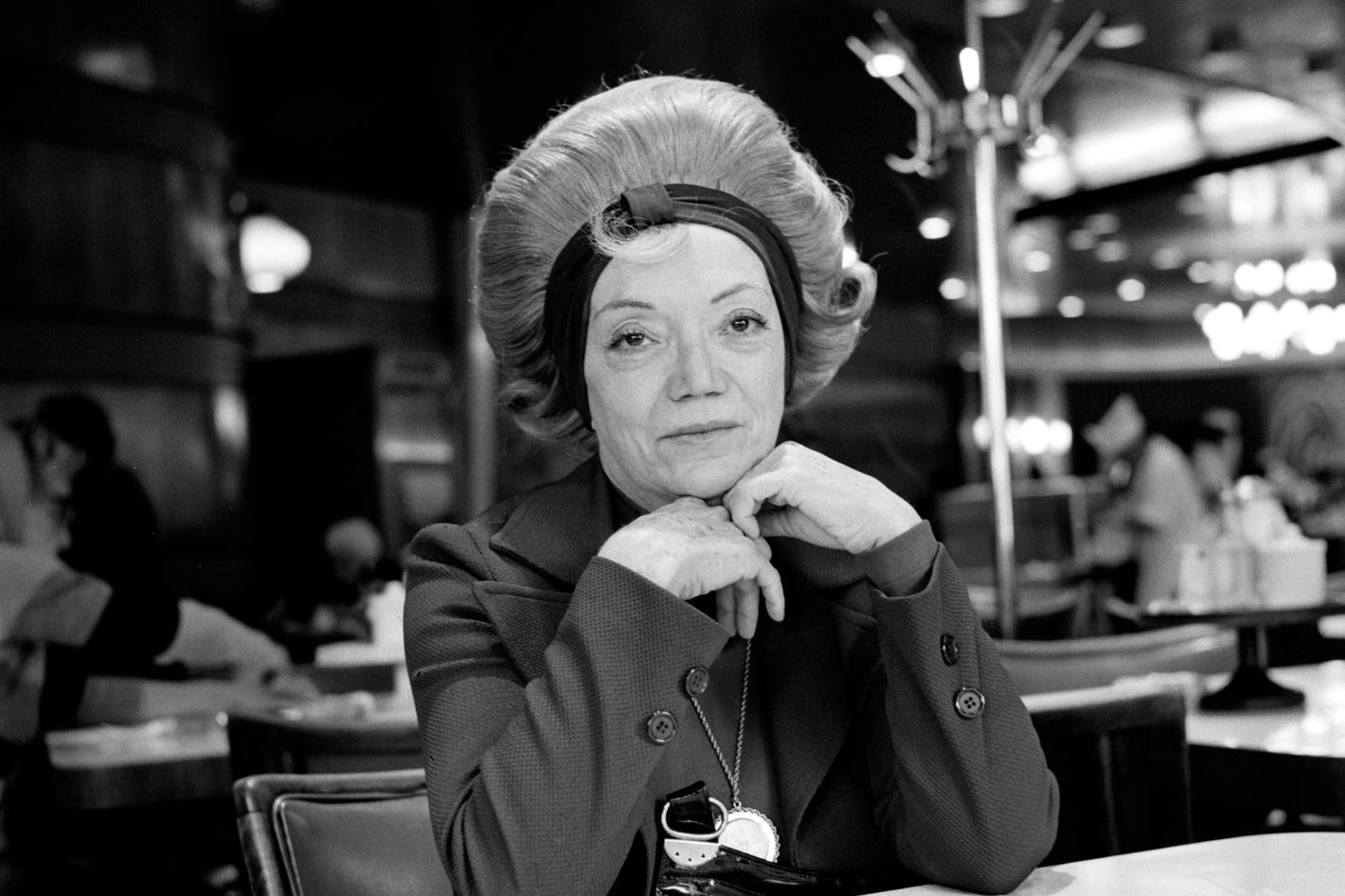 Photo: Marcia Bricker Halperin
Photo: Marcia Bricker Halperin
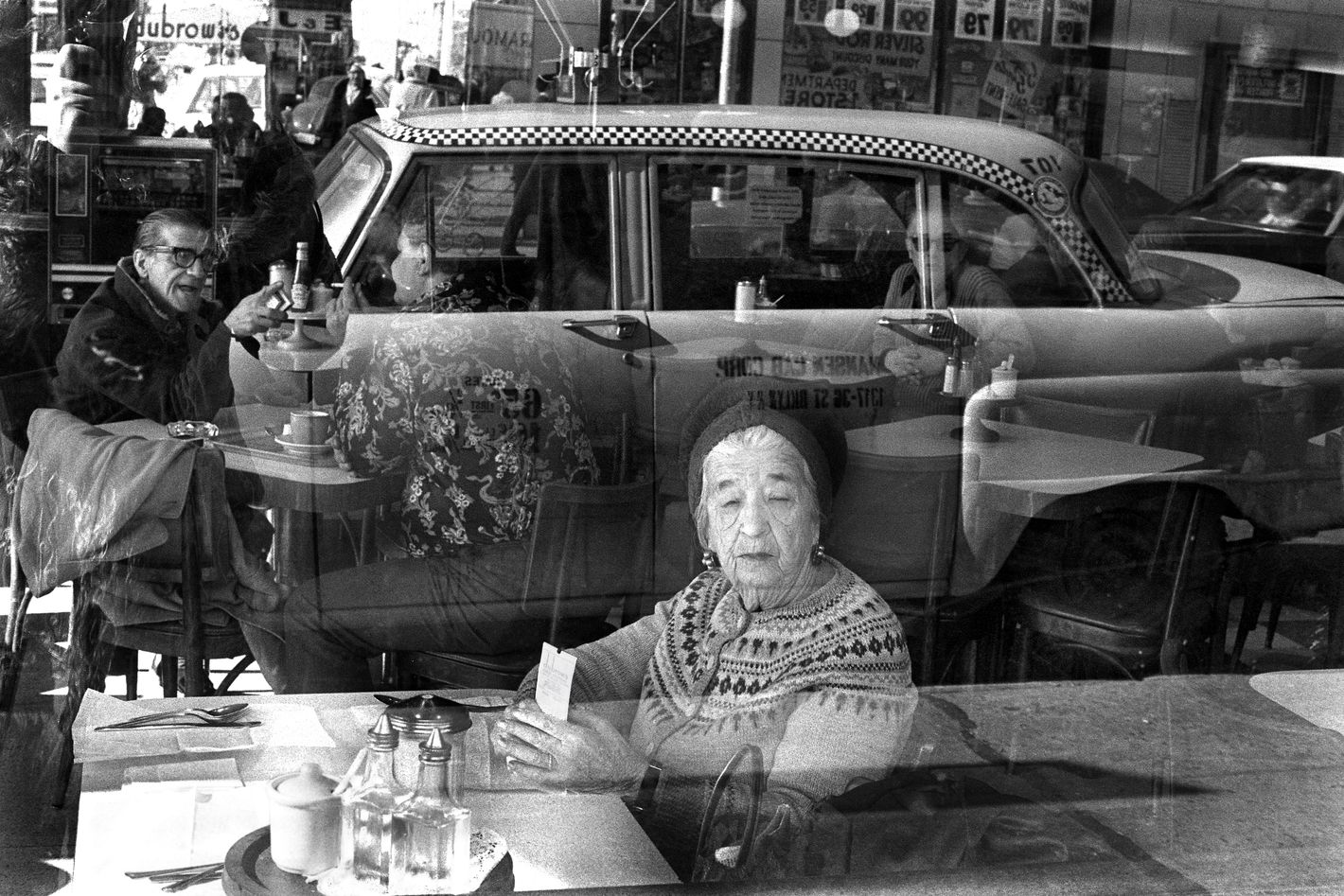 Photo: Marcia Bricker Halperin
Photo: Marcia Bricker Halperin
According to its slogan, Dubrow’s was the “Cafeteria of Refinement” — never mind that the BMT subway ran almost directly over its roof. The chainlet (established in 1929, dismantled in 1985) operated in several locations, but the one that lingers in the mind was at Kings Highway and East 16th Street. There, surrounded by showy Italianish murals and an elaborate tile water fountain, three generations of Flatbush residents ate well for not much. The food was comparable to what they’d get at an Automat or a coffee shop but with a slightly Jewish accent: coffee cake, blintzes, chopped liver. Dubrow’s was open 24 hours, arguably busiest on weekends after services let out at Temple Ahavath Sholom. That made it a useful place to mingle with — and court — voters. John F. Kennedy, campaigning on a Thursday night in October 1960, dropped by to shake hands and have dinner with Carmine De Sapio, head of the Tammany Hall political machine. JFK ordered a steak and a Heineken; he beat Nixon in Brooklyn two votes to one.
Where Sirio Greeted Us Beautifully
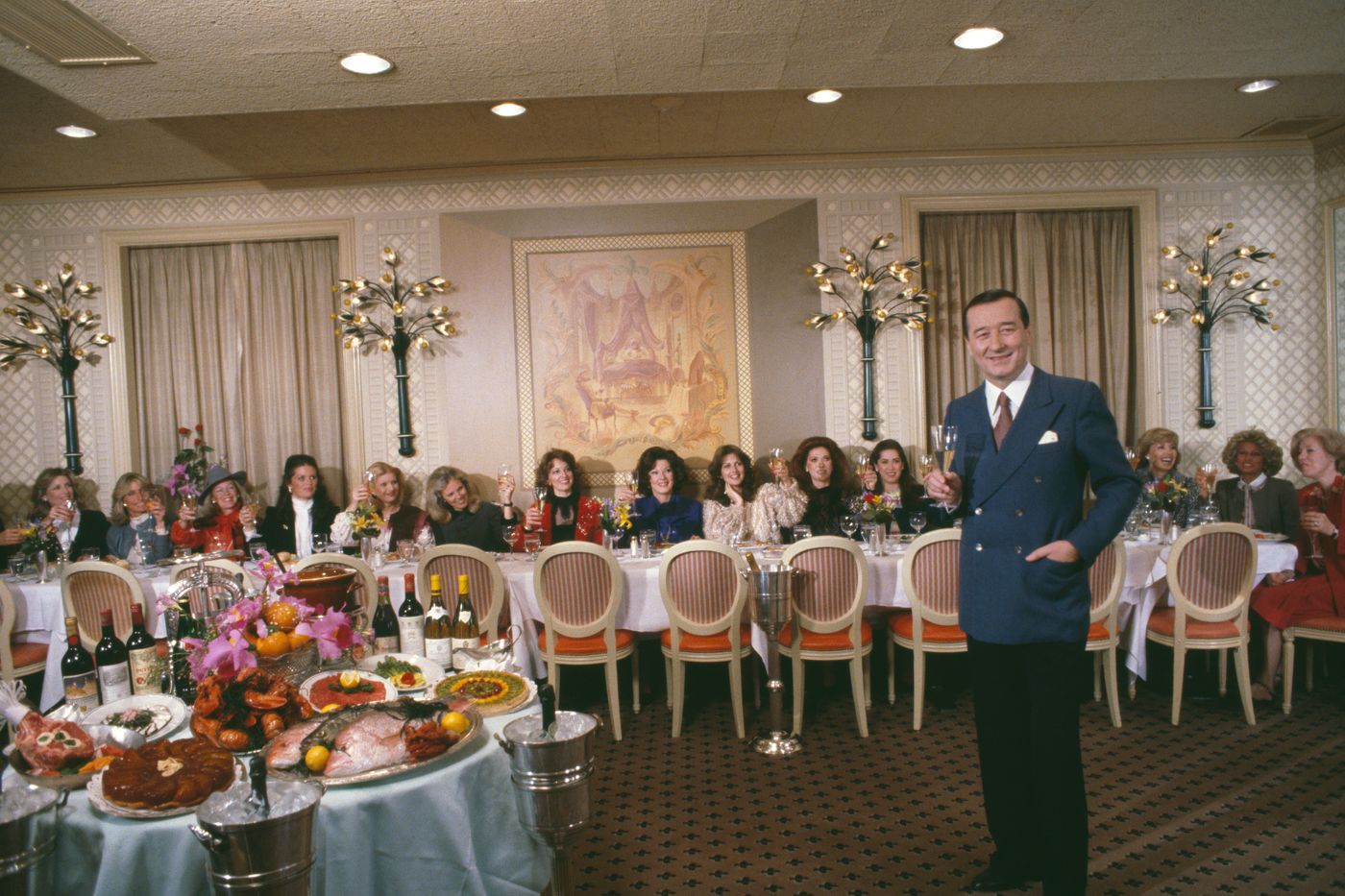 Photo: Slim Aarons/Hulton Archive/Getty Images
Photo: Slim Aarons/Hulton Archive/Getty Images
You walked in …
Sharyn Mann, co-founder of the Food Allergy Initiative (now FARE): Sirio Maccioni would be at the door and sat everyone. He was just one of the most intelligent people. I wish he could have run for president! He knew everybody and seated everybody perfectly.
Barbara Tober, former editor-in-chief of Brides and longtime philanthropist affiliated with the Metropolitan Opera and Citymeals on Wheels: We were greeted beautifully.
Jamee Gregory, author of New York Parties: Private Views and past president of the Society of Memorial Sloan Kettering: You know, whenever you entered Sirio’s kingdom, he made you feel really, really special. And if he knew you, it was a place you could always call at the last minute and he would find a table for you. I think that’s one of the things all of the regulars really appreciated. He seated people like it was a chess game.
BT: There were the tables of prestige. Sirio knew who should get the top table of prestige and the second top table of prestige. He kind of knew who was an “I’m important and you’re not” person, and he put them in the best place possible. If he couldn’t find the best place, he’d apologize six ways to Sunday and put them in the next best place possible.
SM: Sirio had an eye. He picked people out. I don’t know what he was looking for, but he was brilliant.
Then subtly looked around …
JG: My friends and I would go there at least once a week. At lunch, Sirio held the tables on the banquette for people who came a lot. You would always see, say, ten pairs of women or men or whoever that you knew. And the ones you knew, you were glad you knew them. It felt like a club. It was not just random people. And then there would be the odd one you’d never seen before, like Richard Nixon.
Kimberly Yaseen, past chair of various fundraisers for the American Cancer Society and the New York Philharmonic: Sophia Loren would be there, or Ron Perelman would be holding court, or Gayfryd Steinberg. You looked across the room and everybody just sparkled. They looked beautiful.
JG: People came in dressed for the occasion. All the women had a Bill Blass suit or an Oscar de la Renta dress. You didn’t go to that restaurant coming from the gym. You wouldn’t walk in there unless you were pulled together.
BT: It was chic. My husband always wore a tie and suit, and he always looked elegant. He was a real gentleman. And I look at these guys today, and some of them are very, very handsome. But they look like they just came out of the gym. Why? I mean, do you really think you look so gentlemanly and terrific and handsome that way? No, you don’t. It’s pitiful.
SM: You would always have to drop your napkin and look both ways. Henry Kissinger would be sitting in the front. Or the conductor Zubin Mehta. You felt really good about yourself just being there.
BT: There was a corner where everybody would look right away to see who was sitting there. But I wasn’t looking around much. I was so in love with my husband.
Someone might call Nancy Reagan on the house phone …
KY: My recollection is that I ate lunch there several times a week, not always with the same women. We would chitchat. And, you know, if you were trying to finance a charity ball or you wanted someone to be an honoree, you would take them to Le Cirque because it was a glamorous place.
SM: We went there for lunch for a reason. By the end of two hours, you had figured out your whole committee. It was done. We didn’t have texting back then. You took out a little piece of paper; you had a pen. We planned the sponsoring committee for the Vietnam Veterans Memorial Fund — the one in New York, not in Washington — at lunch at Le Cirque. I remember Pat Buckley used the house phone and called Nancy Reagan and she agreed to join.
JG: If you were celebrating something or wanted to have a good giggle with your girlfriend, that was the place to go.
The food, the food …
BT: I remember always trying to lose weight. I don’t even think about it now. But in those days, because we ate out so much, I was always trying to figure out what was delicious but small.
KY: I didn’t eat very much — lots and lots of salad and grilled fish.
SM: The pasta primavera was the best in the city. That was the first time I ever had pine nuts that were roasted before they put them into the pasta. Oh, and there was the cheese soufflé.
JG: I remember going, and I won’t name names, but one person ordered three lettuce leaves in a salad. But they did have wonderful Italian food. My people weren’t so dietetic. We had the pasta primavera, and it’s pretty healthy because it had all the vegetables, right? It wasn’t like carbonara in cream sauce. When my mother-in-law, Lydia Gregory, was dying in 1979, Sirio heard that she was ill and he sent pasta primavera to her in the hospital. It was her favorite.
SM: And he did these amazing desserts. You didn’t just order an apple pie. When I had tables of ten or 15 women, he would bring out all these desserts, and each one was different. They had these desserts in the 1980s that weren’t so much about eating but about looking at them. There was one in the shape of a piano and another in the shape of a clown. Altogether, it was like a circus.
BT: The desserts always had something charming to decorate them. You would get your dessert, and Sirio would say, “Oh, look, isn’t that cute?”
Where the Mob Ordered Its Takeout
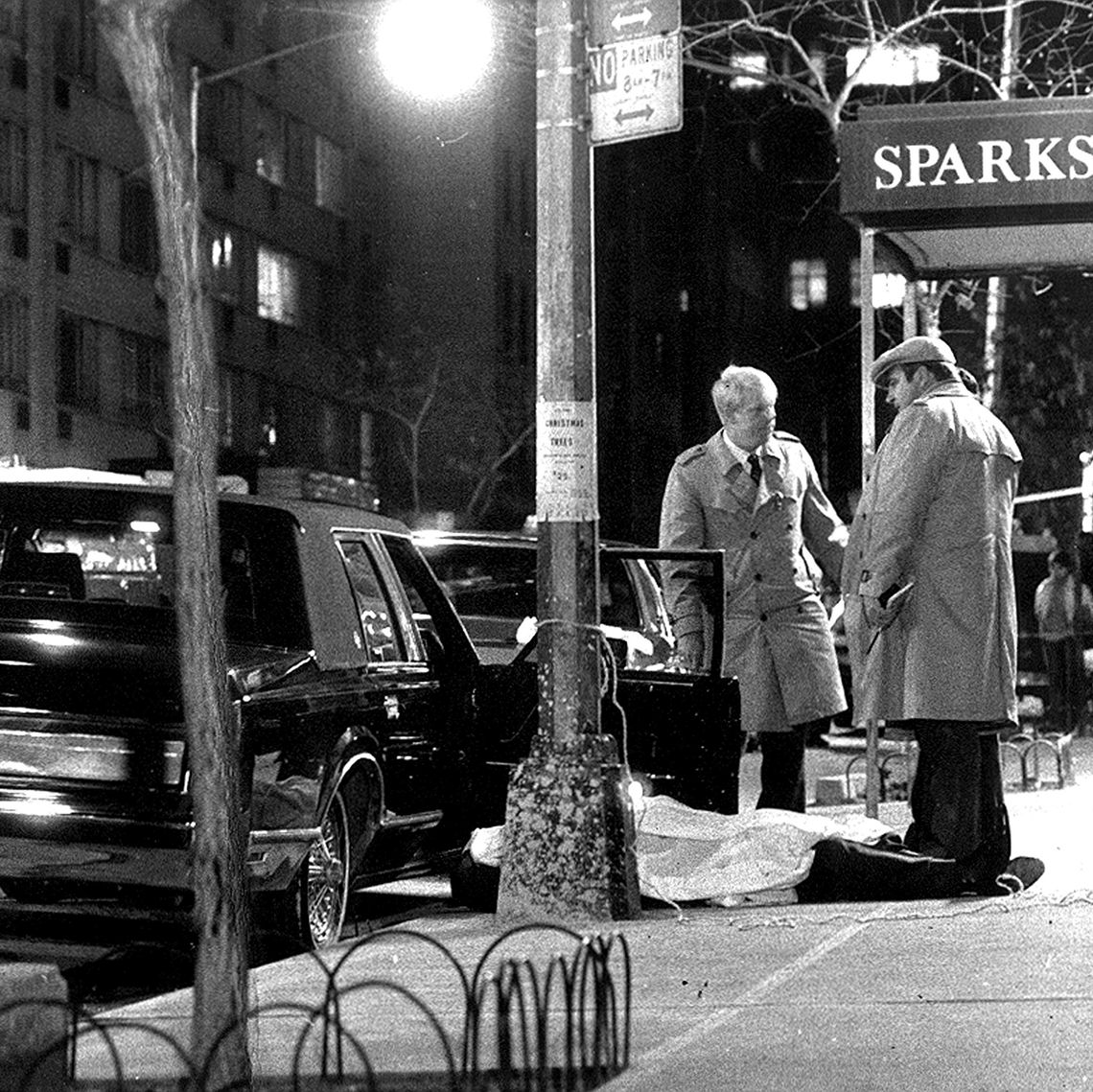 Photo: Thomas Monaster/NY Daily News
Photo: Thomas Monaster/NY Daily News
It’s a cliché, but it’s true: A restaurant is a good spot to knock someone off. The target is accessible, possibly seated, and likely unable to make a run for it. That’s what happened in 1979 to Carmine Galante, a top boss in the Bonanno crime family. On July 12, he was finishing up a meal at Joe & Mary Italian-American Restaurant in Bushwick. A cigar he’d lit after lunch would end up outlasting him.
It’s certainly the way it went in April 1972 for Crazy Joe Gallo at Umbertos Clam House, a seafood place that had opened a couple of months earlier. He saw the men coming for him — on his birthday! — and tried to bolt, but he couldn’t get out the door until it was too late. Two weeks later, New York’s “Underground Gourmet” ran a review of the restaurant. “Service was straightforward and not unfriendly,” the authors noted, “but a slight strain in the atmosphere was undeniable if understandable.”
Joe & Mary is gone. Umbertos moved across the street but kept its notoriety. Sparks Steak House in midtown seems to exist with no such gangster stigma, however, even though it was the site of what might have been the last great public rubout: Paul Castellano, arriving for dinner in December 1985, stepped out of his black Lincoln Town Car and into three men’s gunfire. The hit, it eventually came out, had been ordered by John Gotti, who soon superseded Castellano as the top man in the Gambino family, a spot he held on to until the government put him away in the early ’90s.
Where Elaine Kaufman Got Her Start
“If you know where the lesbians are, please take me,” Edie Windsor asked a friend in the early ’60s. Divorced for a decade, Windsor was unsure where to meet other women without risking her career at IBM. She ended up at Portofino Restaurant on Thompson and Bleecker, where she met Thea Spyer. Portofino was a straight restaurant that cultivated a discreet but dedicated lesbian following. Passing in whispers between friends, word spread: The food was delicious, the crowd was artistic, and on Friday nights, the women were almost certainly gay.
In the early days, Portofino was managed by Elaine Kaufman, who was honing her knack for drawing writers, artists, and musicians. “It was a wild and fun and very scary time because you never knew when the place was going to be raided,” says Friday-night regular Carlotta Rossini, now 79. But as a restaurant, Portofino had a loophole that offered a layer of protection: “There was no dancing, so what were they going to raid?” A dispute over finances led Kaufman to end her romance with Portofino owner Alfredo Viazzi, and she stormed out of the relationship and the business. “I smashed every glass and plate in the place,” she told Vanity Fair in 2002. Kaufman started fresh uptown, while Portofino carried on into the ’70s.
And Where She Made Her Name
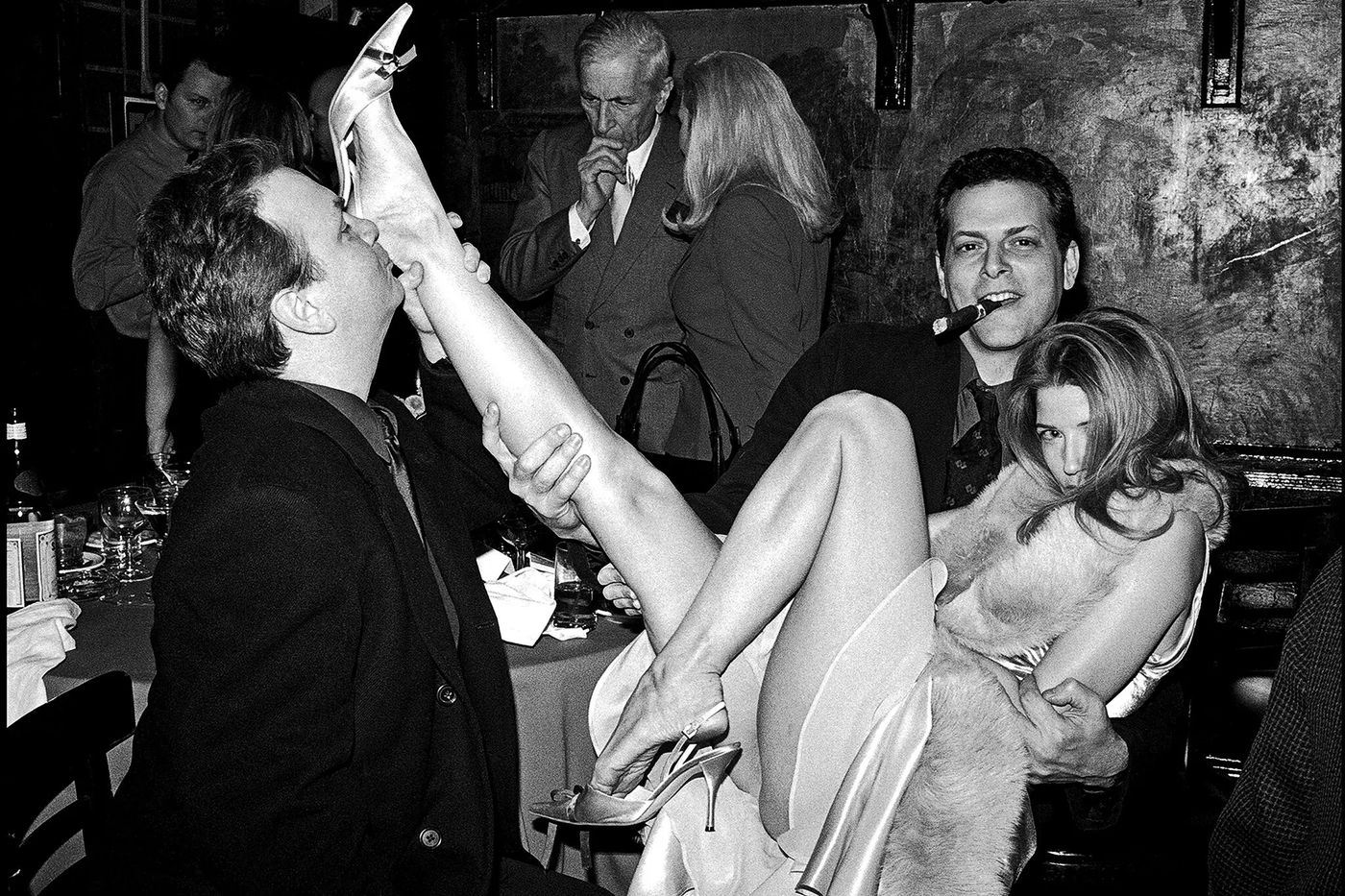 Photo: Jessica Burstein. Collection of the New-York Historical Society
Photo: Jessica Burstein. Collection of the New-York Historical Society
More has been written about Elaine’s than maybe any other restaurant, probably because writers and movie stars adopted it as their hangout. People liked to trash the food, but nobody went to Elaine’s for the meal. You went to Elaine’s for any of three reasons: (1) Elaine liked you and was willing to carry your tab if you were talented and broke; (2) Elaine liked your friends and you were allowed in by proxy; or (3) you wanted to get a glimpse of Norman Mailer, Michael Caine, or Woody Allen. Woe betide you if you were in group No. 3 and intruded on the privacy of group No. 1. Elaine was never shy about chucking people out.
Where the Village Watched Itself Walk By
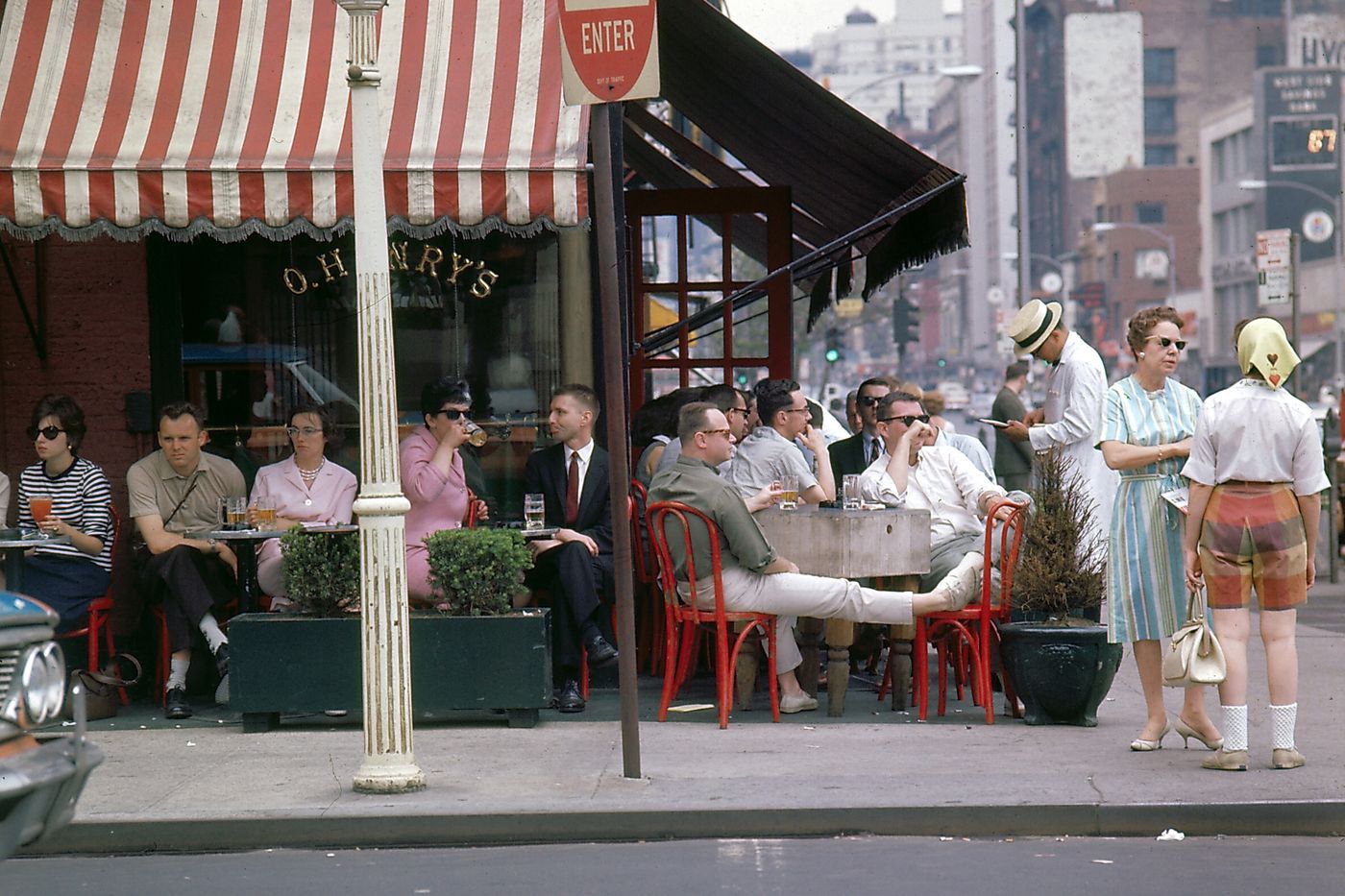 Photo: Unknown/Photofest
Photo: Unknown/Photofest
O. Henry’s Steak House replaced a butcher shop on the corner of Sixth Avenue and West 4th in 1959. The menu, apart from some onions, was almost all meat (to mix it up, there was a clam bar). The real draw was the people-watching afforded by the outdoor seating and the center-of-it-all Village location; Bob Dylan was known to sit out among the sidewalk tables.
Where a Panadería Became a Party
When Cositas Ricas opened in 2000, it became a refuge for Jackson Heights’ Colombian community, a modest bakery where you could nurse a café con leche and a guava pastry for hours. The energy inside skewed campy: Employees dressed in beige-and-green uniforms, and hamburger-shaped neon signs adorned the walls. Customers often stopped by wearing waist-trainers and with their hair in rollers. Then, in 2006, True Colors, a popular gay bar, opened next door.
The restaurant quickly became — and remains — a queer haven: To this day, it’s not uncommon to see a table of trans women and gays sharing a bottle of aguardiente sitting next to a group of straight dudes cursing at the soccer games playing on TV monitors overhead, all while waitresses float effortlessly among the aisles calling everyone amor. Over the years, the owners expanded the menu, painted murals on the walls, and added a giant yellow cow above the front door to advertise the various cuts of steak Cositas Ricas now serves, transforming it from a cozy corner panadería into a bacchanal befitting Roosevelt Avenue. After ten o’clock, the restaurant becomes a party. Salsa and cumbia play as diners dance in their seats when their song is on. Tune your ears and you’ll hear accents from El Salvador and Uruguay and the Dominican Republic mingling with those of the cooks shouting out orders for bandeja paisa — the classic Colombian dish consisting of rice, beans, chicharrón, chorizo, fried egg, avocado, and a crispy arepa — in the open-concept kitchen.
In the past two decades, Cositas Ricas has hosted the likes of Action Bronson and J Balvin, who filmed the music video for “Nivel de Perreo” on the roof in 2022. The real stars of the show are the locals. Paula Caceres, a line cook who was raised in Jackson Heights, was a regular at the restaurant around 2010. “It’d be packed with people coming home from work, couples on dates, the gay hairstylists from the salons down the street,” they recall. “I swear you’d see a baby getting baptized at a table, just chilling.”
Where Def Jam Lunched
 Photo: Ron Galella Collection
Photo: Ron Galella Collection
It seemed like all of Def Jam used to go to Time Cafe. The female record executives, especially — Rhonda Cowan, Tracey Waples — used to hang out there. We were having so much fun. And that food was good. The angel-hair pasta — oh my God, it was just incredible. One time, I was gonna have a meeting with Andre Harrell, God rest his soul, the former head of Uptown Records and Motown. I told my relative to meet me before so I’m not sitting by myself. She sat down and started to steal the silverware. I was like, “Oh my God, put it back.” Andre and Russell Simmons came walking in, she got up, and the silverware fell everywhere — clink, clink, clink. I turned bright red. When the waitress came over, she just picked up the silverware, gently placed it back on the table, and said, “Would you like anything else, Rosie?” I never did tell Andre. —As told to Ben Kesslen
Where We Drank, and Fought, and Ate Big Macs With Andy Warhol
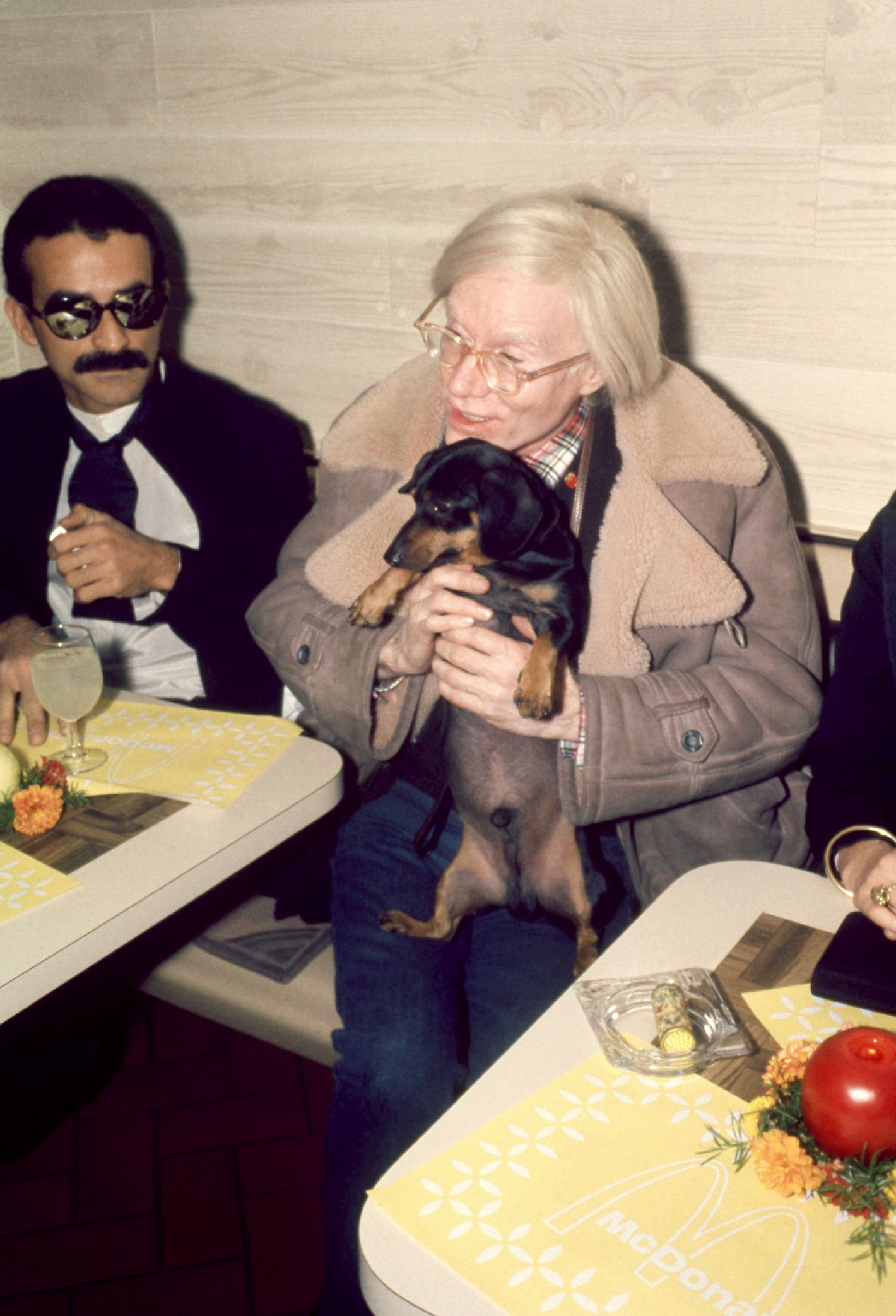 Photo: Oscar Abolafia/TPLP/Getty Images
Photo: Oscar Abolafia/TPLP/Getty Images
To a heedless visitor, every McDonald’s looks about the same. But for as long as the fast-food chain has been in New York (its first store opened here in 1972), certain locations have served different purposes — as a high-low venue for a black-tie benefit gala attended by Andy Warhol in 1976, a quasi rec center for elderly Korean patrons in Flushing in 2014, or simply as hubs for various, and often debaucherous, crews throughout the five boroughs.
In the late aughts, at around 2 or 3 a.m., when the Lower East Side nightlife scene known as Hell Square began shutting down, the McDonald’s on Delancey and Essex provided an antidote to closing time: You didn’t have to go home, and you absolutely could stay there. “It was another character
in our lives. It wasn’t just an establishment,” says Brenden Ramirez, a bartender who remembers eating “McGangbangs” (a folkloric McDonald’s item that involves shoving a McChicken into a McDouble) while patrons took swings at one another. Lola Jiblazee, who hosted parties at clubs like Hotel Chantelle and the DL, would often marshal groups of people who thought they were following her to an after-party for a late-night visit.
In Tribeca, the Chambers Street McDonald’s has long replaced suburban family basements for Stuyvesant High School students in need of somewhere to misbehave. “If before a school dance, you wanted to get a little buzz, that was the place to be,” says Emma Carlisle, who graduated in 2006. “Its value was that it was lawless,” says the writer Becky Cooper, who graduated from Stuy that same year and doesn’t remember ever eating any
food at that McDonald’s.
Uptown, from around 2013 to 2016, denizens of Murray Hill may recall a mostly finance-guy scene at the 33rd Street McDonald’s after a night at Bowery Electric or Phebe’s. “The Wolf of Wall Street had just come out,” says one former regular of that location. “It was all these kids who thought they were Gordon Gekko — rich kids in suits at the McDonald’s, pulling out their BlackBerrys.”
Where Cabdrivers Made Their Pit Stops
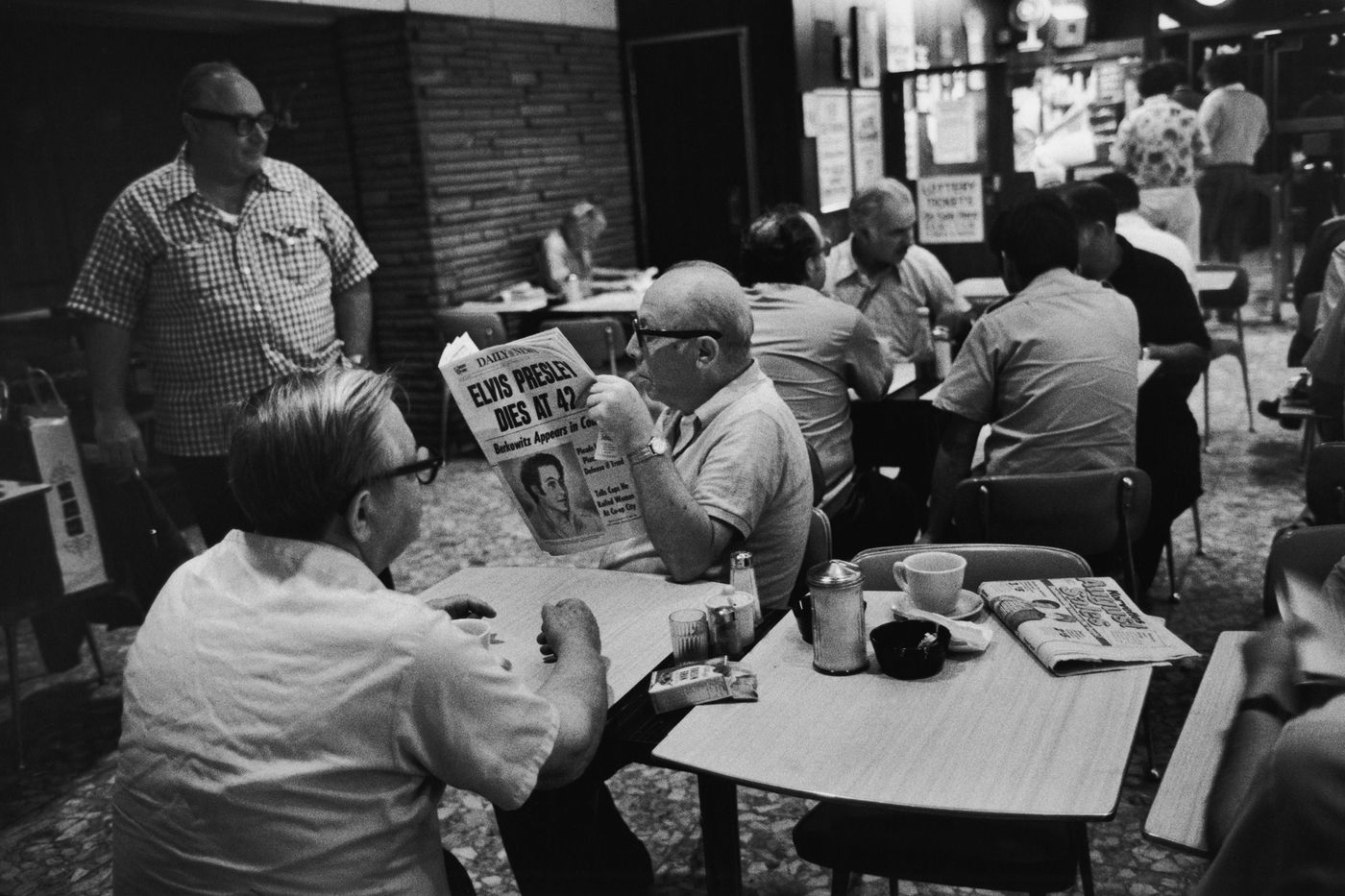 Photo: Sid Kaplan
Photo: Sid Kaplan
Belmore Cafeteria
Park Avenue South between East 28th and 29th was always lined with cabs; Belmore Cafeteria, named for a brand of cigars, served food to drivers at all hours. The Belmore occupied a culinary niche that’s now gone, that of steam-table corned-beef hash and boiled potatoes, borscht and roasted squash, served on fiberglass trays. The hamburger was reportedly pretty good, and there were pitchers of water in case a customer needed to run outside and top up his radiator. Taxi Driver made it famous — Peter Boyle, as Wizard, lays out his earnest if incoherent philosophy to Travis Bickle there late one night — but times change and cabbies retire. The building came down for a beige apartment tower in 1984. —Christopher Bonanos
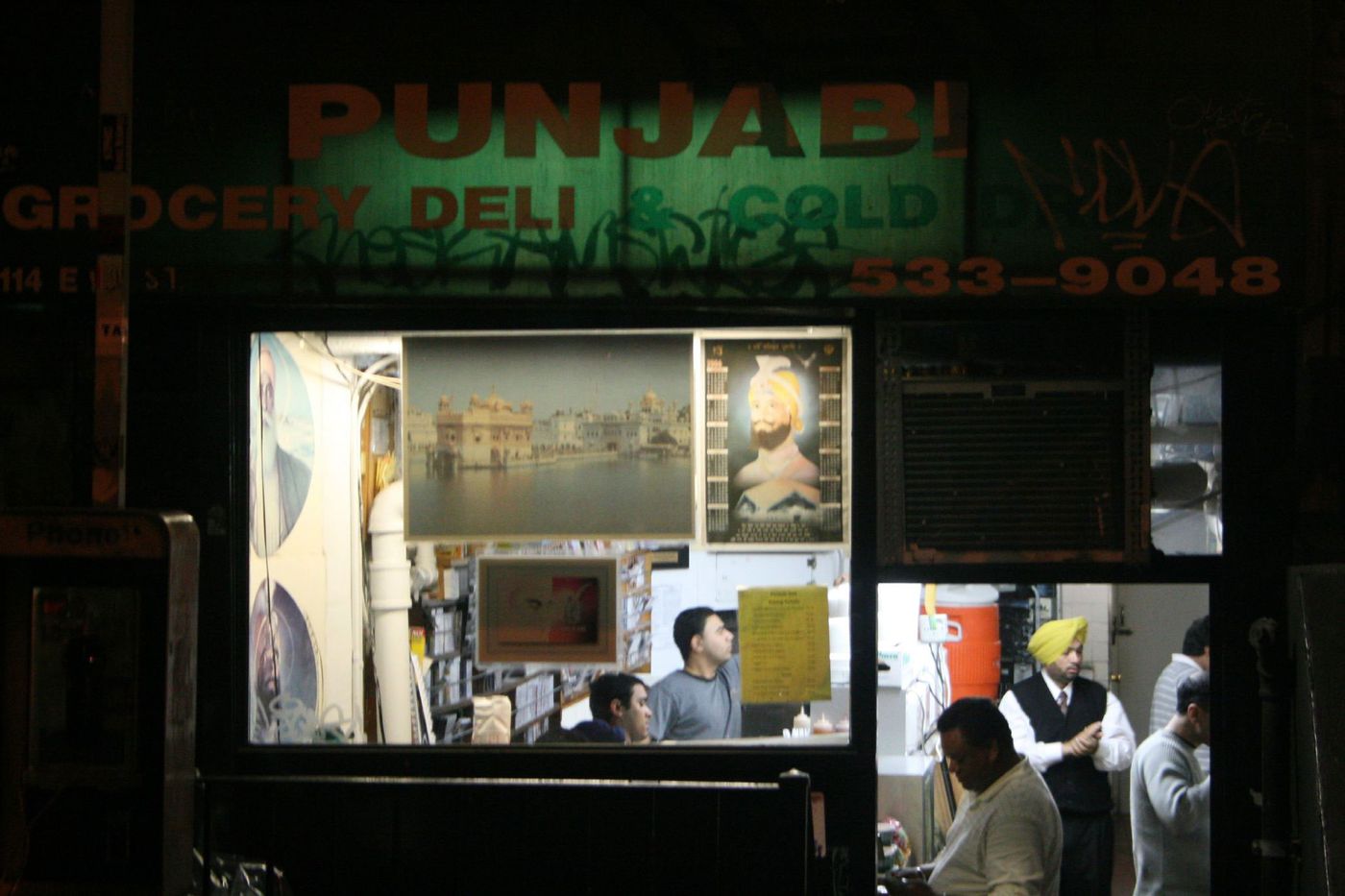 Photo: Dave Cook
Photo: Dave Cook
Punjabi Deli
By the early 1990s, South Asian immigrants had taken on the mantle of the yellow-cab industry. As a cabdriver for five years, Kulwinder Singh faced what he calls “the big problem” of finding a bathroom — public restrooms had vanished and store owners would often turn him away. In 1994, he set out to solve this himself, opening Punjabi Deli in a sliver of a space on East 1st Street. Getting the message out was easy: He told drivers he knew, who spread word over the radio. He offered not only a bathroom but tea, coffee, and affordable food made by his family members. There was kheer, samosas, and kadhi pakora that tasted like home for men who had left their own families behind. Singh estimates 300 to 500 cabbies would visit every day. The business could go through 3,000 disposable cups in a week. It was open 24/7 because there was always a cabbie on the road. By the time Harpal Singh started driving in 2003, Punjabi Deli was well established. It was the first place he found in New York that felt familiar: “For me, the food I was getting there was a dream come true.” —Chris Crowley
Where I Accidentally Invented the Clubstaurant
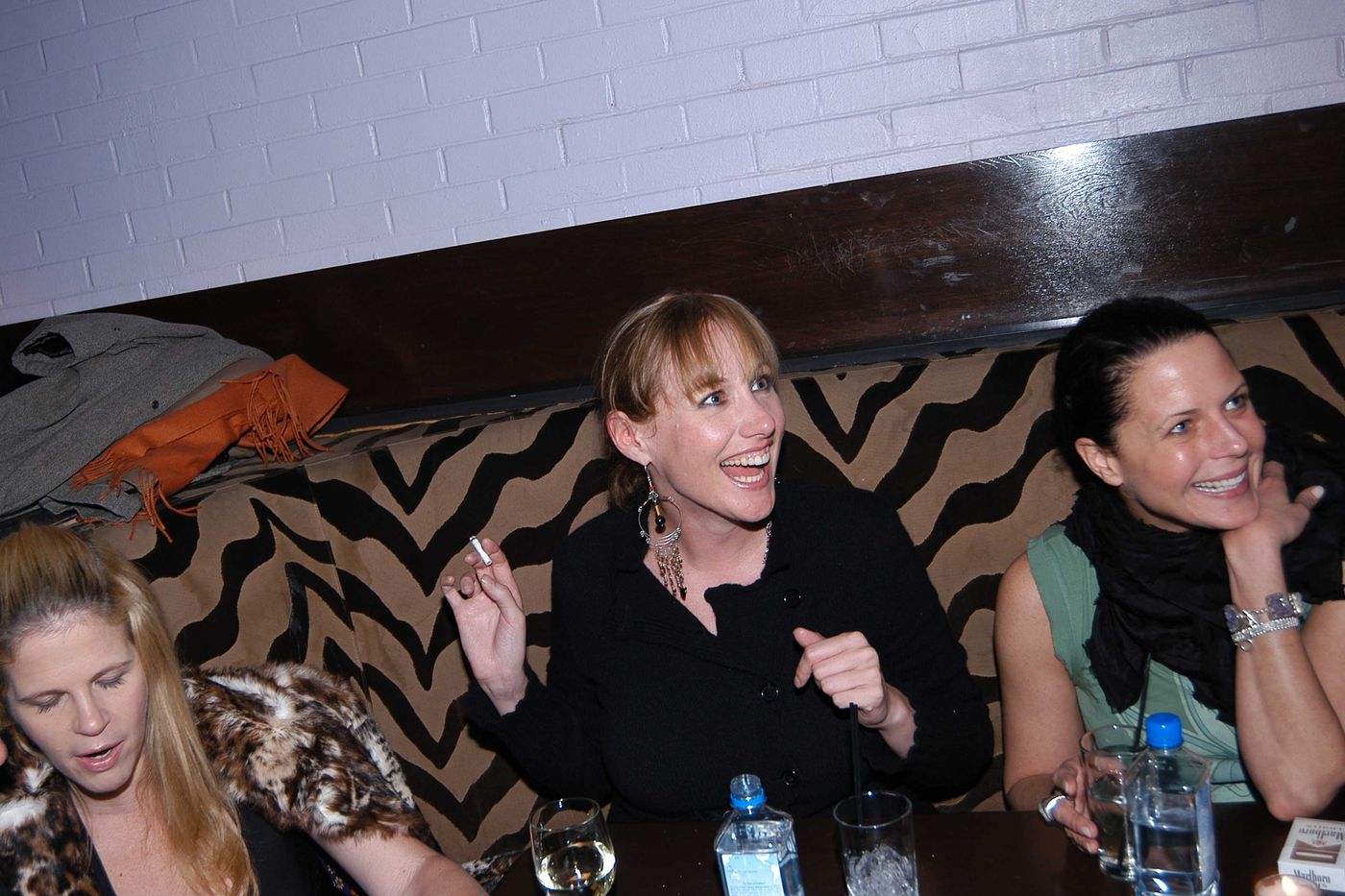 Photo: Patrick McMullan via Getty Images
Photo: Patrick McMullan via Getty Images
When I was 8 years old, I wrote a note saying I was going to have my own restaurant by the time I was 30. But as that birthday approached, I was looking and looking for a space and everything was too expensive. My best friend, Yvonne Force Villareal, said Chelsea was going to be the next big place, but I wasn’t totally convinced. I wasn’t looking to be cool. I was looking to be successful.
Our first night, Lot 61 had 500 people from all over. The only celebrity I ever knew, an old pal, a bestie, was Bruce Willis. He was really so instrumental in sending so many people. When Kevin Costner was in town for three months, he came in because Bruce Willis told him to. It just clicked from there. I had a great referral system because we made people feel comfortable, safe, and happy. And we never talked to the press.
We didn’t really have a cocktail hour because nobody was around Chelsea at five o’clock. The exception was Annie Leibovitz, who would bring in her whole crew after a shoot. She’d come around 4:30. I even opened up at three for her. She got us on the Vogue radar in the first few months. We then did a big after-party for Armani Exchange for 250 A-list people, true A-list: De Niro, Sophia Loren, Marty Scorsese.
We’d serve food all night, and at 10 p.m., it turned into a disco. Mark Ronson was our first DJ. We also had amazing art on the walls: Damien Hirst, Jorge Pardo, Rudolf Stingel, and Sean Landers. I wasn’t trying to do anything other than put together something that I thought people would like. I came from Bouley, four-star dining. I was not a club owner, but I was too afraid to do a classic restaurant. —As told to Ben Kesslen
Where We Ate Lobster Till It Hurt
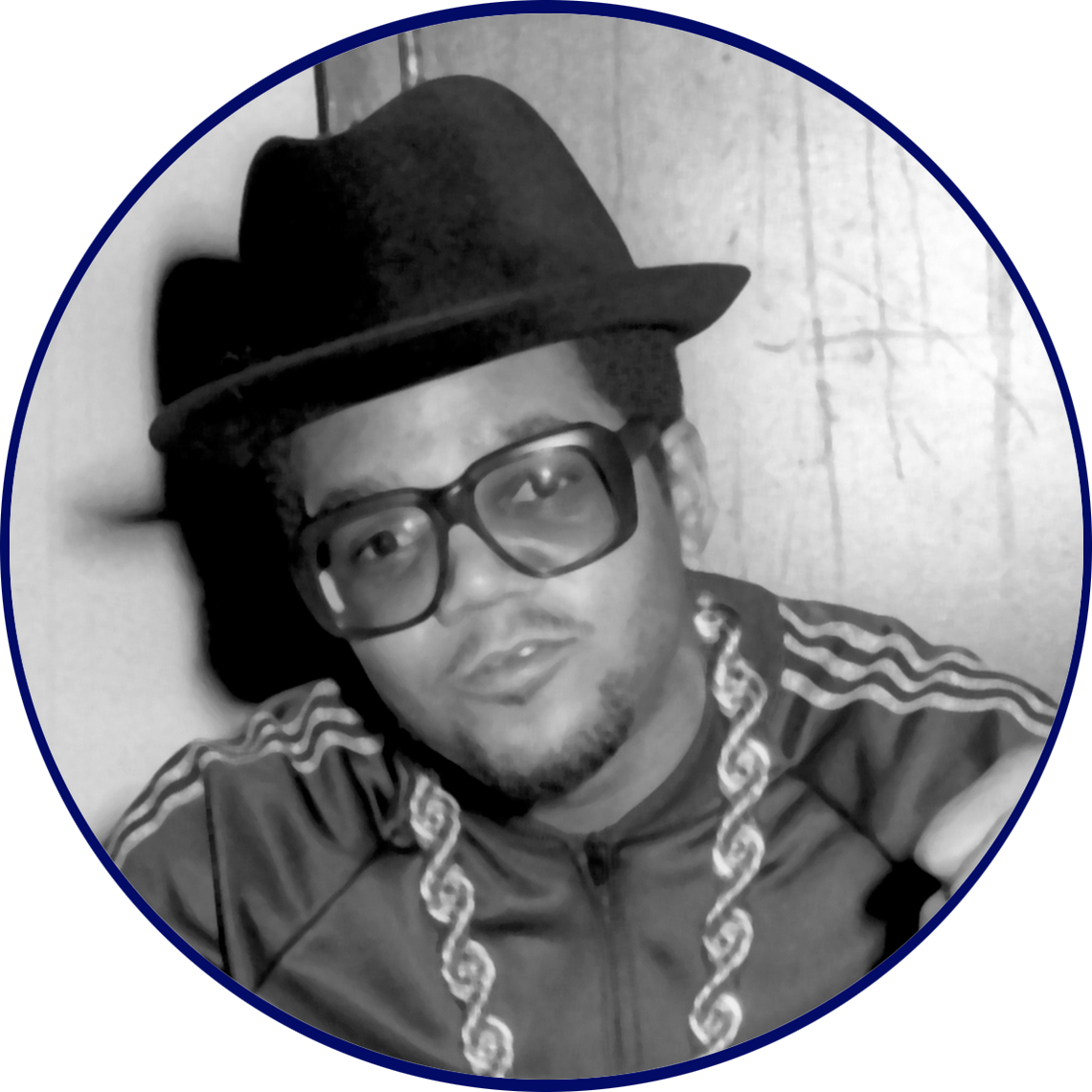 Photo: Ron Galella/Ron Galella Collection via Getty Images
Photo: Ron Galella/Ron Galella Collection via Getty Images
We’d go to either Pink Tea Cup or Sammy’s on City Island. We ate there every day. They always were able to cater to 20 or more people. Fried clams, lobster with butter, king-crab legs — that was the pig-out place. You’d leave there hurting, mad that you went to eat. We’d always get the same table: in the back, by the water, right before the deck. We were never outside. It was me and my people and Jay and his people. Everybody met at City Island. —As told to Ben Kesslen
Where Jack Kerouac and Allen Ginsberg Saw Through the Smoke
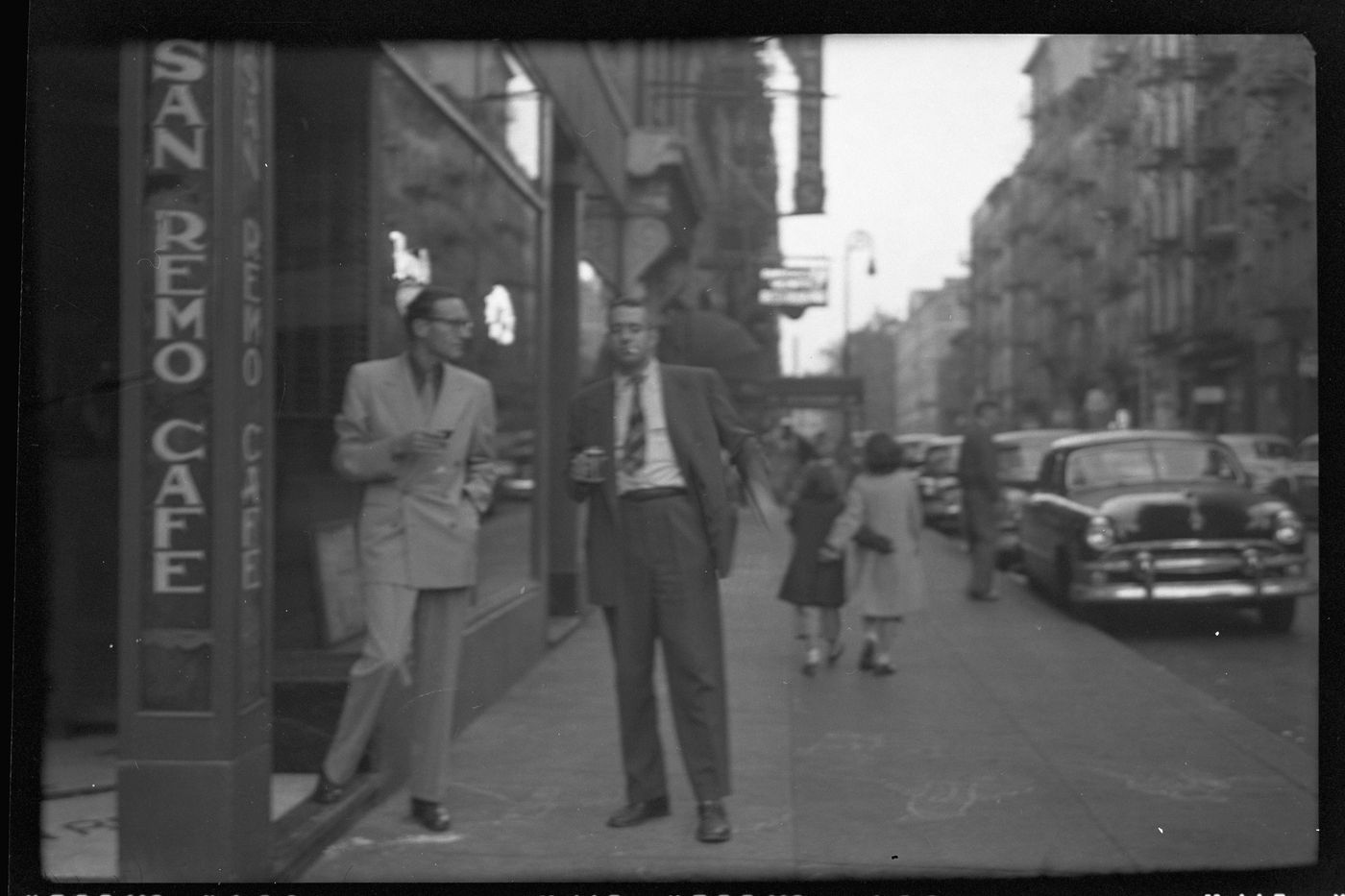 Photo: Allen Ginsberg
Photo: Allen Ginsberg
The writers and artists who loitered around Macdougal Street in the 1950s have been called a lot of things: “irresponsible tea heads,” Allen Ginsberg used to say; “subterraneans,” Jack Kerouac called them; and “real bastards,” according to the artist Mary Frank. To most people, though, they are and will forever be the Beats — a group united not so much by artistic style as by proximity and a desire to drink, do drugs, screw around, write, and repeat.
Where, then, did food fit into the equation? Mostly, it didn’t. To them, it was just “something they put in their mouth,” says Frank, who was married to the photographer Robert Frank, himself a part of the Beat crowd, for 19 years. The restaurants, cafés, and bars they frequented throughout their 20s served more as backdrops, places where they could “proselytize and argue,” Frank says. Ginsberg trolled the all-night cafeterias around what he referred to as the “lumpen world” of Times Square, seeking a bit of thrill and sleaze and occasionally picking up guys. He even briefly worked at Bickford’s on Fifth Avenue, busing tables and watching, as he later wrote in Howl, the best minds of his generation sink in its “submarine light.” Places like Caffè Reggio, Minetta Tavern, Cedar Tavern, and the jazz club Five Spot Café became frequent haunts but none more influentially than San Remo Café, on the corner of Bleecker and Macdougal.
In journals and letters, Ginsberg and Kerouac often refer to it simply as “Remo.” Frank, who “barely drinks now and didn’t drink at all then,” remembers it as a “corner filled with people,” though “you couldn’t hardly see anyone because of the smoke.” Wherever they went, she says, Kerouac, Ginsberg, William S. Burroughs, Gregory Corso, Lucien Carr, and whoever else happened to be tagging along with them attracted an audience. “They performed in the way they talked,” Frank says. “Especially Ginsberg, who had a voice like a rabbi.” The Living Theatre, Judith Malina and Julian Beck’s avant-garde troupe that was at the center of the early Off Broadway movement, was more or less founded in the San Remo. So were the casual flings the couple’s open marriage allowed.
Remo was where Kerouac embarked on a tryst with Gore Vidal, which the two wrote about separately in later books — Kerouac vaguely denying it happened and Vidal asserting it very much did. Remo was also one of the places Kerouac got into drunken brawls and Ginsberg nursed any number of crushes. “I would have liked to know you that night, wish I could have communicated who I was,” he wrote about seeing Dylan Thomas at the café in 1952. “Ran into Dick Davalos in Remo the other night, and we stared at each other and in low voices exchanged compliments,” he said in a letter to Kerouac. “It was always a drama,” says Frank. “And we were addicted to drama.”
Where Mambo Kings Jammed Every Night of the Week
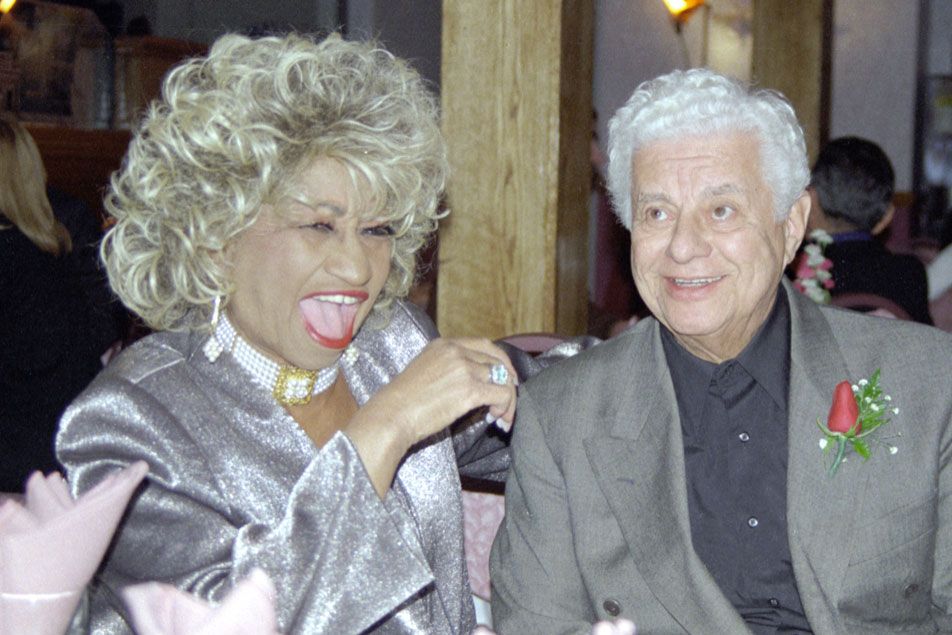 Photo: Joseph Conzo
Photo: Joseph Conzo
When Kenneth Giordano took over Willie’s Steakhouse, a restaurant in the shadow of the rattling 6 train on Westchester Avenue, he knew he wanted to feature live jazz. So to facilitate the descargas, he bought some instruments and left them onstage. Whoever came in could get up and play. Giordano counted the “King of Mambo” himself — Tito Puente — among his customers. “It became the epicenter of the Bronx,” says the music historian Joe Conzo Sr., who was Puente’s confidant and longtime friend. “Queen of Salsa” Celia Cruz, trumpeter Alfredo “Chocolate” Armenteros, flutist Dave Valentin, drummer Carlos “Patato” Valdes, Latin soul’s Joe Bataan, a young Marc Anthony, and Fania Records founder Johnny Pacheco were all regulars too. Al Pacino showed up with Puente when he was filming Carlito’s Way. As Conzo remembers it, Puerto Rican baseball star Orlando Cepeda walked in the same night. “These guys are cursing at each other, joking with each other,” he remembers. “They were letting their hair down.” Word quickly got out that whenever Puente was in town, and no matter where else he was playing — Copacabana, El Morocco, Latin Quarter, or even Jimmy’s Bronx Café — he would eventually end up at Willie’s and diners would get a free show with their bistec encebollado. On those nights, Conzo says, Willie’s felt like the center of the universe: “When he got on those timbales, forget about it.”
Where You Had to Get Past Two Velvet Ropes
One winter night in 1993, when I was 29 and still finding my way, a man I’d been seeing tried to impress me, I think, by taking me to Café Tabac. Of course, I’d heard of it. The gossip columns were full of items about the glamorous shenanigans going on nightly at the funky-looking little bistro on East 9th Street, opened the previous year by Roy Liebenthal, a soulfully handsome 28-year-old model, and his business partner, Ernest Santaniello. Madonna, Bono, and the so-called Trinity — Naomi Campbell, Linda Evangelista, and Christy Turlington — were showing up on a regular basis. “It was like lightning striking the gold pot and the gold pipes burst open and all the gold coins spill out. That’s what it was,” the journalist George Wayne has said.
My eyes growing wide as Lucy’s at the Brown Derby, I saw Robert De Niro come in wearing a leather duster and go upstairs with Harvey Keitel and some women in furs. Then Jim Jarmusch arrived, followed by Willem Dafoe, Steve Buscemi, and Iggy Pop, like some Reservoir Dogs–inspired fever dream. Then I saw the Trinity lope in and climb the stairs, all laughing and smiling as if being that beautiful was even more fun than it seemed.
And there was Debi Mazar. Oh my God, I thought, does this mean Madonna’s coming?
I resolved in the middle of dinner that I had to somehow get up those stairs and into the inner sanctum, which had its own velvet rope, followed by a curtain, then another velvet rope. My date had only enough clout to score us a table downstairs — no small feat, but suddenly it wasn’t enough. So I told this guy (an older British journalist who resembled the avuncular actor Stephen Fry, ascot and all) that I was going to the ladies’ room.
And then — quickly working out that it wasn’t my youth or cuteness that would gain me entry but knowing someone up in the exclusive room — I told the doorman at the stairs that I was Jarmusch’s cousin and on my way to meet him. Both ropes (and the curtain) magically opened. (I guess it must have seemed impossible that anyone would make up a story that ridiculous?)
The rest of that night stays in my mind like glossy stills shot by some great nightlife photographer. I remember looking around and thinking, I want to write about this someday.
Where Downtown Brooklyn Went for Fries After School
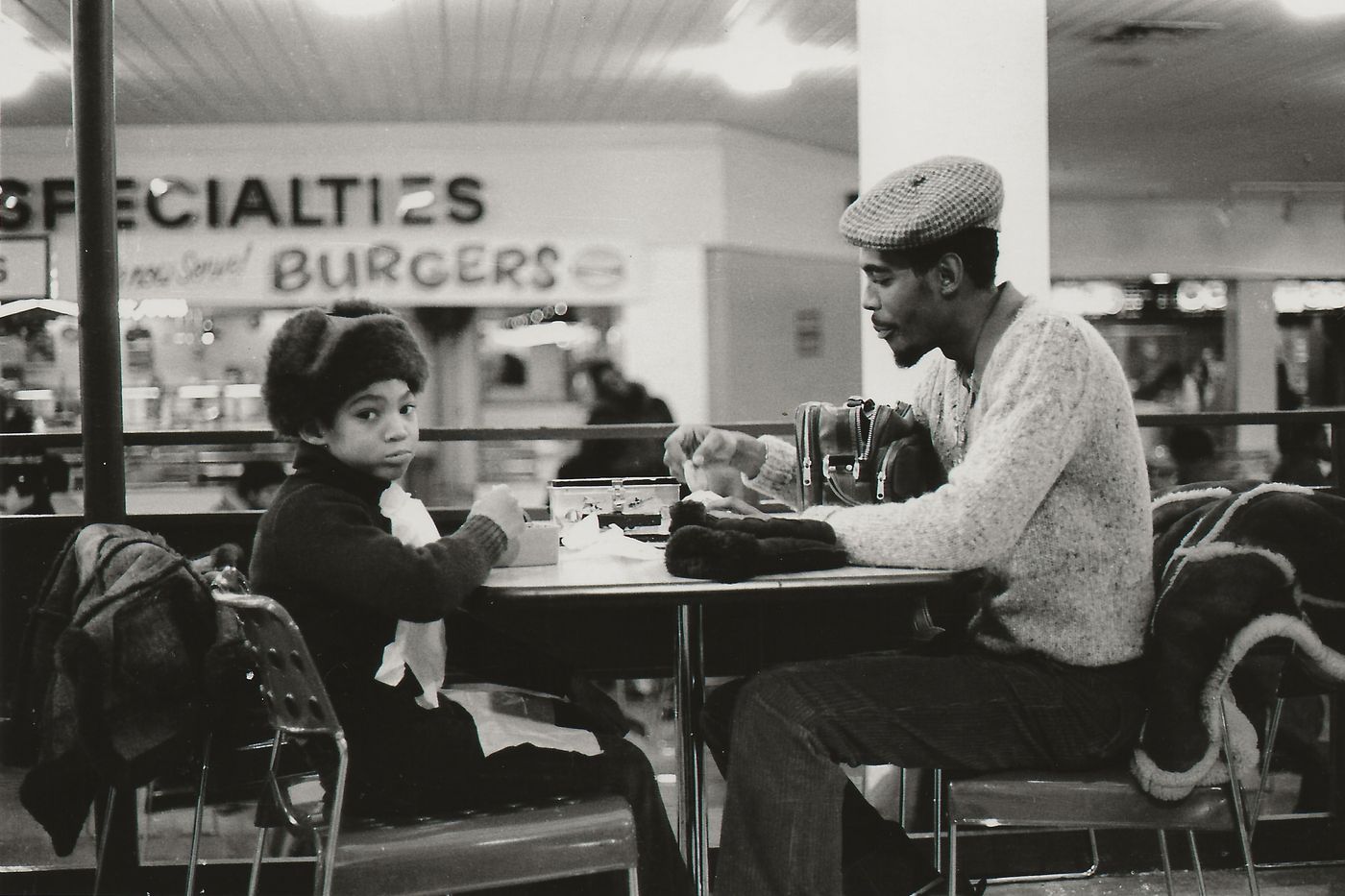 Photo: Jamel Shabazz
Photo: Jamel Shabazz
Imhotep Bey and his son Kaseem dropped by the food court inside the mall — now the site of City Point — after school in 1982. (Biz Markie released his song “Albee Square Mall” a few years later.) Jamel Shabazz, the photographer who caught them on that day, reconnected with Kaseem in 2003. “He grew up to be a fine young man,” Shabazz says.
Where an Art Collective Ate Cheap Fish Balls
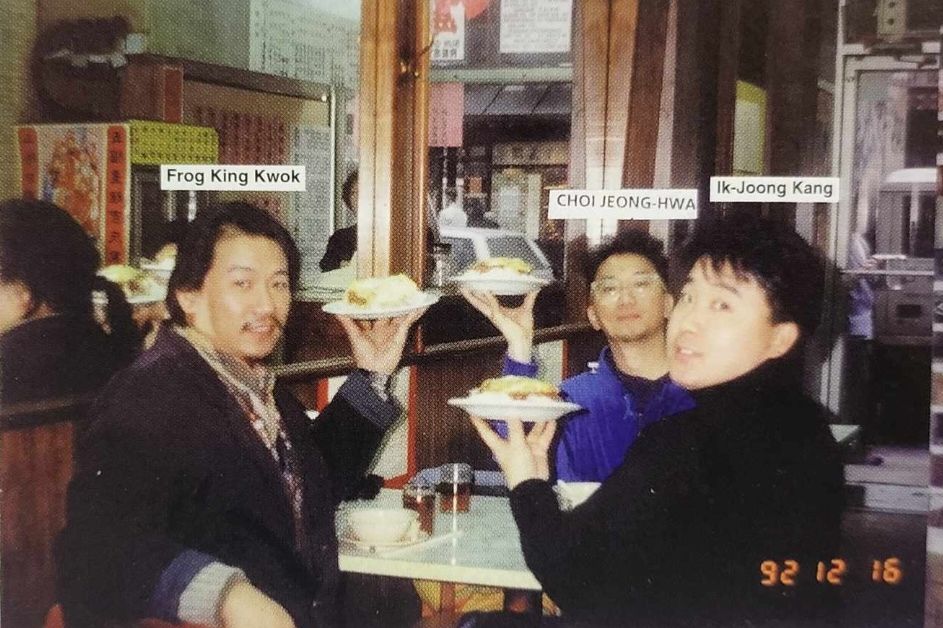 Photo: Frog King Kowk
Photo: Frog King Kowk
They called it Tuesday Lunch Club, a hang with the regularity of a sacrament. Just about every week starting in the late ’80s, the artists Bing Lee and Ik-Joong Kang would round up a crew of friends like Martin Wong, Ken Chu, and Arlan Huang to meet at a rotating series of Chinatown spots. There was Tai Tung, where the Hong Kong chef knew to lace his fish balls with orange peel and seaweed. Or Yuen Yuen, where their performance-artist friend Frog King used to write out the daily menu for the restaurant in exchange for a free meal. Or Canal Seafood, where Kang liked to order the squid. “The criteria was ‘affordable.’ Food has to be good. And,” says Lee, “that the waiter or waitress doesn’t bother us. If they kick us out when we finish, it won’t work.”
“And nobody really talked about art,” says Kang. “You talked about food!”
But they were making art — a lot of it. They were part of a churning, bubbling downtown scene full of ambitious Asian painters, sculptors, dancers, and performance artists whom at that point the mainstream art world mostly ignored. They ate. And they shared frustrations.
Soon, they started to channel those frustrations into action: In 1990, Lee, Chu, and the artist and scholar Margo Machida, among others, formed Godzilla, a collective they called an Asian American Arts Network, which they wanted to use to get more shows and more critical attention for Asian American artists. Godzilla grew quickly, since anybody who came to a meeting was automatically considered a member. It organized shows and publications and in 1991 widely distributed an open letter they’d written to David Ross, the director of the Whitney Museum, pointing out that the Biennial that year included only one Asian American artist. It got results — that letter, and their subsequent meeting with Ross, is one of many reasons why the 1993 Biennial included more Asian American artists than ever before.
Godzilla stopped meeting shortly after 9/11. But Lee and Kang still get lunch. Now 75 and 64, respectively, they like to meet at Spongies on Baxter Street, where they linger over a $1 Hong Kong–style sponge cake before they decide where to go for the main event. Kang says that to him, their regular meals together are “more important than Godzilla. The spirit is different. It’s not about showing what we believe. It’s about the heart.” He laughs. “And the mouth. And the stomach.”
Where I Asked Brad Pitt to Wait for a Table
Tucked on the quiet corner of Commerce and Barrow Streets in the West Village, across from two identical townhouses separated by a shared gated garden (fancifully rumored to have been built for warring twin sisters) and a few doors down from the Cherry Lane Theatre, was Grange Hall.
I was hired as a waiter before it opened in 1992, which, at the time, was something of a surprise. Typically, restaurants had a stunning Black woman at the host stand, eye candy for the white male patrons, but Black men were mostly relegated to being busboys or barbacks, even in bohemian downtown. Luckily, one of Grange’s owners, Jacqui Smith, took a shine to me.
Grange served comfort food in a Great Depression–speakeasy type setting — down to the portrait of FDR over the bar and the Berenice Abbott photography. (Abbott had lived in an apartment above the restaurant decades prior.) With its refurbished wood-and-leather booths, vintage wall sconces, and stunning bar, Grange had a warm glow of comfort and privacy without the pretense that usually goes with that. Those were
the last days of indoor smoking at restaurants, and the walls had a cigarette patina.
It immediately became popular: Lou Reed and Laurie Anderson, seemingly in a state of unease, liked to sit at one of the three bar booths, gazing contemplatively out the window; Rosie Perez preferred the dining room. Matthew Broderick had exquisite taste in wine and liked the booth nearest the kitchen door. He was always cordial, which I suppose one has to be when dining with one’s mother, which he often did.
By 1994, I had stopped waiting tables and become the weekend brunch manager (it gave me more time to work on my first novel, The View From Here). One sunny afternoon, rays filtering through the vintage milk bottles used as flower vases, Brad Pitt walked in holding the hand of Gwyneth Paltrow. I sensed a shift in the energy in the bar area before I even saw them. He demurely made his way through the crowd to the host stand and asked for a table for two. I scanned the dining room, assessing the progress of tables, and looked at my list. “That’ll be about 20 minutes,” I said. There was a pause. Perhaps three seconds, which can be a long time. He didn’t say anything. I didn’t say anything. Paltrow didn’t say anything. “Would you like to put your name down?” I asked. He looked to his side at her. “Yes,” he said, then after a shorter pause, as if embarrassed to even mention it, but almost appreciative, he said, “Brad.” I wrote it down, and they made their way back through the bar crowd, past the vintage telephone booth, and exited the bar entrance.
What stood out was not the two of them but how others reacted. Didn’t I know they were rumored to be dating? These were the years before smartphones made everyone a roving reporter and social-media paparazzo. Had it been dinner, I think no one would have cared, but at brunch, without the cloak of night, people easily notice. One woman even said, “You could have given them our table.”
For a moment, I thought, Perhaps I’d made a mistake. I must have, the way everyone around me was behaving. Surely, having them there would be good for business. This was on my mind as I glided through the dining room, clearing tables, to get the next guest in. Then I immediately let it go. They weren’t regular customers. I had to keep it moving.
Still, when they returned 20 minutes later, I was relieved. Not just for the sake of the restaurant but because they’d chosen to come back. Humility. A table had just opened up. I seated them and continued on my way. The energy immediately returned to normal. No one gawked. The rest of the day went off without a hitch. Days later, I found out that someone had called “Page Six.” I was sorry someone invaded their privacy, yet, in a way, I was pleased. I knew it would make my job easier. If Brad and Gwyneth can wait, trust and believe, so can you. “Name?”
Where Political Power Wheeled and Dealed
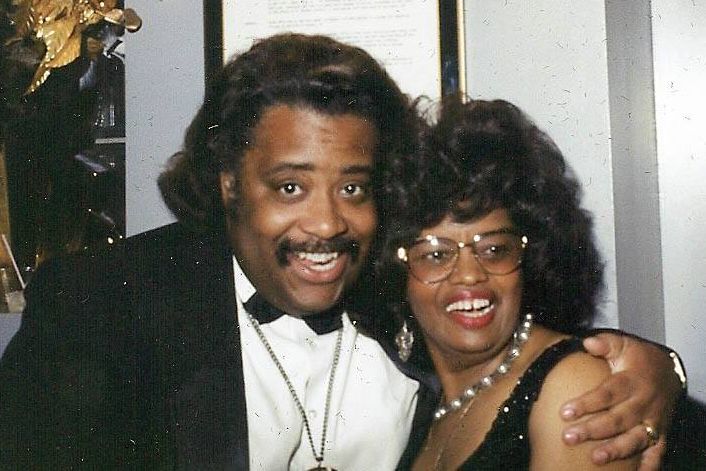 Photo: Courtesy of Sylvia’s Restaurant
Photo: Courtesy of Sylvia’s Restaurant
1950s: Joe’s Restaurant in Brooklyn Heights
The spacious two-story diner near Borough Hall with an exhaustive menu and surf-and-turf specialties attracted politicians, Catholic organizations, and civic groups to its banquet tables. Joe’s most famous patron was Dodgers co-owner Branch Rickey, who had discussed signing Jackie Robinson at his favorite table. It was torn down in 1959 to make way for Cadman Plaza West.
1960s: Antun’s in Queens Village
The catering hall appealed to Democratic bigwigs and labor leaders who needed a banquet room spacious enough to fête governors and senators. JFK stopped by for a women’s luncheon three days before the 1960 election to shore up the Irish American voting bloc in what was then a key swing state. “Everything is always pretty good there,” says former Queens congressman Joe Crowley. “For a catering hall, they had excellent seafood.”
1970s: Foffe’s in Brooklyn Heights
After Meade Esposito became the state’s most powerful Democratic leader, he summoned aspiring candidates and judges he backed to lunch at a table facing the front window so he could see who was coming in. The Italian trattoria specialized in wild game, and Esposito frequently recommended a veal dish named after him. Sometimes he even dined with reporters, telling one Timesman in 1972 that if he didn’t like the story, he’d “break his ankles.”
1980s: Gargiulo’s in Coney Island
While Manhattan elites hobnobbed at Elaine’s or the Rainbow Room, Brooklyn bosses preferred a family-run red-sauce joint that hadn’t changed much since 1907. Anthony Genovesi made judges and legislators over antipasto, while Brooklyn’s health-conscious borough president Howard Golden preferred roast chicken with broccoli rabe. Party functionaries trekked to Coney Island for fundraisers, although the banquet hall was also a favorite of developer Fred Trump, whose son Donald would tag along with him.
1990s: Sylvia’s Restaurant in Harlem
When David Dinkins became the city’s first Black mayor in 1990, Sylvia’s — already a landmark that had been open nearly three decades — became a second City Hall. “Lunches were scheduled, but breakfasts were more organic,” former governor David Paterson says. “You went there, you looked up the three to four people you were going to interact with that day, and you all kind of changed seating to talk about issues you’d deal with later.” Harlem’s next generation of political leaders — Paterson, Greg Meeks, Keith Wright, and Al Sharpton — were regulars. “Reverend Jackson, who was a soul-food connoisseur, would sit and lecture me on who I should become,” Sharpton recalls.
2000s: City Hall Restaurant in Tribeca
The bistro’s tall ceilings, cozy booths, and brass fixtures embodied the clubby atmosphere of the Bloomberg era, when technocrats and the lobbyists seeking to influence them gathered. It opened in 1998 but earned enormous goodwill among the political class for being one of the few downtown spots to stay open after 9/11. “I remember the scene a lot better than the food,” Bloomberg’s former deputy mayor Howard Wolfson says.
Where JFK Jr. Ordered Oatmeal Next to His Stalkers
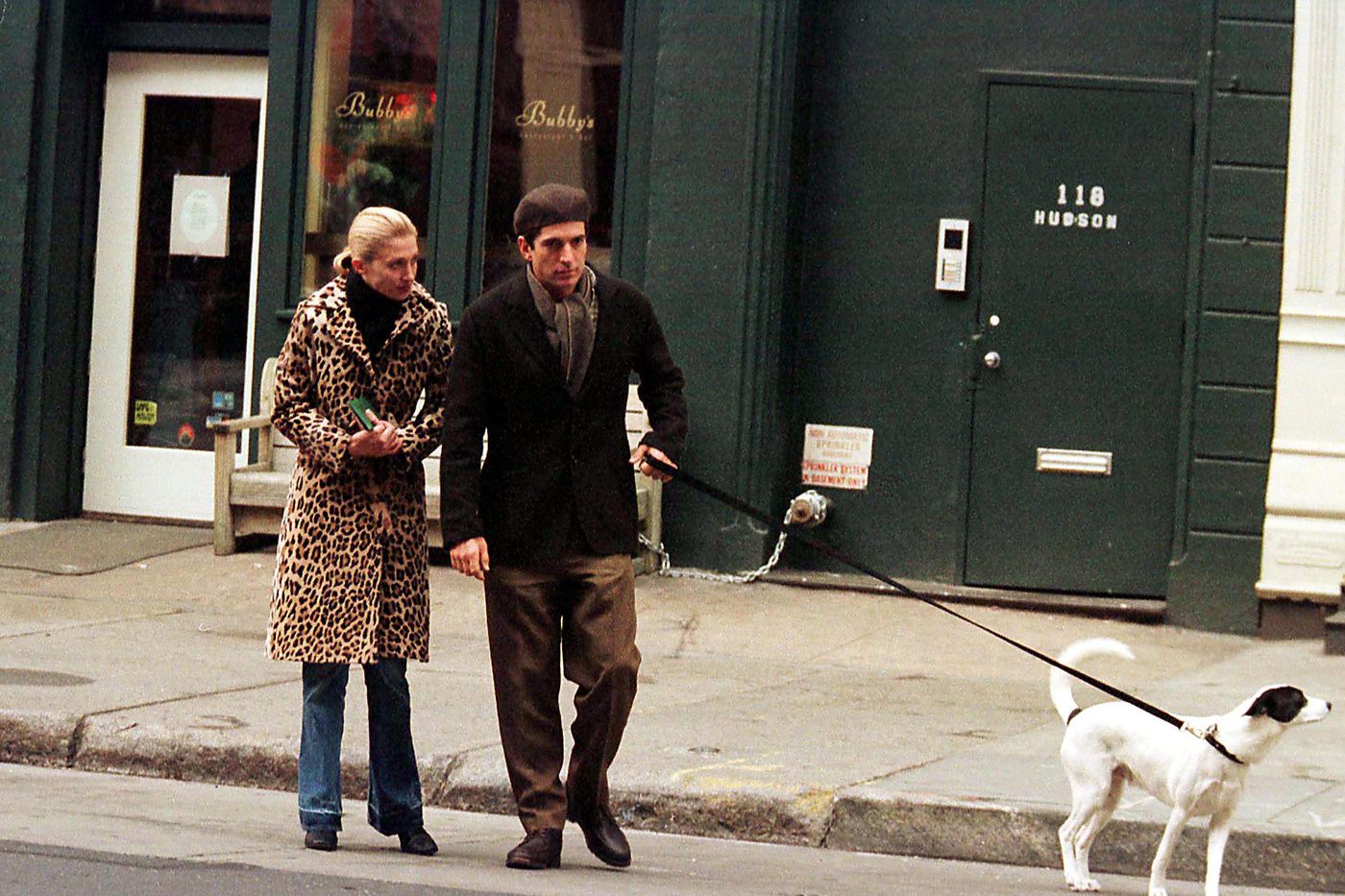 Photo: Globe Photos/ZUMA Wire
Photo: Globe Photos/ZUMA Wire
Nineties Tribeca had a local god, and he was JFK Jr. Everyone in the neighborhood knew that he jogged shirtless through the still-cobbled streets, that he became a regular at Mary Parvin’s salons at the newsstand–slash–Oriental-rug shop she operated on Hudson. And while he was said to drop in at Walker’s, you would more reliably find him at Bubby’s one block west, which Ron Silver opened in 1990 to sell his pies before it grew into one of the neighborhood’s most durable restaurants. “He came in on the second day that we were open,” Silver says. And he ate his last breakfast there before his plane crash. Kennedy was a regular. Sometimes alone, often with Carolyn. “I would be reading the New York Post, some sort of John-John story, and I would feel, like, hot air on my neck,” Silver says. It was Kennedy, reading over his shoulder. Silver would tell him, “Dude, there’s a fucking paper right over there.” Once Kennedy and the former Carolyn Bessette married, in 1996, the media attention only increased. Carole Radziwill, the journalist and latter-day Real Housewife, recalled ordering delivery from Bubby’s with Carolyn while a crush of paparazzi waited outside. At the restaurant, “there might be a stalker,” Silver concedes. “I wasn’t going to throw them out just for being stalkers — I felt a responsibility to try to manage it.”
Where Artists in Illegal Lofts Ate Grass Fed Burgers
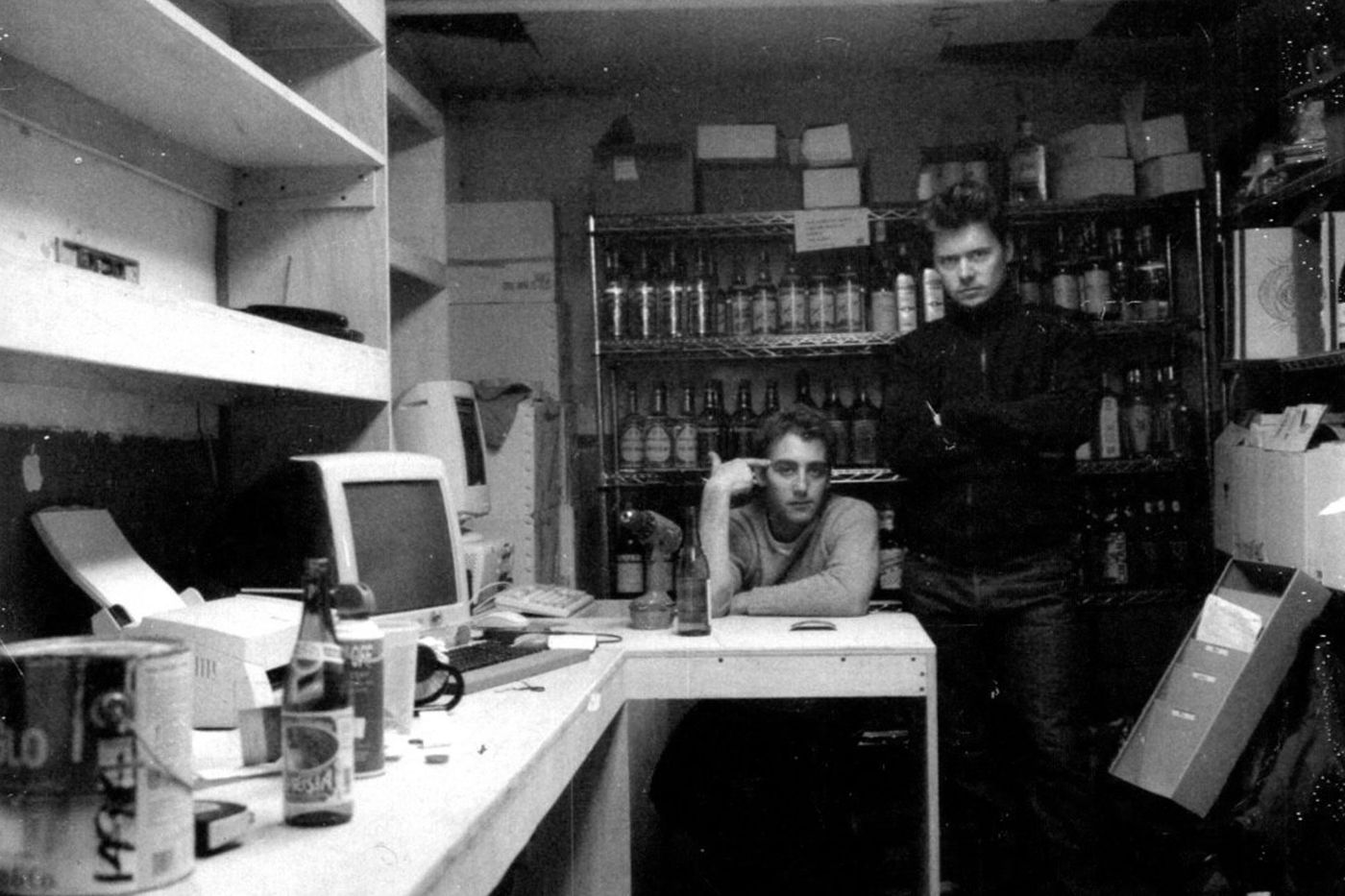 Photo: Courtesy of Diner
Photo: Courtesy of Diner
When Diner opened in 1998 in a dining car that had been sitting empty just south of the Williamsburg Bridge, it wasn’t entirely clear who its actual diners might be. Shoppers at the nearby thrift store Domsey’s, maybe? Owners Andrew Tarlow and Mark Firth hadn’t known that the Gretsch, the battleship-size guitar factory across the street, was full of artists living there illegally. “There weren’t a lot of restaurants,” remembers Casey Spooner, who ate there daily while recording the Fischerspooner album #1. For a very brief bohemian moment, Diner was a world-class distillery of high-proof cool. The fashion editor Cecilia Dean brought Hedi Slimane there in a Town Car looking for “pasty-white lanky rock-and-roll hipsters” to model. In May 2000, a pop-up version, with actual Diner diners flown in to hang out, was installed at the Färgfabriken in Stockholm.
Where You Wanted to Be in the Smoking Section
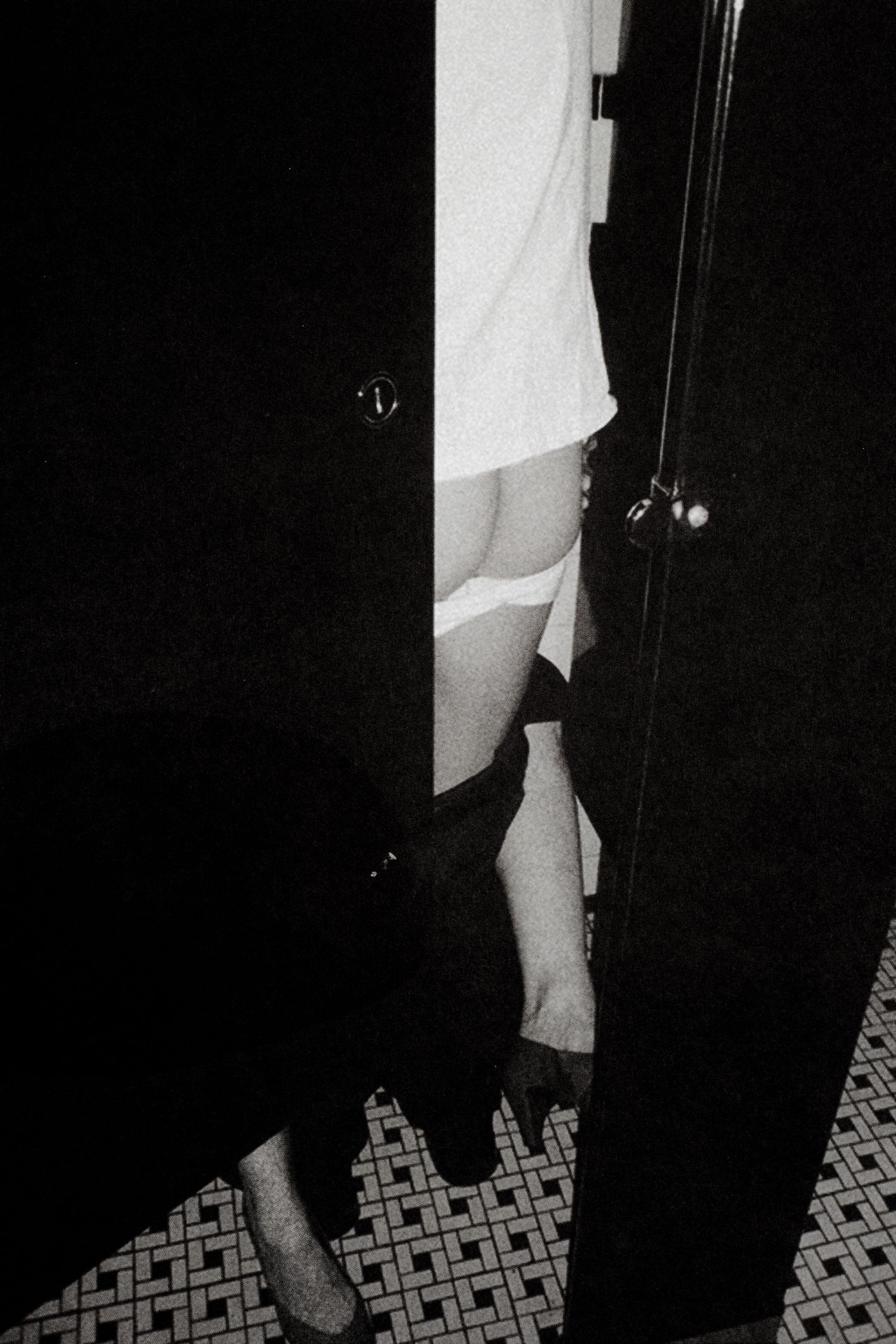 Photo: Anonymous, Courtesy of Indochine
Photo: Anonymous, Courtesy of Indochine
Right out of the gate, Indochine was one of the hottest spots in the city — alongside Area and Danceteria. But while those places were wild and messy, Indochine, which served Vietnamese food from its perch on Lafayette Street, was chic. The opening-night crowd in 1984 included Andy Warhol, Jean-Michel Basquiat, and Kenny Scharf. Debi Mazar visited throughout the ’80s, sometimes with Madonna in tow. “I loved walking up those stairs with the red light,” Mazar recalls. “And then there’s some gorgeous model going, ‘Hello, let me take you to your seat.’ And me just going, Why can’t I look like her? Why is she a waitress?” (The staff has long been intimidatingly gorgeous. “Whoever did the hiring must’ve been a casting director,” Bethann Hardison told me.)
You could see U2 sitting in a booth listening to a cassette of their still-unreleased record on a boom box, or an extremely pregnant Sarah Jessica Parker dining with husband Matthew Broderick the night before giving birth to their son, James. (Gossip columnists called the restaurant the next day asking if she’d eaten something spicy that triggered the labor.) One night when I was there with my favorite bodybuilder bottom gay porn star who was in town to film a gang bang, the king and queen of Sweden were in another booth with their daughter Madeleine. Willem Dafoe liked to sit at the bar behind the giant floral arrangement, where he would study the script for the play he was working on. Donatella Versace liked a table in the back when she brought her family in for Sunday dinners.
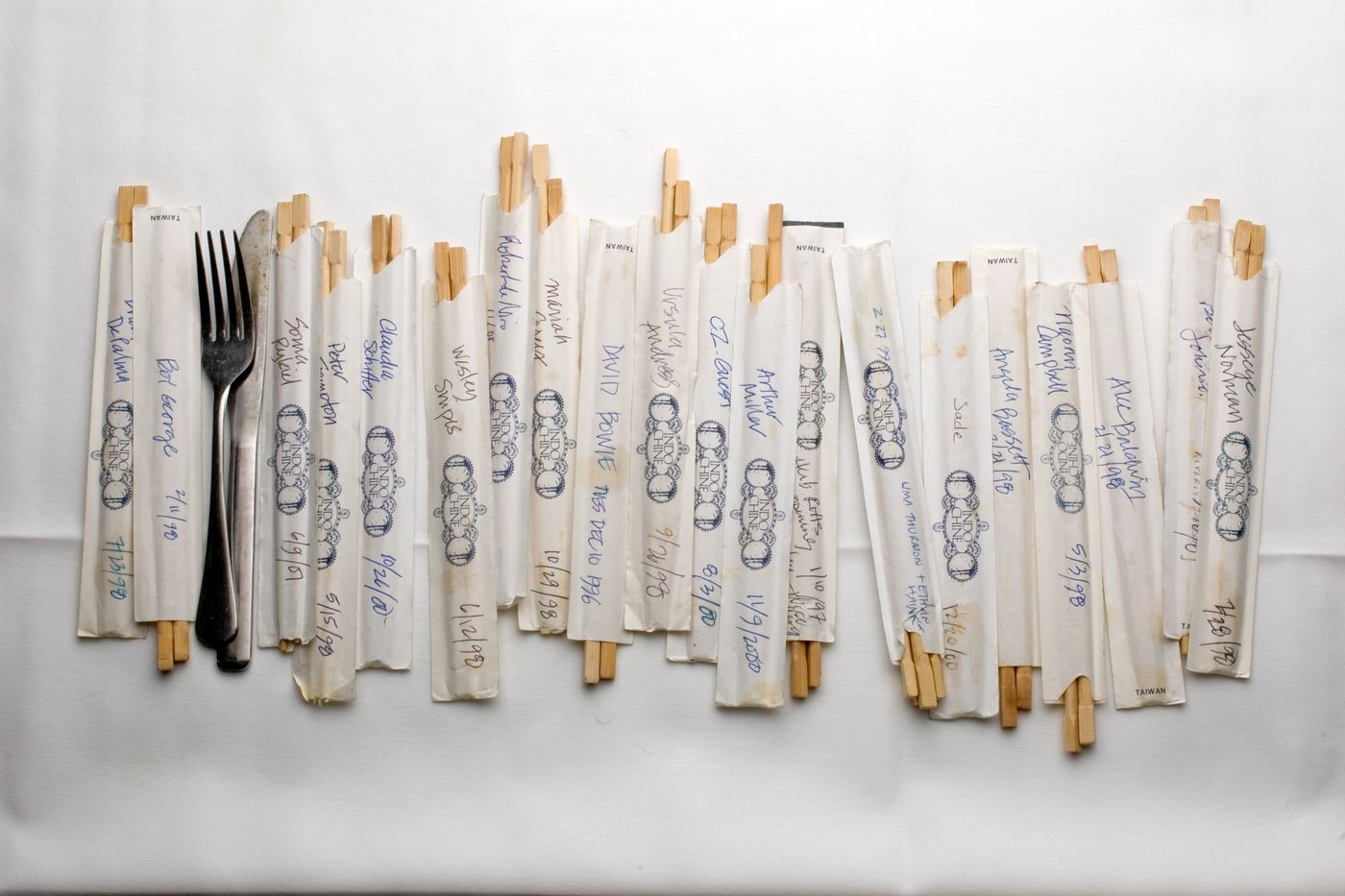 Photo: Mark Higashino
Photo: Mark Higashino
Jorg Rae, the bartender turned manager, remembers the time Catherine Deneuve almost didn’t get a seat. “I was standing at the door, and I see her just peeking into the window. The bar’s crowded and busy, and I see her turning around and leaving. I was thinking, Not on my watch. And I ran after her and I was like, ‘Miss Deneuve, were you looking for a table?’ She said, ‘Yes, but it looks very crowded.’ I said, ‘No, I have a great table for you.’ And she goes, ‘Well, can I smoke there?’ I said, ‘But of course.’”
Pre-Bloomberg, the restaurant was blanketed in smoke. “Indochine was always a restaurant where people smoked because cool people smoked back then,” Jean-Marc Houmard says. (He has run the restaurant since 1992, when owner Brian McNally sold it to him and two fellow employees, Michael Callahan and chef Hui Chi Le.) This applied to the staff, too: “They would light the cigarettes in between taking orders, and the bartenders would smoke in between shaking cocktails — and when there was that law that you had to have a nonsmoking section, the best tables were always in the smoking section. I remember these two old ladies, they were in their 80s, they came in, and I asked if they wanted to be in the nonsmoking section, and they said, ‘No, no, we want to be in the smoking section even though we don’t smoke because that’s where everybody who is interesting sits.’”
More on ‘Who ate Where’
All Rights Reserved. Copyright , Central Coast Communications, Inc.